Forums
- Forums
- Axis And Allies Forum
- General Discussion
- Aviation News
Aviation News
Post a reply
- Go to Next topic
- Go to Welcome
- Go to Introduce Yourself
- Go to General Discussion
- Go to Screenshots, Images and Videos
- Go to Off topic
- Go to Works in Progress
- Go to Skinning Tips / Tutorials
- Go to Skin Requests
- Go to IJAAF Library
- Go to Luftwaffe Library
- Go to RAF Library
- Go to USAAF / USN Library
- Go to Misc Library
- Go to The Ops Room
- Go to Made in Germany
- Go to Campaigns and Missions
- Go to Works in Progress
- Go to Juri's Air-Raid Shelter
- Go to Campaigns and Missions
- Go to Works in Progress
- Go to Skinpacks
- Go to External Projects Discussion
- Go to Books & Resources
-
 Main AdminINDIAN OCEAN ? U.S. Navy Sailor Petty Officer 3rd Class Alexander Turla, an airman with the Essex Amphibious Ready Group (ARG), launches an F-35B Lightning II from Marine Fighter Attack Squadron 211, 13th Marine Expeditionary Unit (MEU), aboard the Wasp-class amphibious assault ship USS Essex (LHD 2), September 3, 2018. The Essex is the flagship for the Essex ARG and, with the embarked 13th MEU, is deployed to the U.S. 5th Fleet area of operations in support of naval operations to ensure maritime stability and security in the Central Region, connecting the Mediterranean and the Pacific through the western Indian Ocean and three strategic choke points. (U.S. Marine Corps photo by Cpl. A. J. Van Fredenberg/Released)
Main AdminINDIAN OCEAN ? U.S. Navy Sailor Petty Officer 3rd Class Alexander Turla, an airman with the Essex Amphibious Ready Group (ARG), launches an F-35B Lightning II from Marine Fighter Attack Squadron 211, 13th Marine Expeditionary Unit (MEU), aboard the Wasp-class amphibious assault ship USS Essex (LHD 2), September 3, 2018. The Essex is the flagship for the Essex ARG and, with the embarked 13th MEU, is deployed to the U.S. 5th Fleet area of operations in support of naval operations to ensure maritime stability and security in the Central Region, connecting the Mediterranean and the Pacific through the western Indian Ocean and three strategic choke points. (U.S. Marine Corps photo by Cpl. A. J. Van Fredenberg/Released)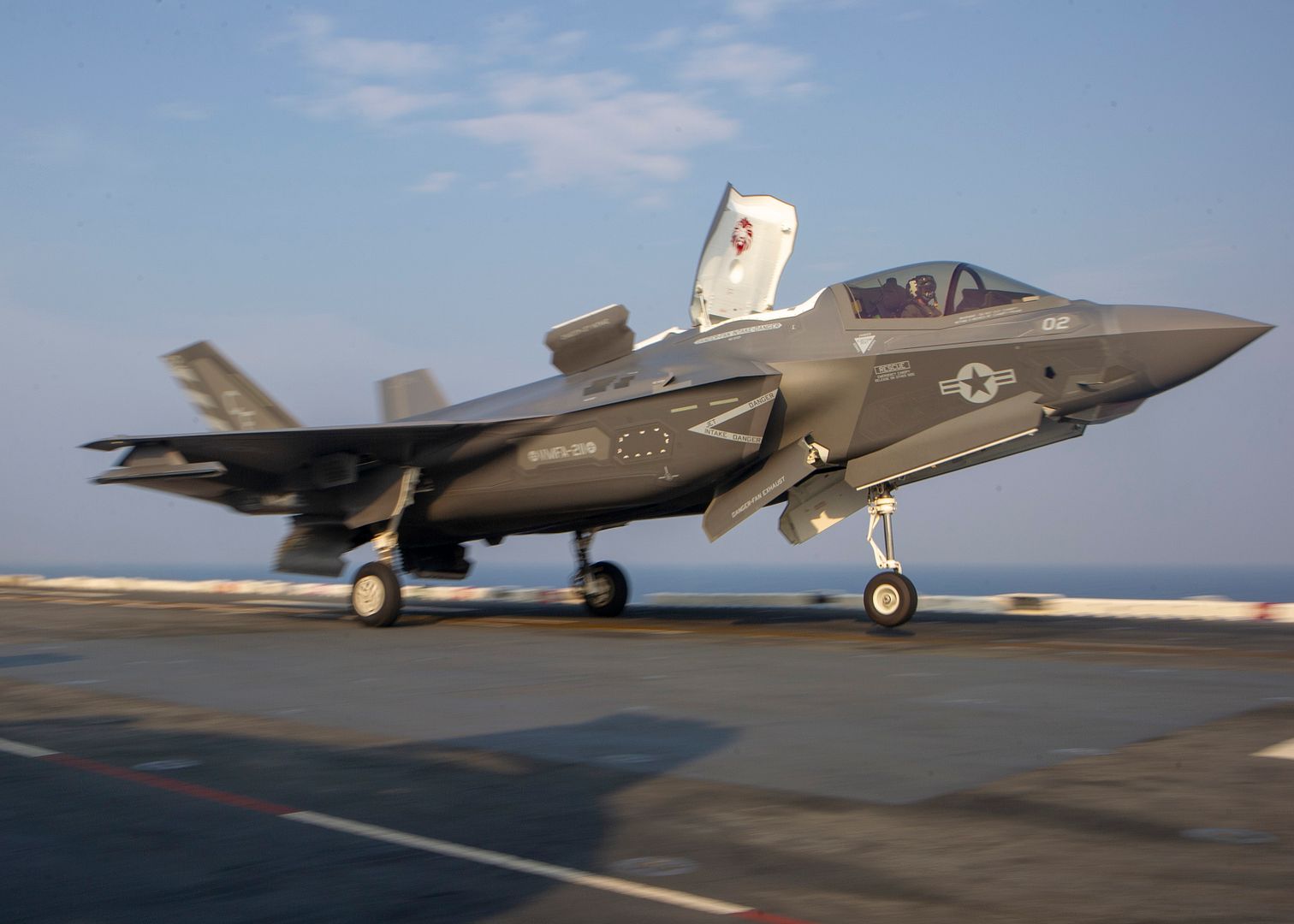
(Left to right) Senior Airman Timothy Sherman, Airman 1st Class Corey Conner and Staff Sgt. Brandon Bennett, 389th Fighter Squadron, recover an F-15E Strike Eagle Aug. 15, 2018, at Hill Air Force Base, Utah. The 389th FS at Mountain Home Air Force Base, Idaho, were at Hill AFB to participate in the Air Force?s Weapons System Evaluation Program known as Combat Hammer. (U.S. Air Force photo by Todd Cromar)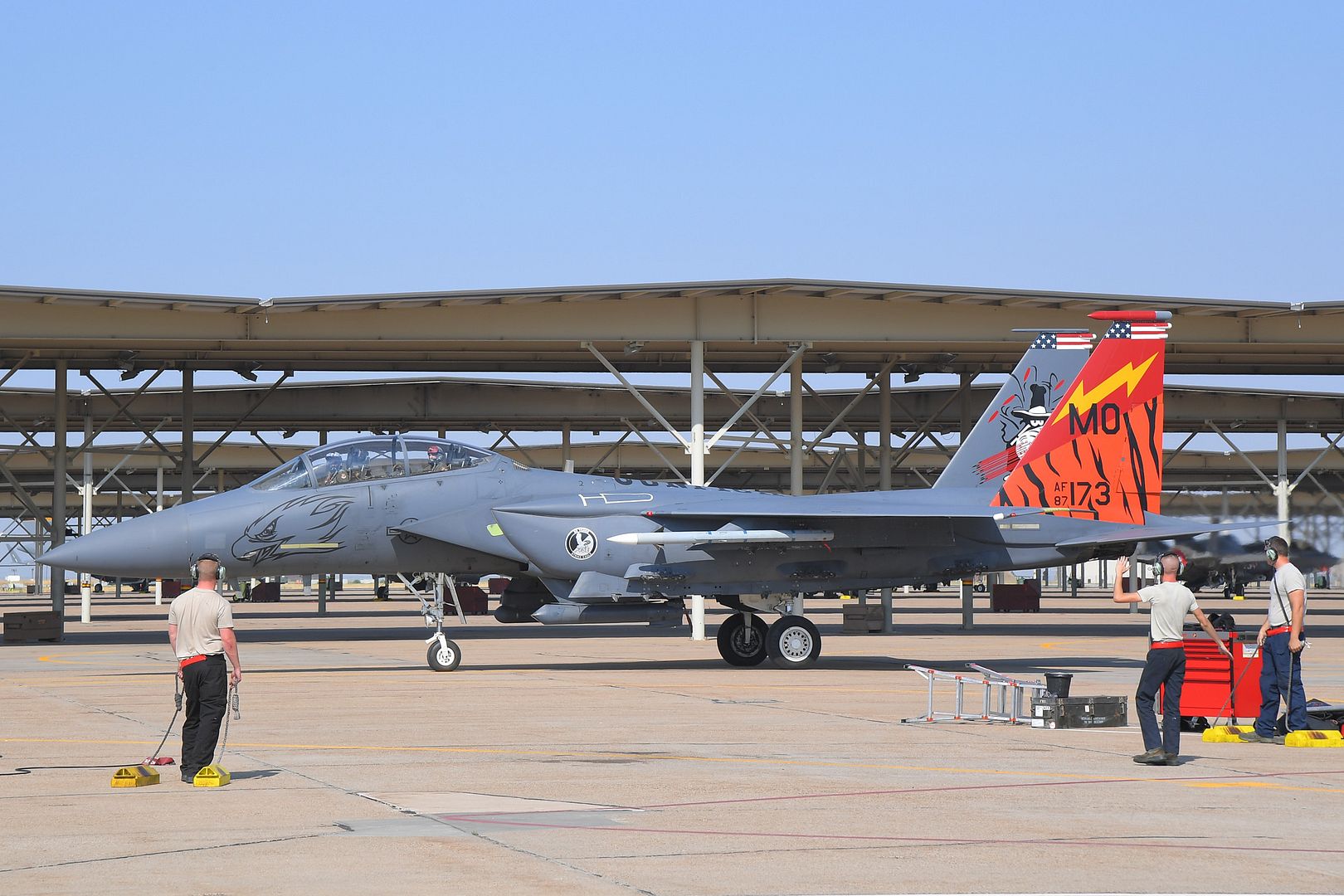
F-15E Strike Eagles from the 389th Fighter Squadron on the ramp, Aug. 15, 2018, at Hill Air Force Base, Utah. The 389th FS from Mountain Home AFB, Idaho, was at Hill AFB to participate in the Air Force?s Weapons System Evaluation Program known as Combat Hammer. (U.S. Air Force photo by Todd Cromar)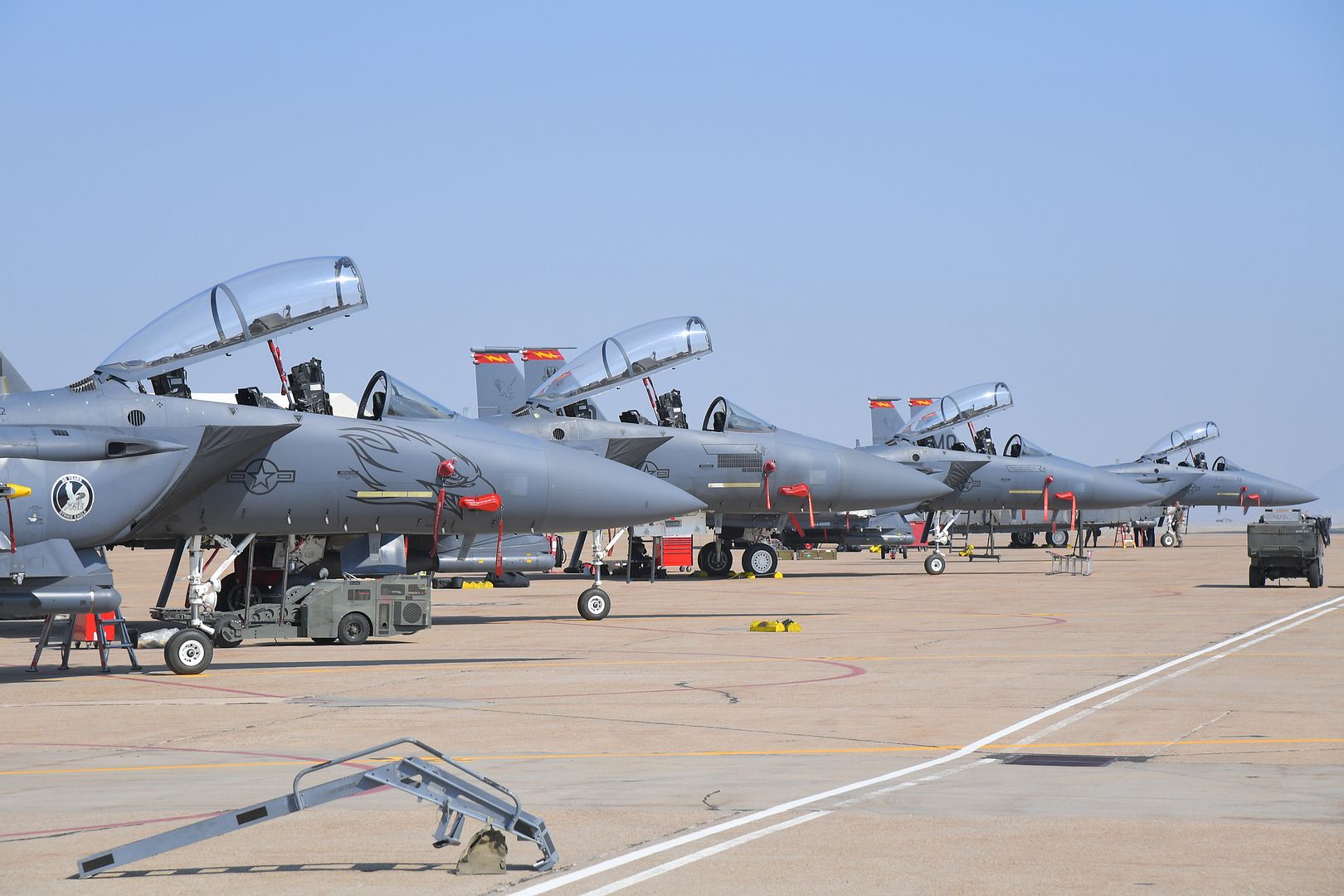
A U.S. Air Force F-22 Raptor from the 95th Fighter Squadron, 325th Fighter Wing, Tyndall Air Force Base, Fla., taxis on the flightline at Spangdahlem Air Base, Germany, Aug. 29, 2018. The Raptor prepared to depart after being deployed to Europe as a part of the European Deterrence Initiative, assuring allies of the Air Force's commitment to European security and stability. (U.S. Air Force photo by Airman 1st Class Valerie Seelye)
A U.S. Air Force F-22 Raptor from the 95th Fighter Squadron, 325th Fighter Wing, at Tyndall Air Force Base, Fla., taxis on the flightline at Spangdahlem Air Base, Germany, Aug. 29, 2018. The F-22s are heading back home after completing a Flying Training Deployment with other NATO partners. (U.S. Air Force photo by Airman 1st Class Branden Rae)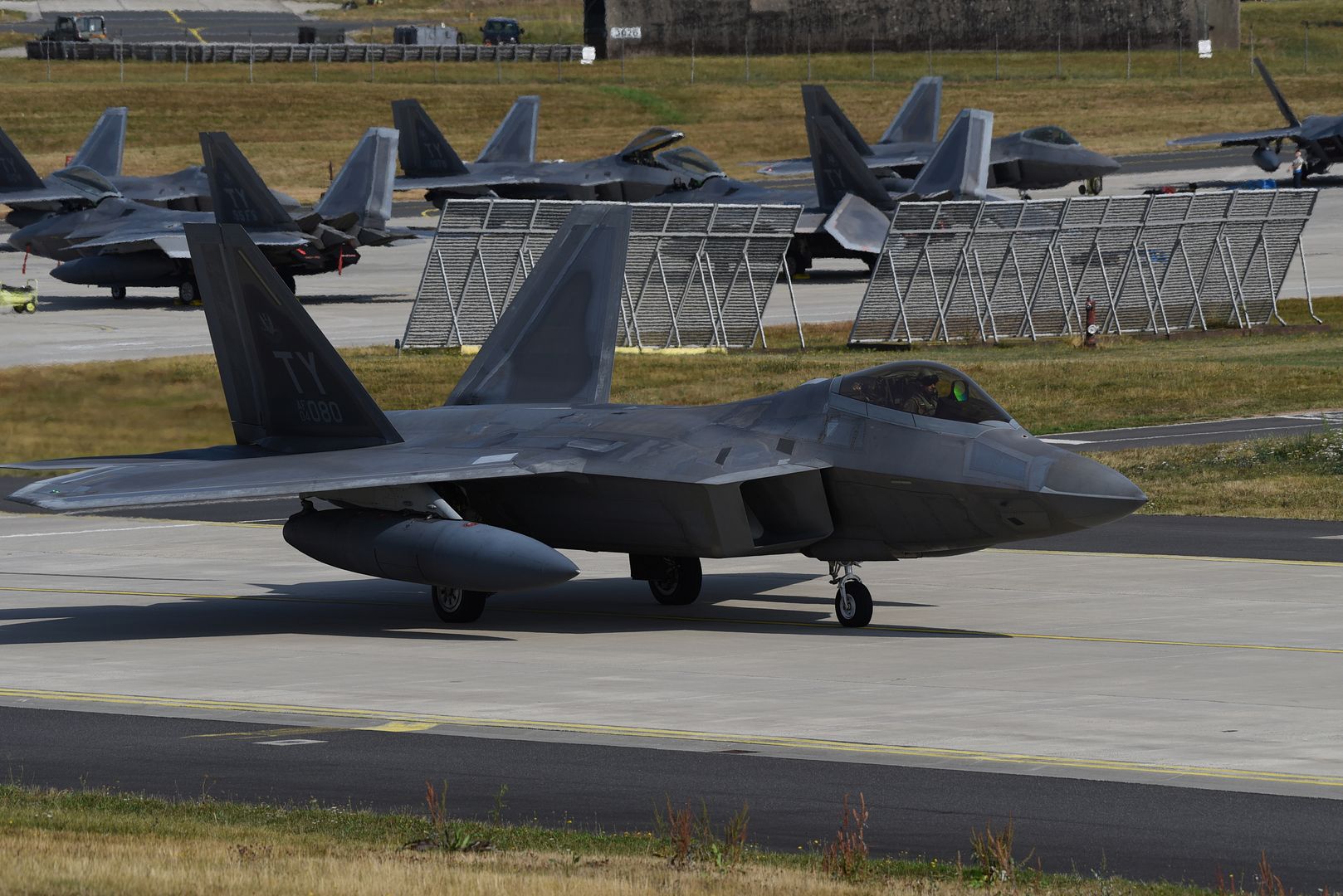
U.S. Air Force F-22 Raptors from the 95th Fighter Squadron, 325th Fighter Wing, Tyndall Air Force Base, Fla., taxi on the flightline at Spangdahlem Air Base, Germany, Aug. 29, 2018. The aircraft prepared to depart after being deployed to Europe for several weeks to train with allied forces. (U.S. Air Force photo by Airman 1st Class Valerie Seelye)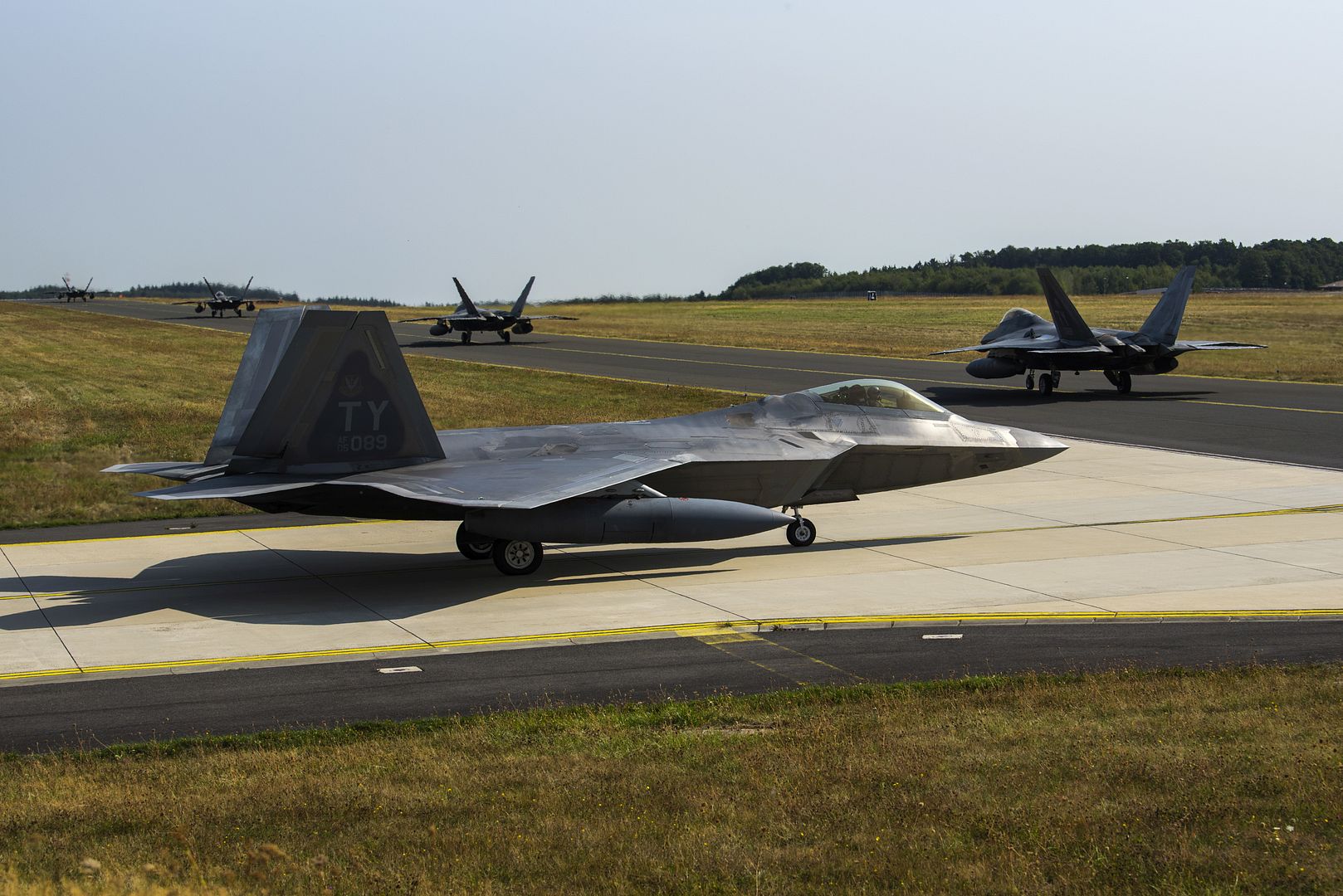
ATLANTIC OCEAN (Sept. 2, 2018) An EA-18G Growler, assigned to the "Rooks" of Electronic Attack Squadron (VAQ) 137, lands aboard the flight deck of the Nimitz-class aircraft carrier USS Harry S. Truman (CVN 75). Harry S. Truman is conducting sustainment operations in the Atlantic. (U.S. Navy photo by Mass Communication Specialist Seaman Benjamin Waddell/Released)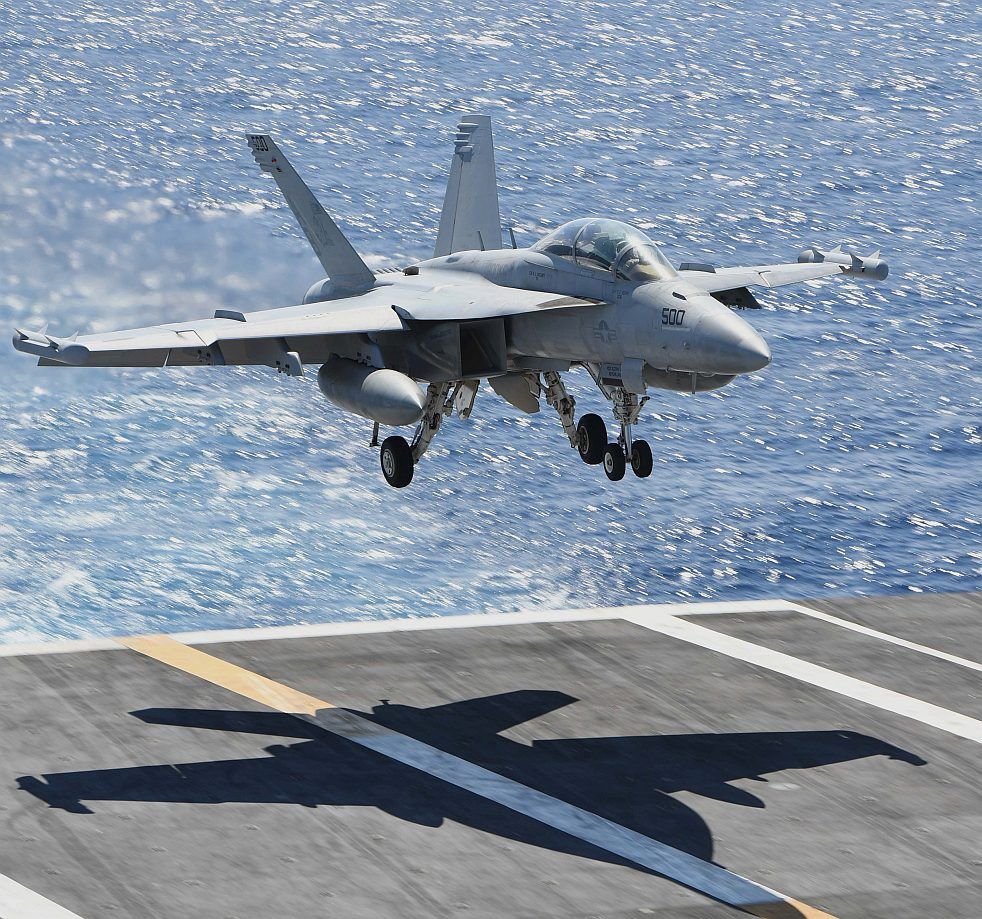
-
 Main AdminAn F-35A Lightning II and P-51 Mustang fly in formation as part of a Heritage Flight during the Canadian International Air Show in Toronto, Sept. 2, 2018. The Heritage Flight display showcases the progression of our nation?s aviation history and represents the past, present, and future of Air Force airpower. (U.S. Air Force photo by Staff Sgt. Jensen Stidham)
Main AdminAn F-35A Lightning II and P-51 Mustang fly in formation as part of a Heritage Flight during the Canadian International Air Show in Toronto, Sept. 2, 2018. The Heritage Flight display showcases the progression of our nation?s aviation history and represents the past, present, and future of Air Force airpower. (U.S. Air Force photo by Staff Sgt. Jensen Stidham)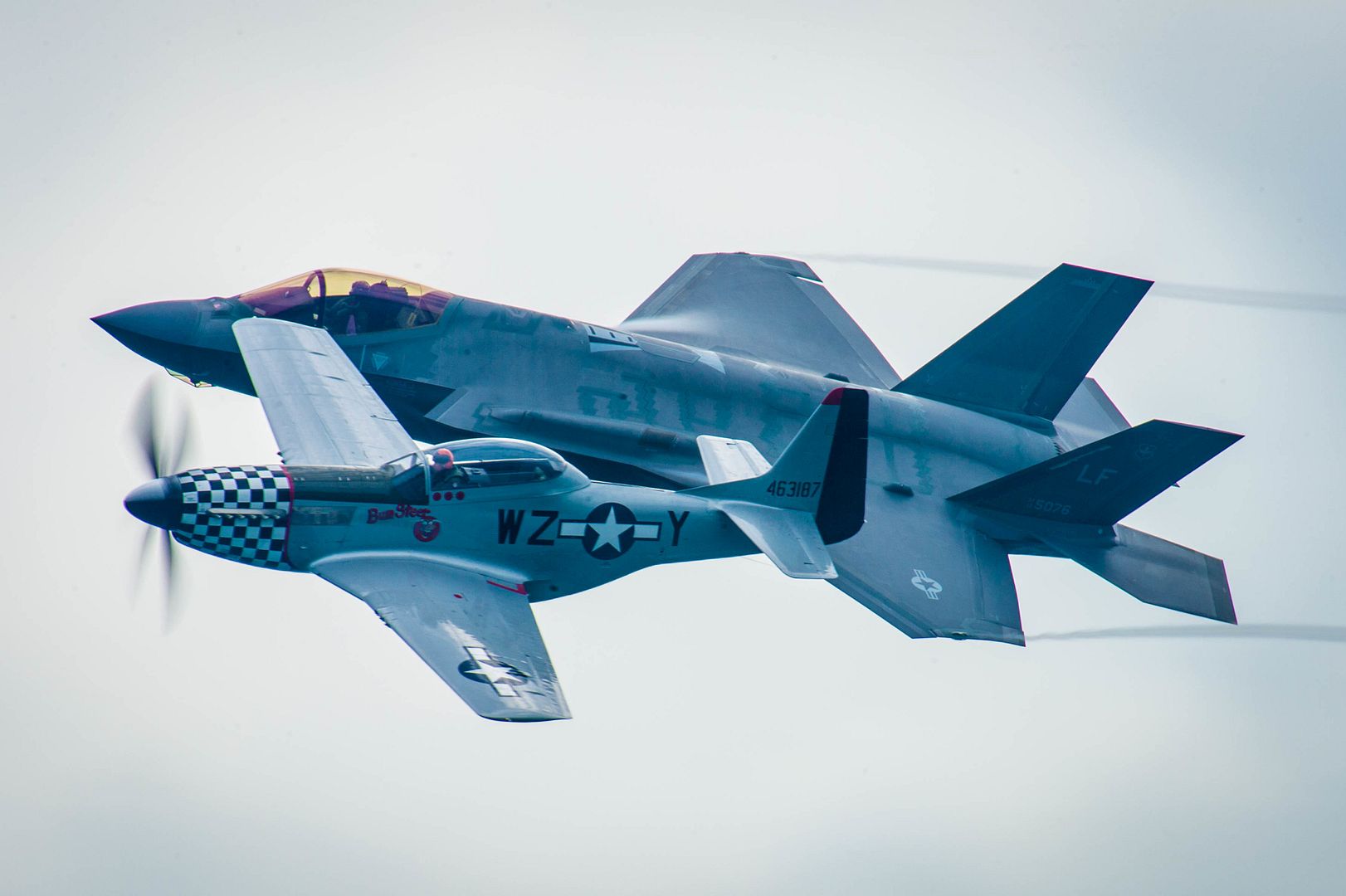
INDIAN OCEAN (Sept. 3, 2018)
Petty Officer 3rd Class Alexander Turla, an airman assigned to the Essex Amphibious Ready Group (ARG), launches an F-35B Lightning II assigned to Marine Fighter Attack Squadron (VMFA) 211, 13th Marine Expeditionary Unit (MEU), aboard the Wasp-class amphibious assault ship USS Essex (LHD 2), Sept. 3, 2018. Essex is the flagship for the Essex ARG and, with the embarked 13th MEU, is deployed to the U.S. 5th Fleet area of operations in support of naval operations to ensure maritime stability and security in the Central Region, connecting the Mediterranean and the Pacific through the western Indian Ocean and three strategic choke points. U.S. Marine Corps photo by Cpl. A. J. Van Fredenberg (Released)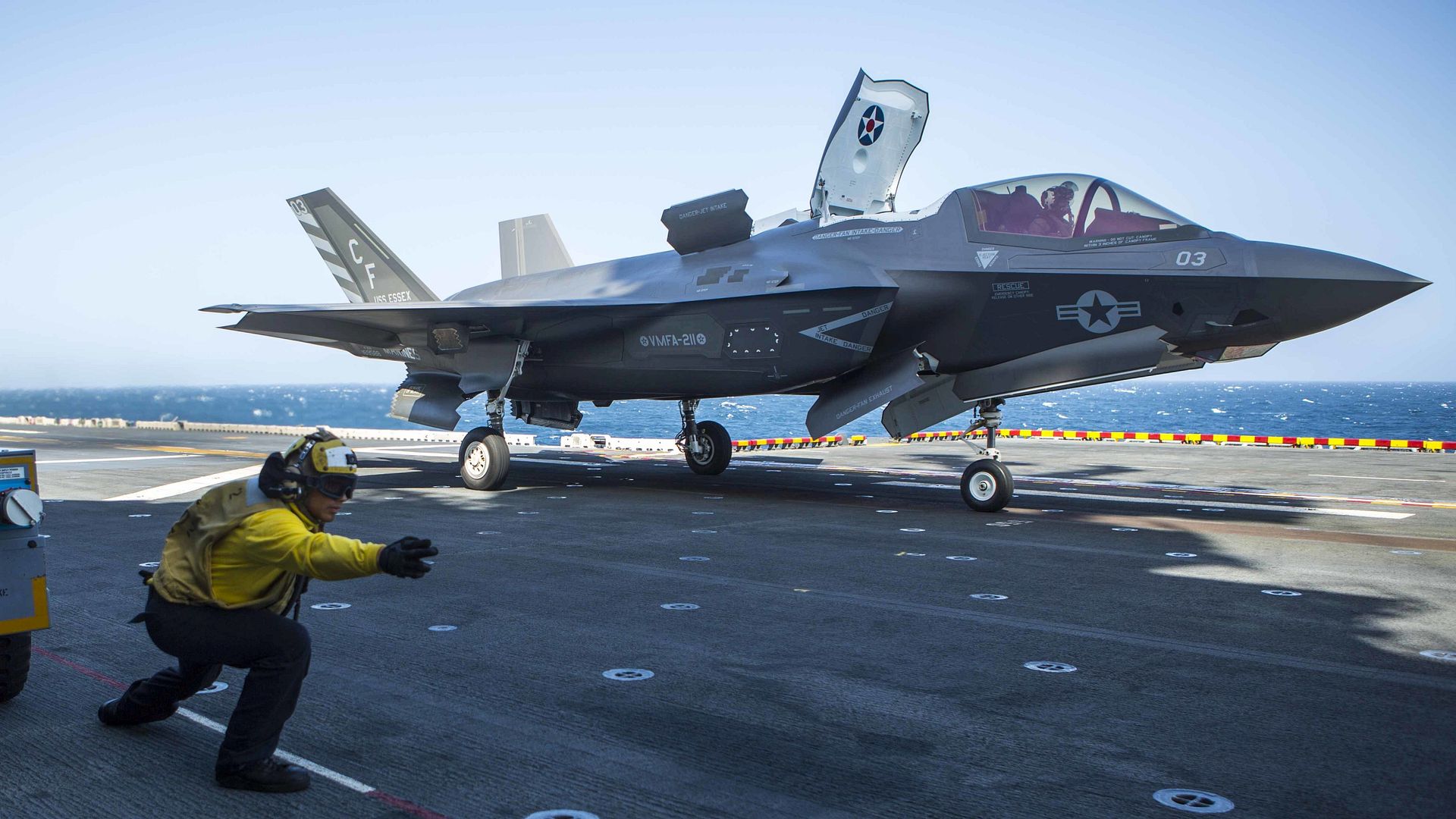
ATLANTIC OCEAN (Sept. 4, 2018) An F/A-18E Super Hornet, assigned to the "Knighthawks" of Strike Fighter Squadron (VFA) 136, prepares to land on the flight deck aboard the Nimitz-class aircraft carrier USS Harry S. Truman (CVN 75). Harry S. Truman is conducting sustainment operations in the Atlantic. (U.S. Navy photo by Mass Communication Specialist Seaman Joseph A.D. Phillips/Released)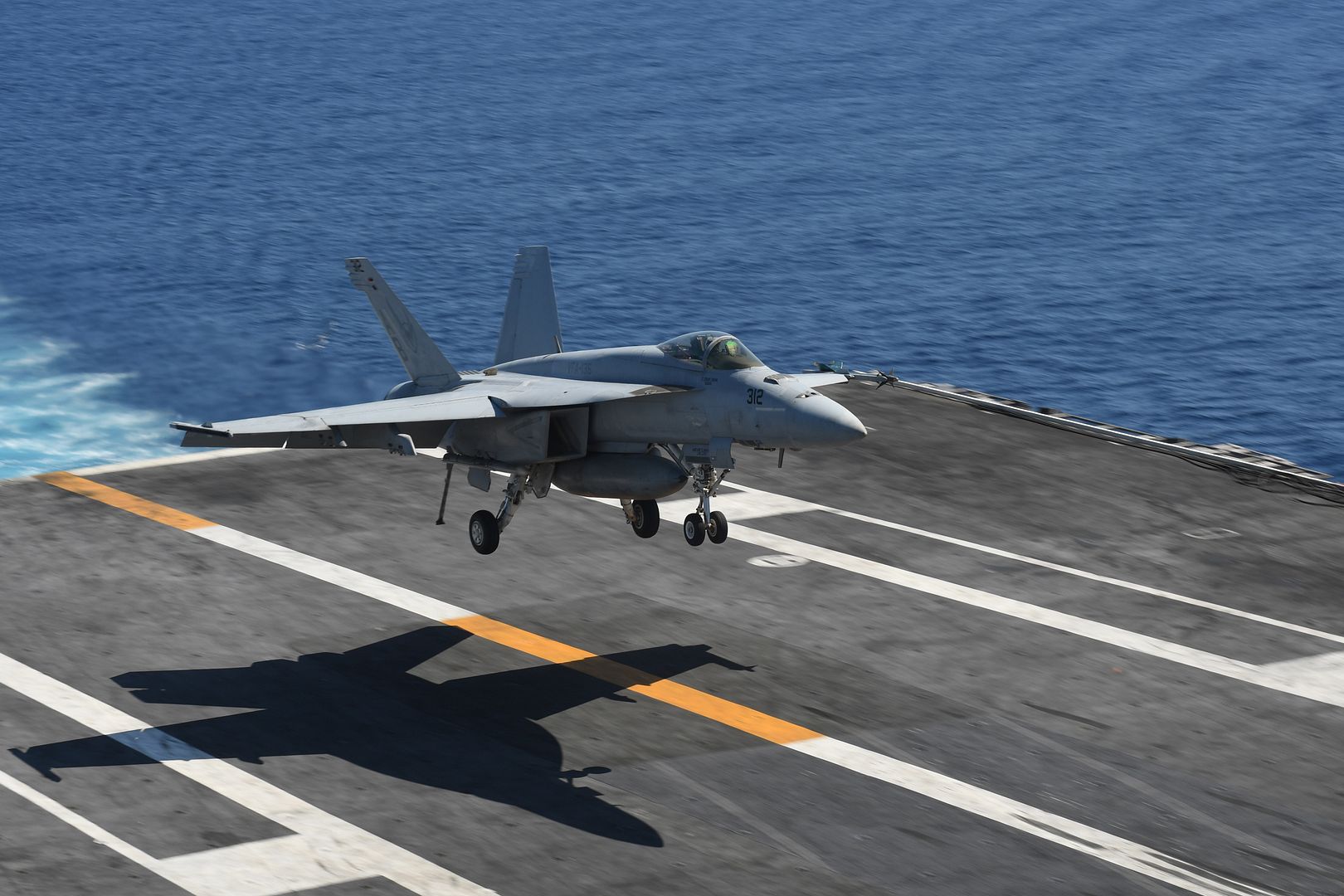
EVERETT, Wash., Sept. 4, 2018 ? The U.S. Federal Aviation Administration (FAA) has granted Boeing?s [NYSE: BA] KC-46 tanker program a Supplemental Type Certificate (STC), verifying that its refueling and mission avionics systems meet FAA requirements. The milestone marks completion of KC-46 FAA certification.
To receive its STC, Boeing?s team completed a series of lab, ground and flight tests, which commenced in 2015. As part of the required flight testing, the team validated the KC-46?s boom and drogue aerial refueling systems met FAA certification criteria.
?Our Boeing/Air Force test team did an outstanding job successfully leading us through all the requirements, and we appreciate the FAA?s collaboration as well,? said Mike Gibbons, Boeing KC-46A tanker vice president and program manager. ?This milestone is important in that it is one of the last major hurdles in advance of first delivery to the U.S. Air Force.?
The STC is one of two required FAA airworthiness certifications. Boeing received an Amended Type Certificate for its core 767-2C aircraft configuration in December 2017. While those certifications cover most of the jet, not all military functions and equipment can be certified by the FAA. The U.S. Air Force also must grant a Military Type Certificate (MTC), which is expected in the coming months. Boeing?s team concluded MTC flight testing, which included the jet?s aerial refueling, defensive and other military-specific systems, in early July.
Six aircraft have supported various segments of STC and MTC testing. Overall they have completed 3,500 flight hours and offloaded more than three million pounds of fuel during refueling flights with F-16, F/A-18, AV-8B, C-17, A-10, KC-10, KC-135 and KC-46 aircraft.
The KC-46, derived from Boeing?s commercial 767 airframe, is built in the company?s Everett, Wash., facility. Boeing is currently on contract for the first 34 of an expected 179 tankers for the U.S. Air Force.
When in service, the multi-role KC-46 will refuel U.S., allied and coalition military aircraft using its boom and hose and drogue systems, but also must be able to take on fuel to extend its operational range. The boom allows the tanker to transfer up to 1,200 gallons of fuel per minute, while the hose and drogue systems, located on both the plane?s wing and centerline, enables the KC-46 to refuel smaller aircraft with up to 400 gallons of fuel per minute.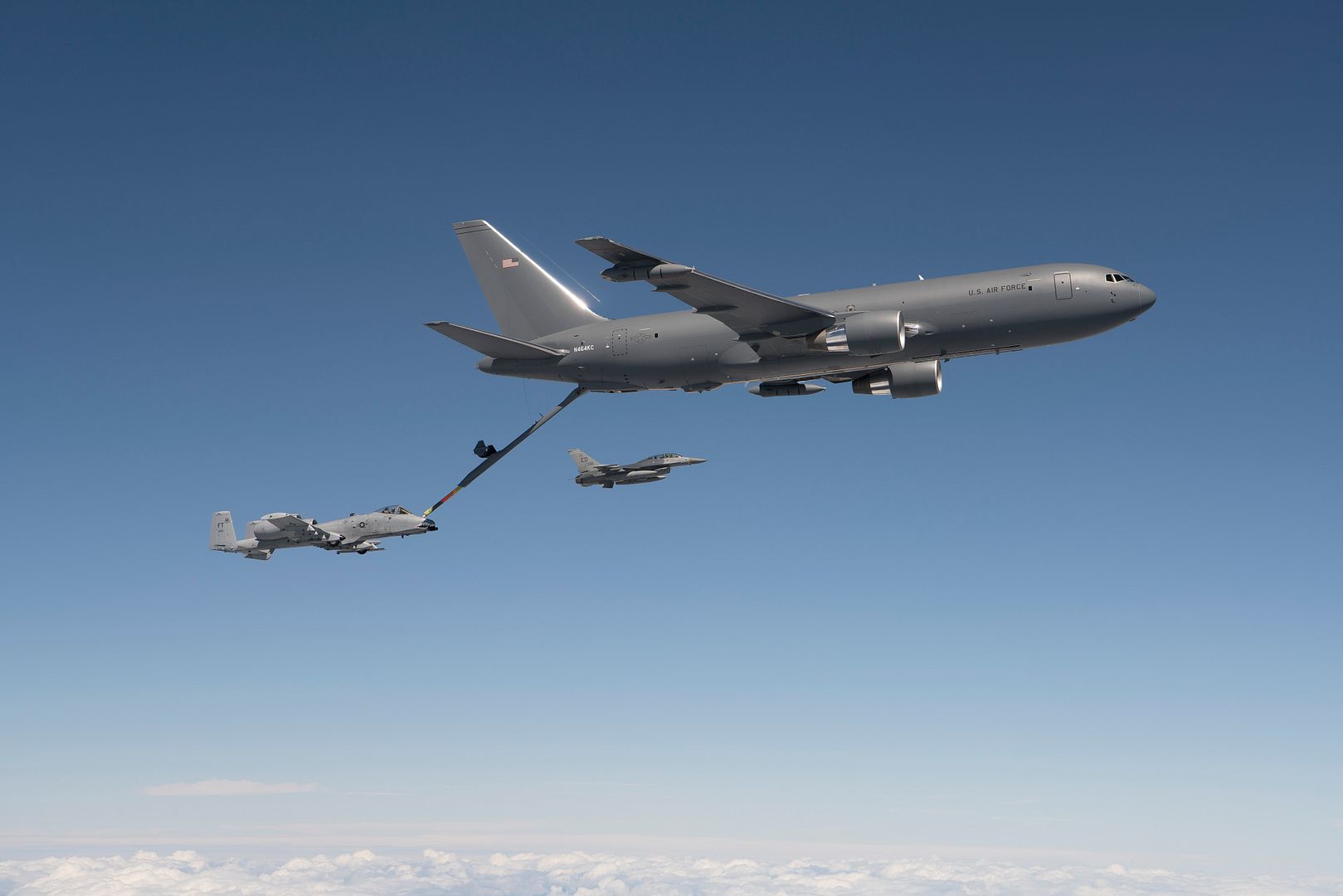
Airbus? slogan, ?We make it fly,? has taken an entirely new meaning with the application of its aeronautical expertise for an innovation that could revolutionize the maritime transport industry.
The SeaWing automated kite, which employs parafoil technology to tow large commercial ships, was developed by a team of environmentally-engaged Airbus engineers. By using the kite to help propel large vessels, SeaWing is expected to provide a 20 percent improvement in fuel economy while also reducing emissions.
When mounted on a vessel, SeaWing can be launched by the simple activation of a switch. The kite deploys, unfurls and operates autonomously; with its system collecting and analysing meteorological and oceanic data in real-time to optimise performance while ensuring maximum safety. When the towing effect is no longer required, SeaWing automatically refolds and is recovered ? ready for its next utilisation.
SeaWing was developed by AirSeas, a small Airbus startup that brings together environmentally-engaged company engineers with a common passion for aeronautics and the sea. AirSeas combines maritime expertise with the best Airbus has to offer in terms of aerodynamics, modelling, flight controls, systems and materials.
The SeaWing concept has now come full circle ? as Airbus has ordered the kite for use on the company?s own roll-on/roll-off (ro-ro) ships that transport large aircraft parts among its production sites in Europe and to the U.S. In addition to lowering shipping costs by the targeted 20 percent, SeaWing is expected to reduce Airbus? overall industrial environmental footprint by 8,000 tons of CO2 per year.
?We are very proud that Airbus has confirmed its confidence in the SeaWing system after seeing our test results first-hand on their own ship,? explained CEO and founder Vincent Bernatets, who previously worked at Airbus in managerial, marketing, after-sales and business development positions. ?This first ro-ro vessel installation opens the way for further pioneering deals on container ships, bulk freighters and ferries.?
SeaWing has been designed for a rapid integration on almost all commercial ships in operation today, with its simple and modular nature enabling the installation during a regular stopover at a port of call.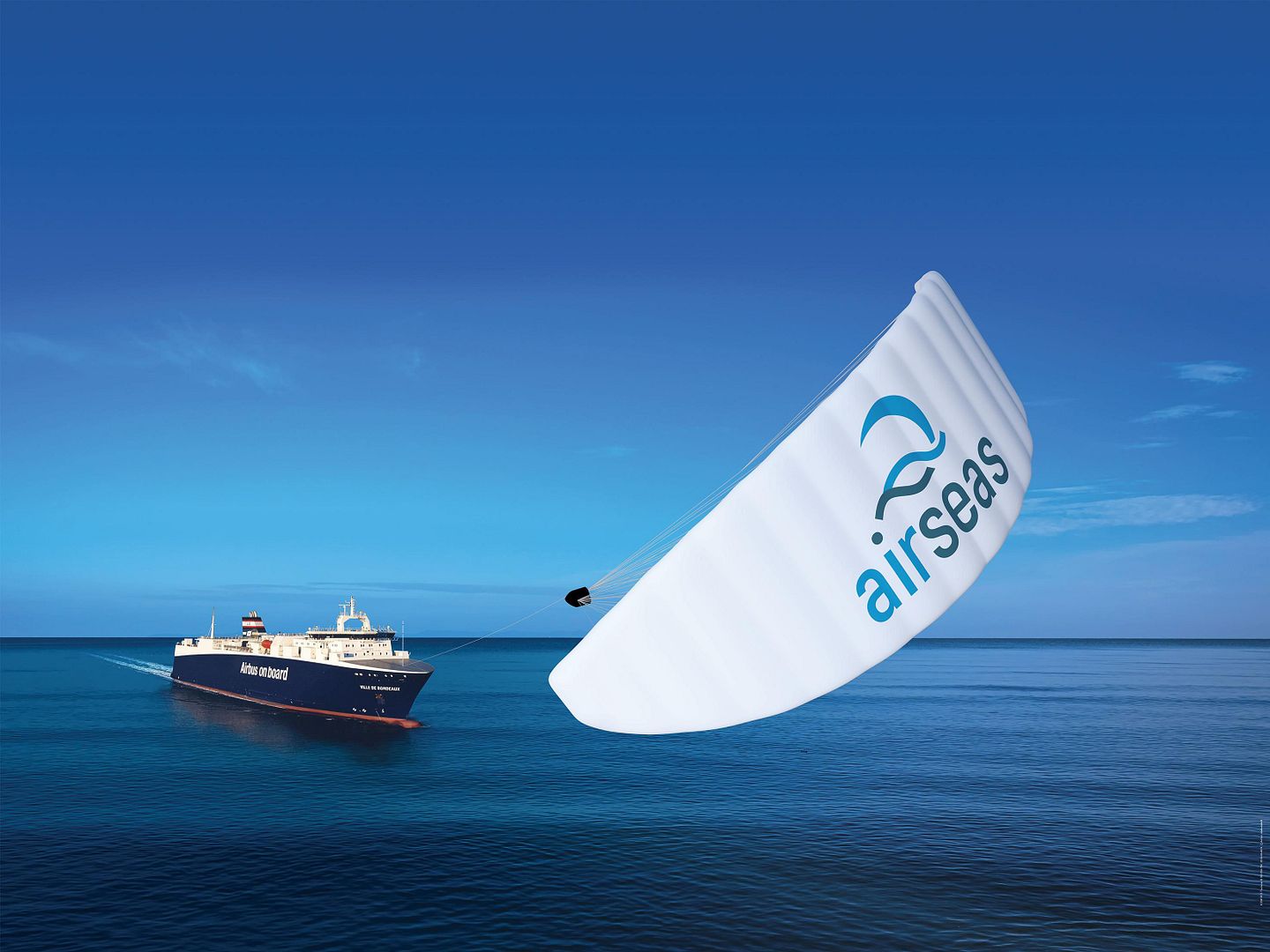
Amsterdam, The Netherlands, September 5, 2018 ? Following a successful tour in Africa and in the US, Embraer is now beginning the European and the Commonwealth of Independent States (CIS) part of the E190-E2 worldwide demonstration tour. The aircraft will visit more than 15 countries during September. At each stop, Embraer will show the capabilities of the world?s quietest, cleanest and most efficient new generation single-aisle aircraft in the segment. The first stop on the European tour is in Warsaw, Poland.
?The E190-E2 started revenue flights in Europe earlier in the year, and following a successful appearance at the Farnborough Airshow, we are proud to show off our new aircraft to operators across the region. With over 45 customers and over 350 aircraft in region, we are already seeing many of these customers interested in the world-beating aircraft,? said Martyn Holmes, Vice President Europe, Russia, Central Asia & Leasing, for Embraer Commercial Aviation. ?We are eager to present the E190-E2 to the airlines, many of which are already E-Jets operators.?
The E190-E2 is currently in commercial operation with Norway?s Wider?e, since April of this year. Three jets have already accumulated close to 2,000 flight hours achieving outstanding schedule reliability of more than 99%.
The E-Jets E2 are the most efficient family of aircraft in the single-aisle market burning up to 10% less fuel than its direct competitor. The E190-E2 brings also more flexibility with maximum range of up to 5,300 km or about 1,000 km longer than current generation E190.
The E190-E2 also brings significant savings to airlines in terms of maintenance costs, with up to 25% reduction thanks to a smart design based on direct feedback from the operators. It has the longest maintenance intervals with 10,000 flight hours for basic checks and no calendar limit in typical E-Jets utilization. This means additional 15 days of aircraft utilization in a period of ten years.
The E190-E2 also obtained better results than initial expectations in pilot transition training time. Pilots of current generation E-Jets need only 2.5 days of training and no full flight simulator to fly the E2. ?Decreasing the training burden for pilots transitioning from E1 is another huge reduction in both time and cost for our operators. This coupled with the unmatched fuel efficiency and lowest noise footprint, making the E2 the most cost-effective and most environmentally friendly single-aisle jet in the planet, we see the aircraft as the natural evolution for many Embraer operators in the region?, explained Holmes.
Embraer forecasts 2820 commercial aircraft up to 150 seats to be delivered over the next 20 years to European and CIS operators. As the European intra-regional airline industry moves from a business-model dynamic of ?Low Cost Carriers versus Full Service Carriers? to a single hybrid consensus, the E-Jets E2 will play an increasingly important role in the region. Beyond its traditional hub-feeding operation, the E2 will have a further outreach in LCCs experimenting FSC?s strategies such as multi-fleet type and focus on business passengers.
In the meantime, the regional business model is also going through a diversification. The ACMI leasing model arises as an important opportunity for outsourcing low-density routes to regional operators with lower cost base are sprouting, allowing both majors carriers to bring-in a more efficient airplane to serve thin routes without adding complexity to their narrow-body operation.
At Farnborough Airshow 2018, Embraer announced commitments for the E-Jets E2 from European customers, such as Helvetic Airways, and with an undisclosed customer from Spain.
Embraer is the world?s leading manufacturer of commercial jets up to 150 seats. The Company has 100 customers from all over the world operating the ERJ and E-Jet families of aircraft. For the E-Jets program alone, Embraer has logged more than 1,800 orders and 1,400 deliveries, redefining the traditional concept of regional aircraft. Today, E-Jets are flying in the fleet of 70 customers in 50 countries. The versatile 70-150 seat family is flying with low-cost airlines as well as with regional and mainline carriers.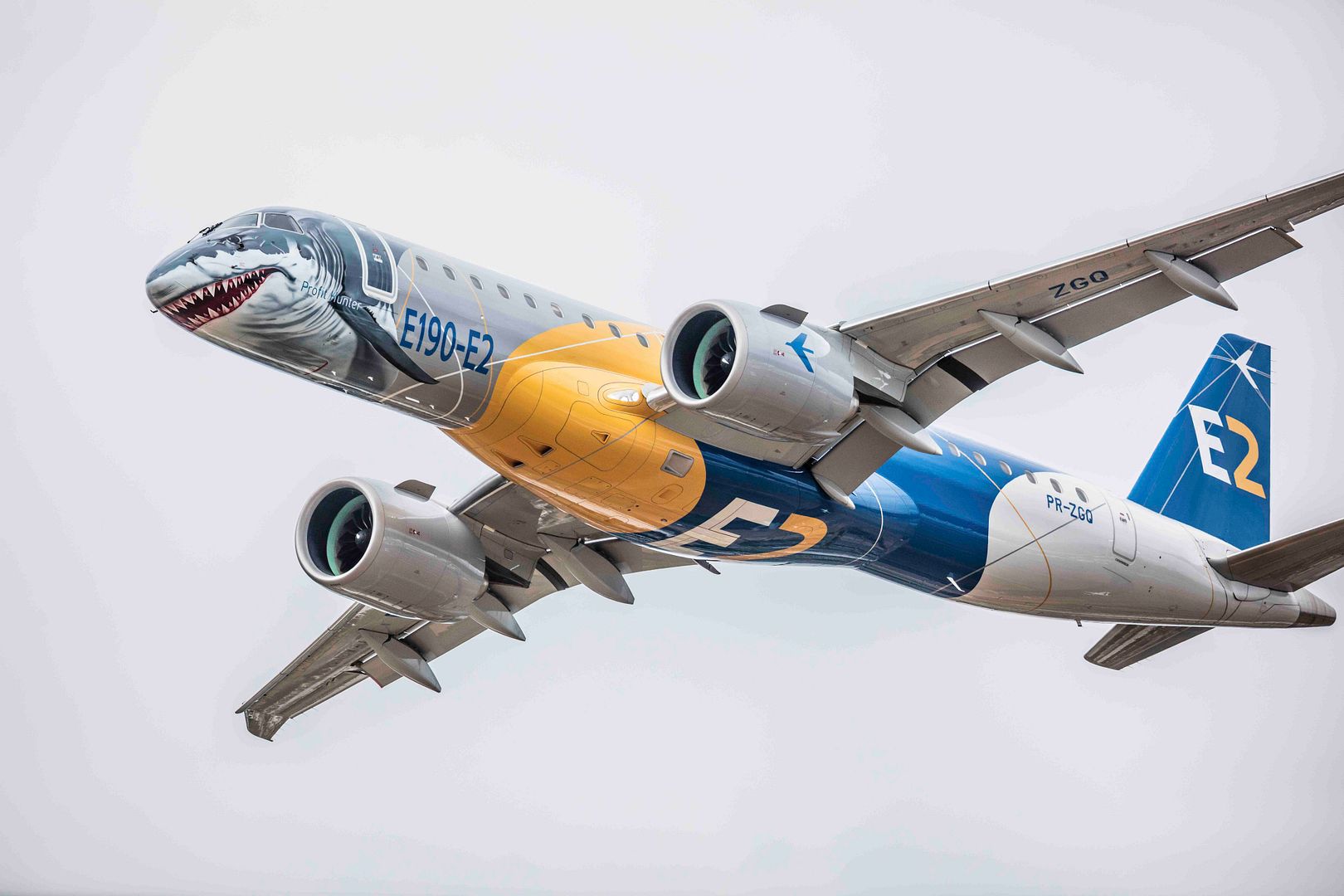
September 5, 2018 Montr?al Bombardier Inc., Bombardier business units, Press Release
Bombardier Business Aircraft and Garmin today announced a significant avionics upgrade for the Bombardier Vision flight deck aboard the Learjet 75 and Learjet 70 aircraft, which are already equipped with one of the category?s most generous and advanced cockpits, powered by the Garmin G5000 avionics suite. The upgrade, currently in flight testing, will enhance the aircraft?s capabilities for customers to access the most favourable routes as well as pave the way for future technological enhancements.
The Learjet 75 aircraft is the best performing productivity business tool in the light category ? and the avionics enhancement takes the aircraft to a new level of efficiency and effectiveness. The updated avionics suite will be offered on new Learjet 75 and Learjet 70 business jets with a retrofit on in-service models made available concurrently.
The update to the popular Garmin G5000 avionics suite on the Bombardier Vision flight deck will bring workload reducing improvements, including climb, cruise and descent vertical navigation, enhanced take-off and landing performance calculations and much more. In addition, FANS 1/A+, which will enable customers to access the most efficient and favourable routes, will be offered as an option. It will ensure readiness for modernized airspace requirements and deliver efficiency gains that are expected to lower direct operating costs.
?Avionics is one of the fastest-evolving systems on a modern aircraft and the upgrade will make sure our Learjet 75 and Learjet 70 business jet customers remain ahead of the curve,? said Peter Likoray, Senior Vice President, Worldwide Sales and Marketing, Bombardier Business Aircraft. ?The Learjet 75 and Learjet 70 aircraft are the definitive business productivity tools for today and tomorrow.?
?Learjet aircraft are symbols of innovation, efficiency and performance and the G5000 update perfectly enhances the performance and reliability of this iconic business jet family,? said Carl Wolf, Garmin?s Vice President of Aviation Sales and Marketing. ?We are pleased to partner with Bombardier Business Aircraft to provide these highly-anticipated updates to our mutual customers.?
Learjet aircraft are renowned worldwide for their sleek ramp appeal and are favoured by pilots for their handling characteristics and high-performance.
Learjet 70 aircraft: The Learjet 70 aircraft is the most trusted light-midsized business aircraft platform among Fortune 50 and 500 companies. The aircraft offers a smooth ride, top reliability and performance, and its cabin is designed for the utmost comfort ? easily accommodating six passengers and two crew members.
Learjet 75 aircraft: As part of the well-established Learjet family, the class-defining Learjet 75 aircraft continues to set the standard by bringing large jet features to a light jet platform. The Learjet 75 aircraft is the only business jet in its class to feature an eight-seat double-club configuration and a flat floor throughout the cabin, offering a smooth ride and the ultimate in comfort.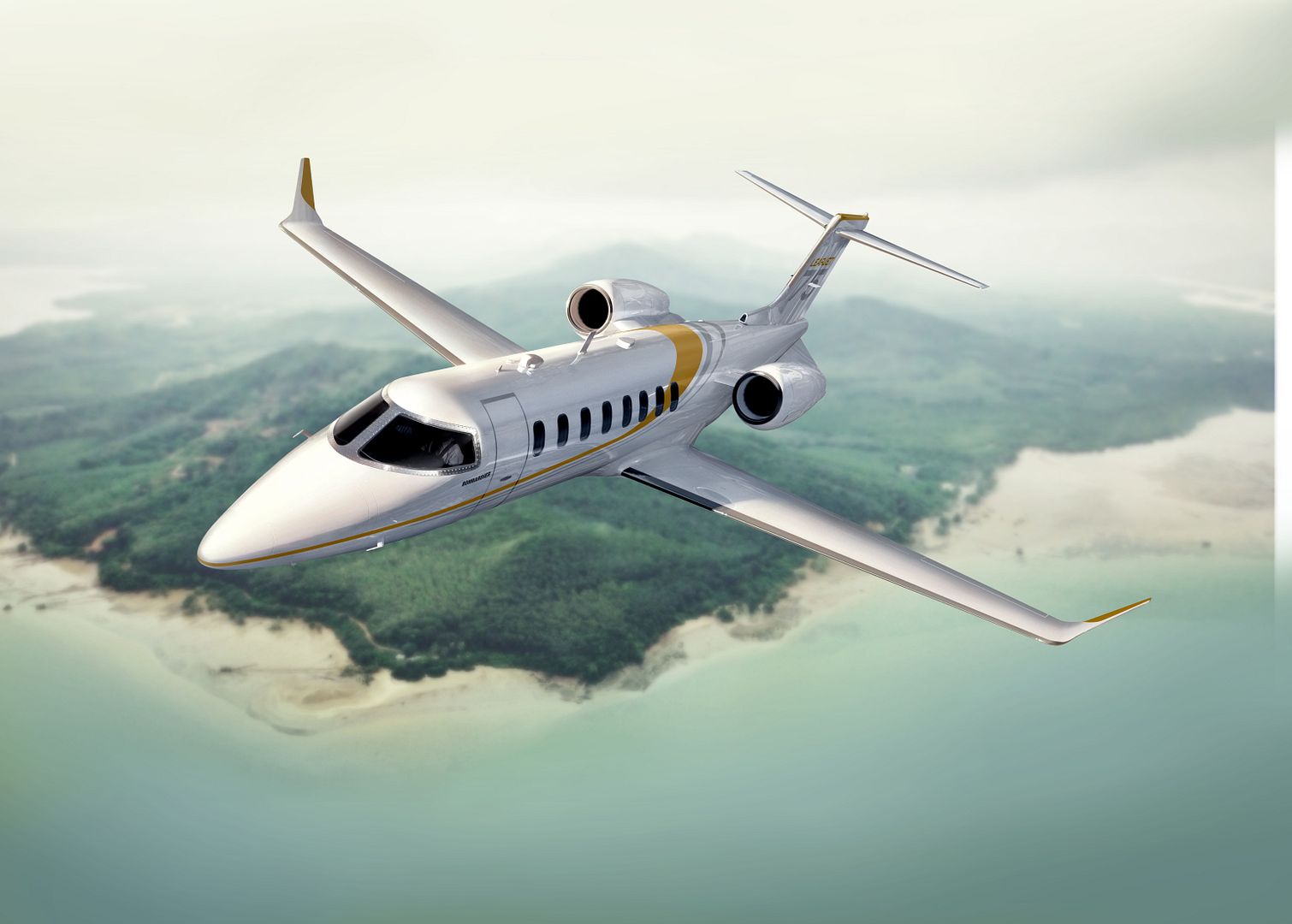
-
 Main AdminThe Marine Corps Recruiting Command invited influential community leaders to ride aboard an MV-22 Osprey during Marine Week in Charlotte, North Carolina, Sept. 5, 2018. The Marine Corps Recruiting Command planned unique engagements to interact with important components of the Charlotte Population, looking to share its message of opportunity with a diverse audience of people who in many cases had little previous exposure to Marine culture. More than 750 Marines from around the country converged on the South's second-fastest growing city. (U.S. Marine Corps photo by Lance Cpl. Haley Gawronski)
Main AdminThe Marine Corps Recruiting Command invited influential community leaders to ride aboard an MV-22 Osprey during Marine Week in Charlotte, North Carolina, Sept. 5, 2018. The Marine Corps Recruiting Command planned unique engagements to interact with important components of the Charlotte Population, looking to share its message of opportunity with a diverse audience of people who in many cases had little previous exposure to Marine culture. More than 750 Marines from around the country converged on the South's second-fastest growing city. (U.S. Marine Corps photo by Lance Cpl. Haley Gawronski)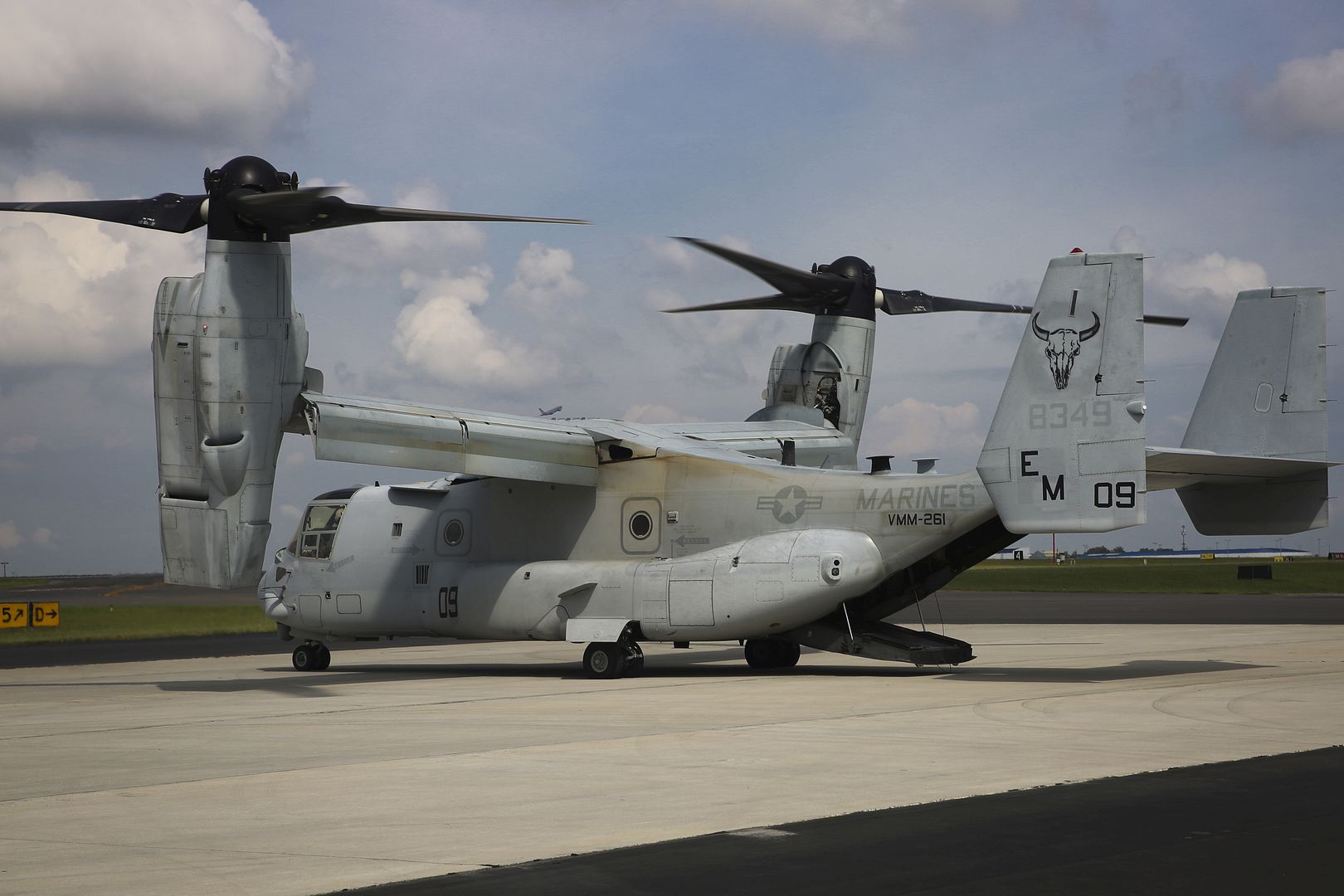
ATLANTIC OCEAN (Sept. 5, 2018) An F/A-18E Super Hornet, assigned to the "Knighthawks" of Strike Fighter Squadron (VFA) 136, prepares to launch from the flight deck aboard the Nimitz-class aircraft carrier USS Harry S. Truman (CVN 75). Harry S. Truman is conducting sustainment operations in the Atlantic. (U.S. Navy photo by Mass Communication Specialist 2nd Class Thomas Gooley/Released)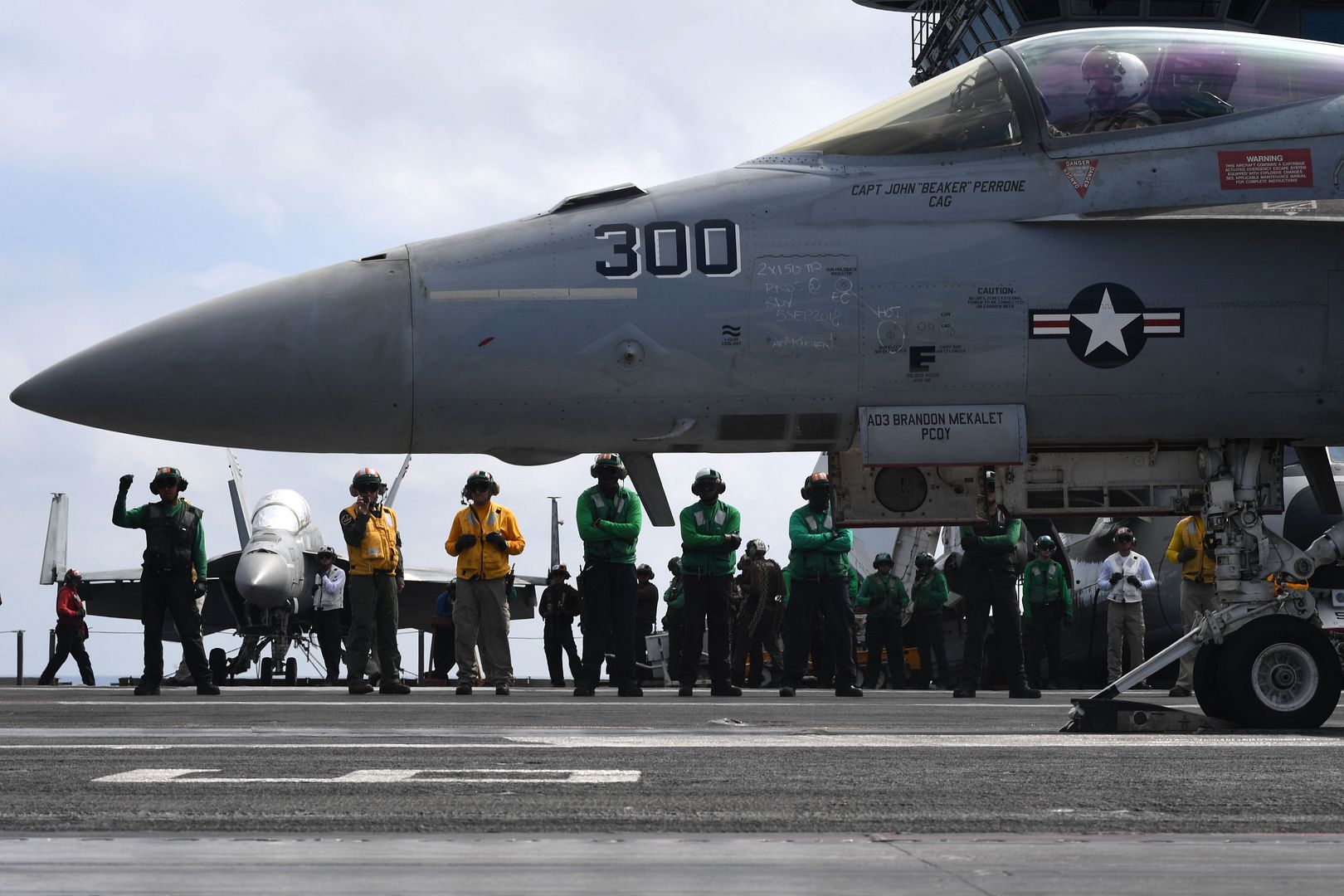
A Bomber Task Force deployment of B-52 Stratofortress aircraft, Airmen and support equipment from the 307th Bomb Wing and 2nd Bomb Wing, Barksdale Air Force Base, Louisiana, has arrived at RAF Fairford, England, to conduct theater integration and flying training.
The deployment of strategic bombers to the U.K. helps exercise RAF Fairford as United States Air Forces in Europe's forward operating location for bombers. The deployment also includes joint and allied training in the U.S. European Command theater to improve bomber interoperability.
Training with joint partners, allied nations, and other U.S. Air Force units contributes to our ready and postured forces and enables us to build enduring and strategic relationships necessary to confront a broad range of global challenges.
(Source: US Air Force; issued Sept 05, 2018)
(U.S. Air Force photo by Airman 1st Class Gerald R. Willis)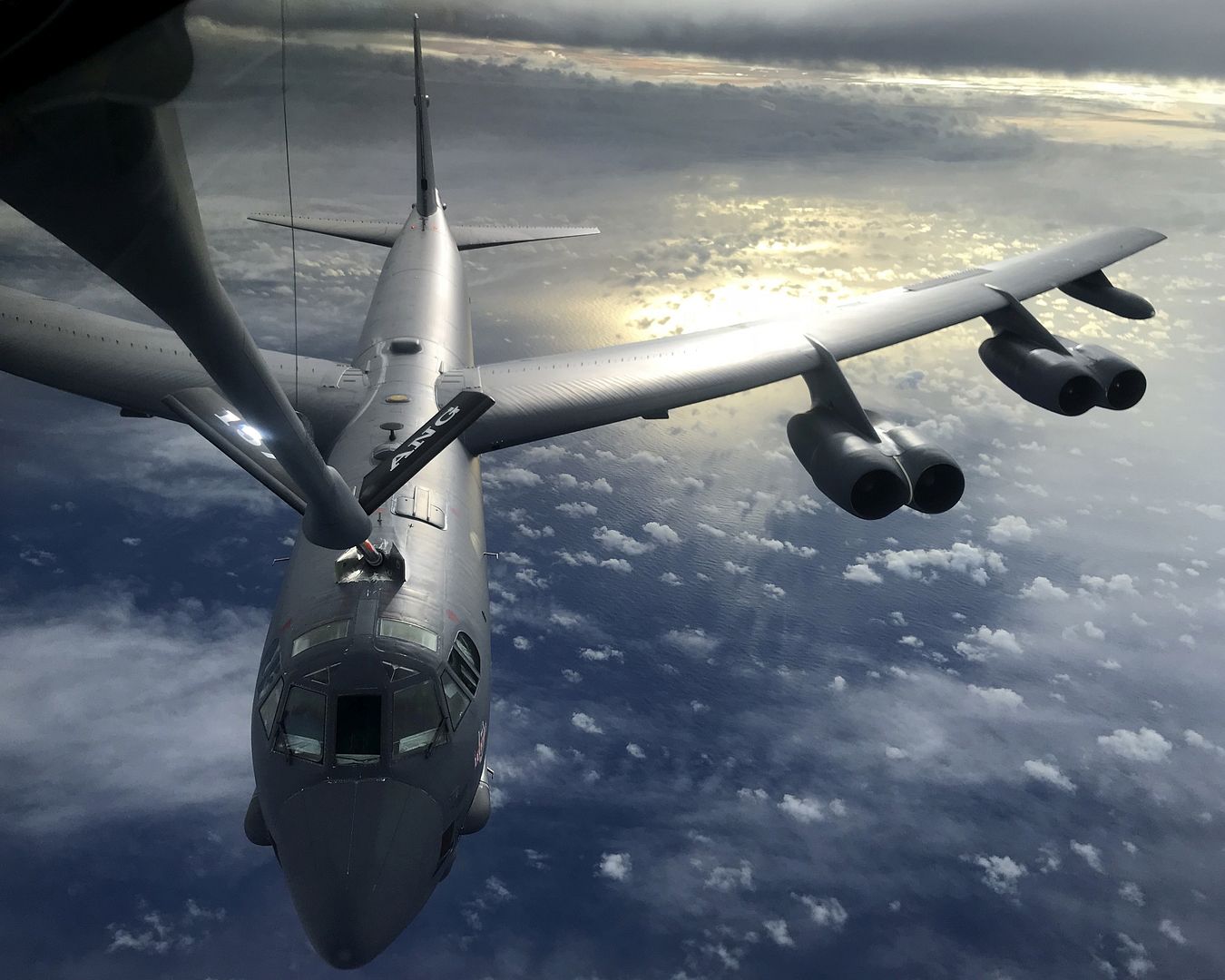
Bell 505 Lands in Africa
05 September 2018
With more than 100 Bell 505s already delivered around the world already being used for many different missions, the aircraft has now officially made it to Africa. Earlier this month, Bell Independent Representative, Africair, delivered the first Bell 505 to KIDL Operations in Kenya, one of the fastest growing operators in East Africa specializing in executive transport.
The aircraft was shipped from Bell?s facility in Mirabel, Canada to Africair Helicopter Support Limited (AHSL), a newly established Kenya Civil Aviation Authority Authorized Maintenance Organization where the aircraft was reassembled. This Bell 505 was the first work in the newly established facility, located in Ruiru.
After re-assembly, the Bell 505 was flown by KIDL CEO, Captain Marco Brighetti Wilson Airport in Nairobi to begin VIP transport operations.
Bell is excited that the aircraft has landed in Kenya and we are looking forward to having many more flying all over the continent. Stay tuned for updates on the Bell 505 entering the market Africa.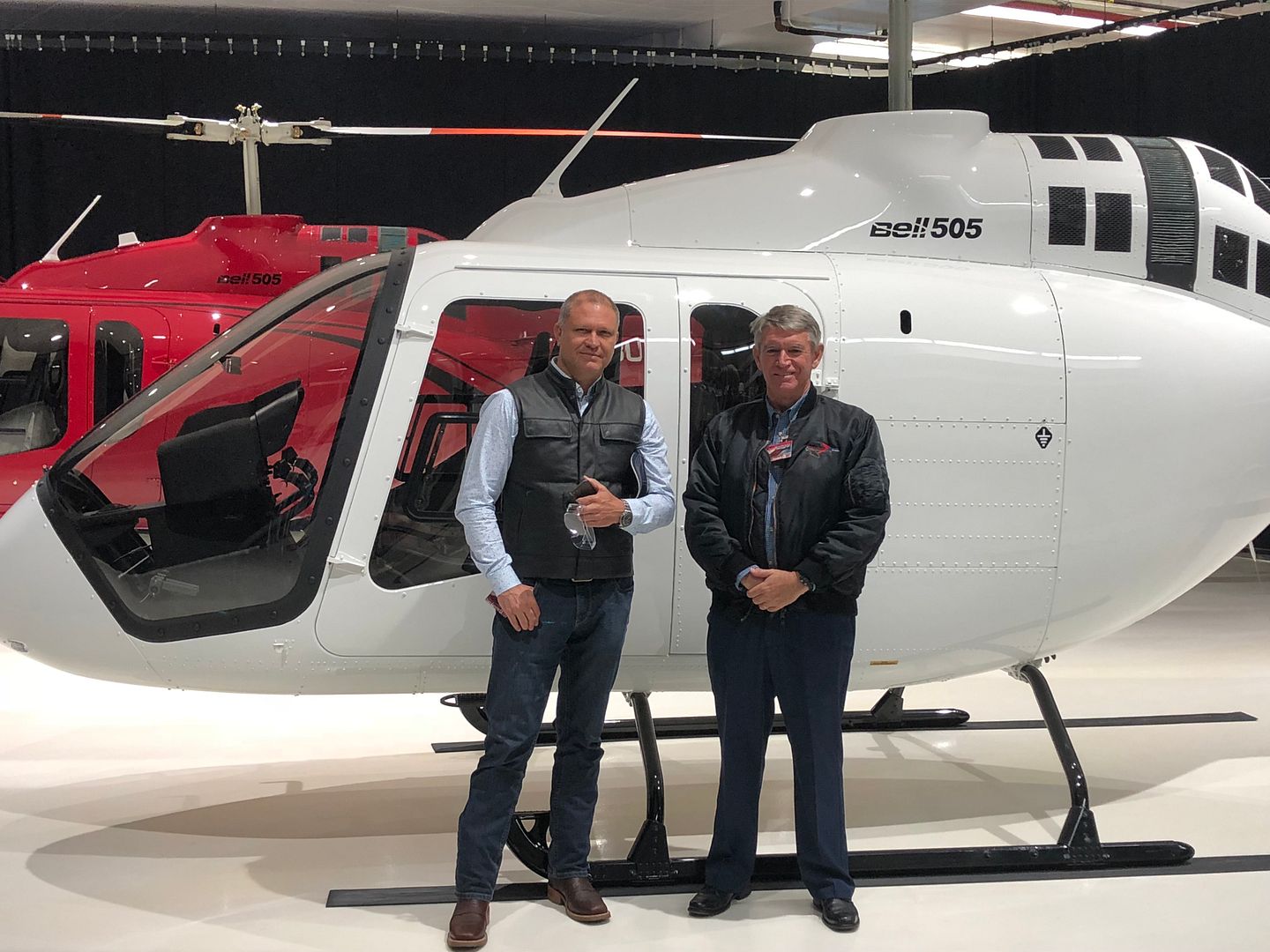
-
 Main AdminA Coast Guard Air Station Kodiak MH-60 Jayhawk helicopter aircrew hovers above the Air Station Kodiak, Alaska, tarmac before taking off for a training flight Sept. 6, 2018. Training flights ensure aircrews are proficient in emergency procedures and maintain qualifications so they are ready and responsive during search and rescue cases. U.S. Coast Guard photo by Petty Officer 1st Class Charly Hengen.
Main AdminA Coast Guard Air Station Kodiak MH-60 Jayhawk helicopter aircrew hovers above the Air Station Kodiak, Alaska, tarmac before taking off for a training flight Sept. 6, 2018. Training flights ensure aircrews are proficient in emergency procedures and maintain qualifications so they are ready and responsive during search and rescue cases. U.S. Coast Guard photo by Petty Officer 1st Class Charly Hengen.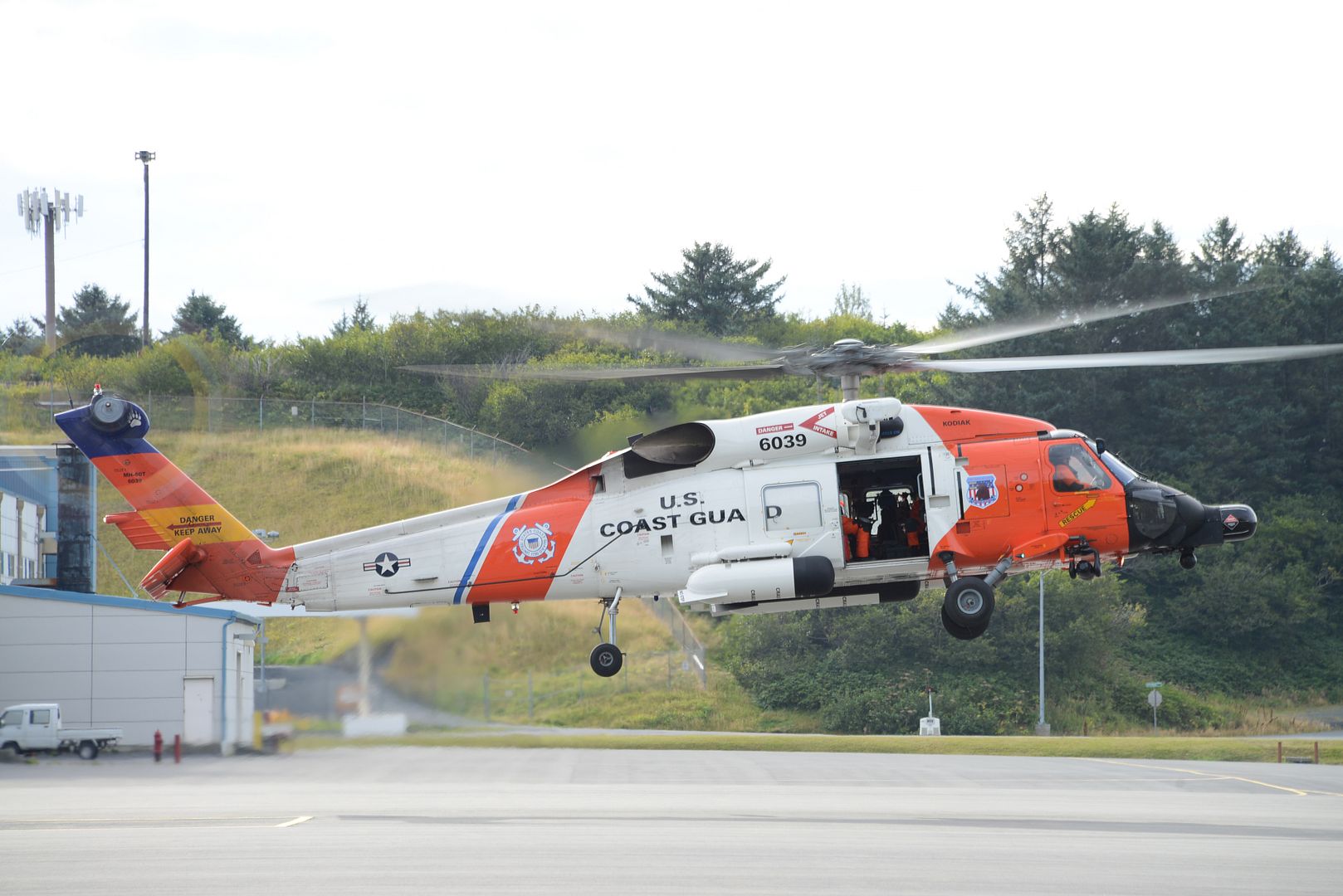
Capt. Andrew ?Dojo? Olson, F-35 Heritage Flight Team pilot and commander, performs a high-speed pass during the Canadian International Air Show in Toronto, Sept. 1, 2018. (U.S. Air Force photo by Airman 1st Class Alexander Cook)
On August 29th, 135 military personnel from the RCAF replaced their brothers and sisters in Arms of the Royal Air Force carrying out the NATO mandate of Enhanced Air Policing in Romania.
Five CF-18 Hornets are deployed on Romanian Air Base Mihail Kogalniceanu from September to December 2018 near Constanta.
A CF-18 Hornet prepares to take off from the air base at Mihail Kogalniceanu, Romania, for Op REASSURANCE the 4th Sept, 2018.
Photo Cpl Dominic Duchesne-Beaulieu.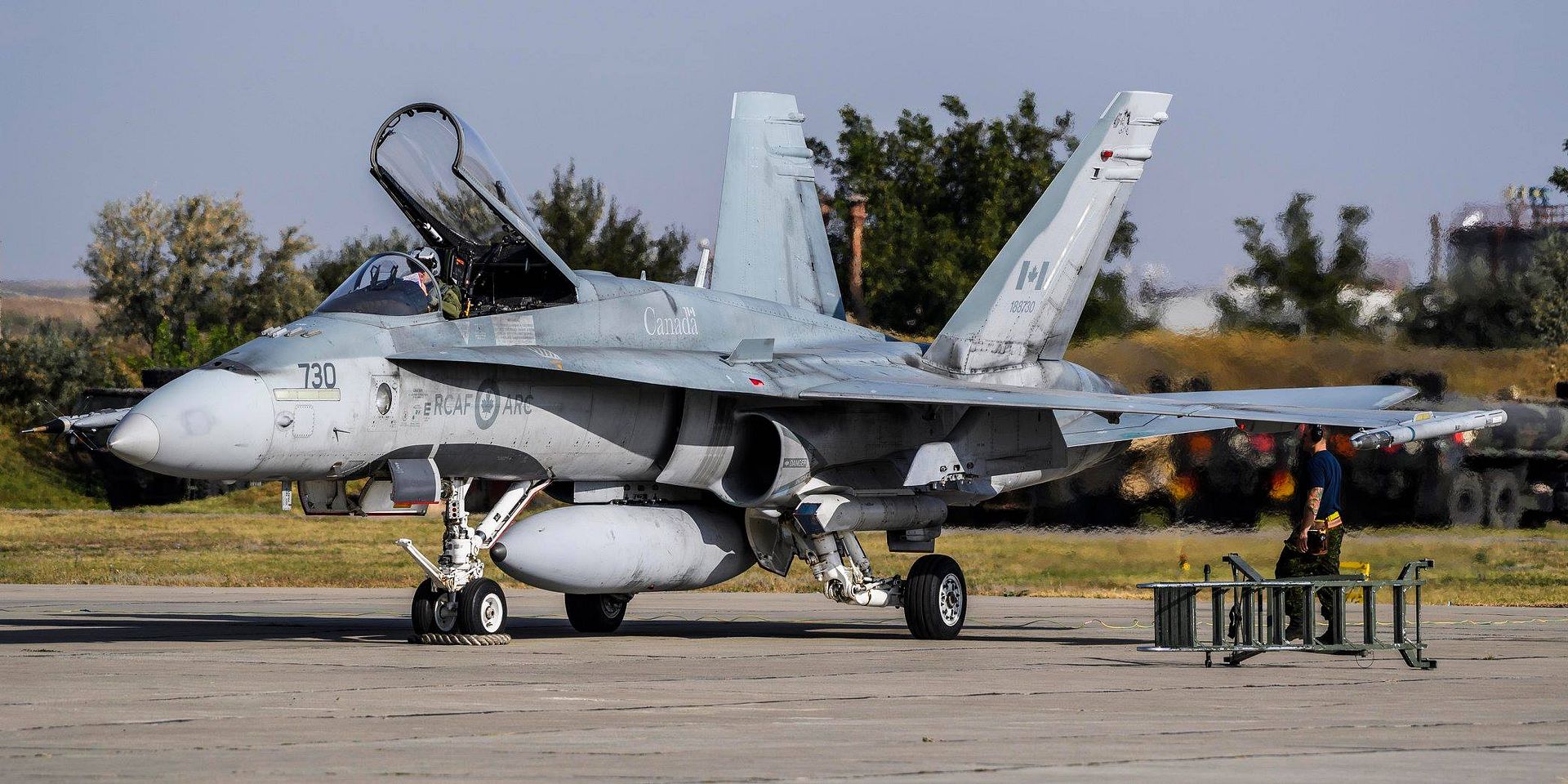
-
 Main AdminPACIFIC OCEAN (Sept. 05, 2018) Sailors observe sunrise on the flight deck aboard the Nimitz-class aircraft carrier USS John C. Stennis (CVN 74). John C. Stennis is underway conducting routine operations in the U.S. 3rd Fleet area of operations. (U.S. Navy photo by Mass Communication Specialist 3rd Class William Rosencrans/Released)
Main AdminPACIFIC OCEAN (Sept. 05, 2018) Sailors observe sunrise on the flight deck aboard the Nimitz-class aircraft carrier USS John C. Stennis (CVN 74). John C. Stennis is underway conducting routine operations in the U.S. 3rd Fleet area of operations. (U.S. Navy photo by Mass Communication Specialist 3rd Class William Rosencrans/Released)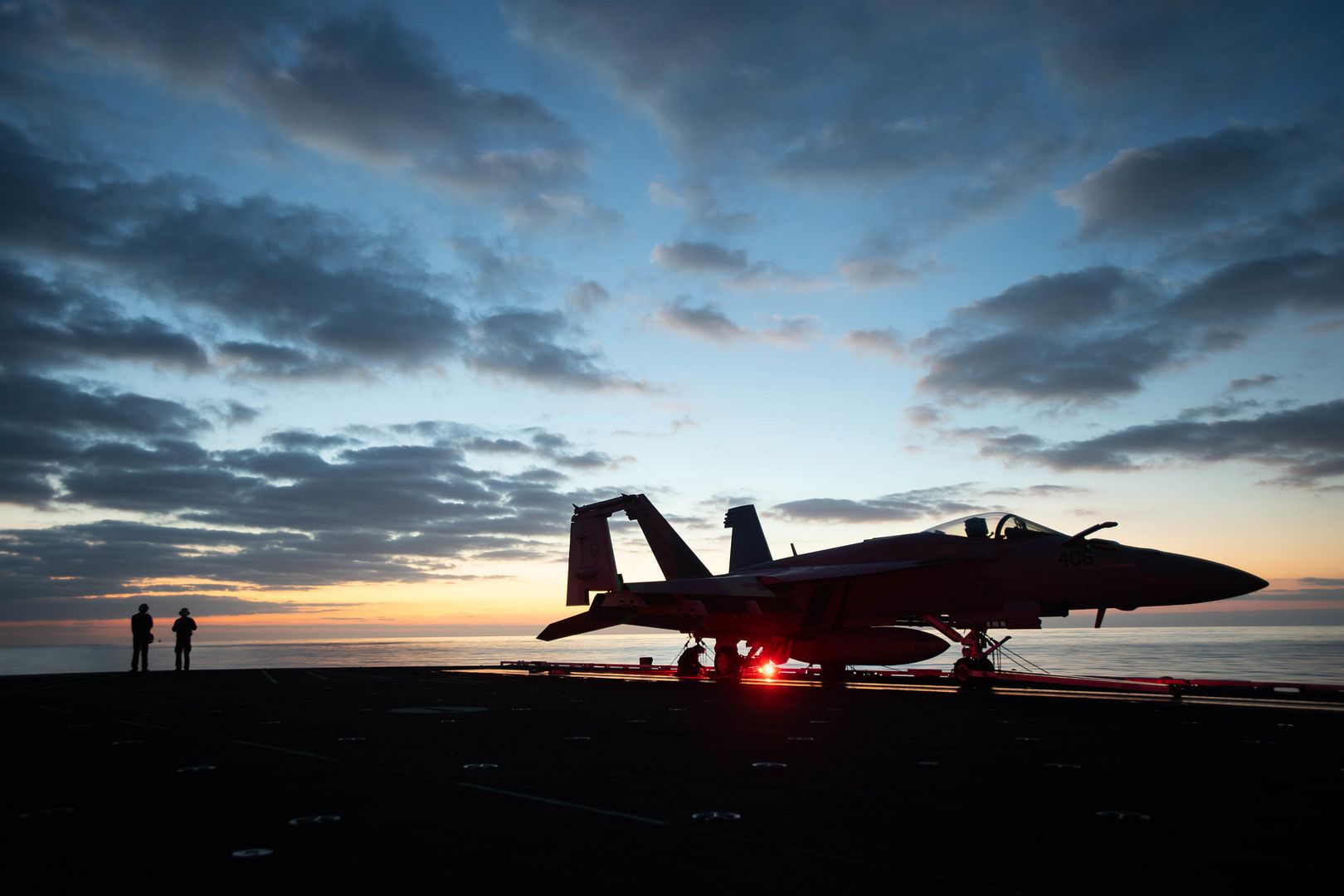
PACIFIC OCEAN (Sept. 4, 2018) An F/A-18E Super Hornet, assigned to Strike Fighter Squadron (VFA) 151, prepares to land on the flight deck aboard the Nimitz-class aircraft carrier USS John C. Stennis (CVN 74). John C. Stennis is underway conducting routine operations in the U.S. 3rd Fleet area of operations. (U.S. Navy photo by Mass Communication Specialist 3rd Class William Rosencrans/Released)
MIELEC, Poland, Sept. 10, 2018 /PRNewswire/ -- An M28 short takeoff and landing (STOL) aircraft manufactured at PZL Mielec, a facility in Poland owned by Sikorsky, a Lockheed Martin company (NYSE: LMT), has arrived in Ecuador following a trans-Atlantic flight from Poland. Delivered five months after contract award, the twin-engine turboprop will meet the Ecuadorian Army's need for a proven multi-role transport aircraft that can perform in diverse climates and terrain.
The Ecuadorian Army contracted for the aircraft in April this year. PZL Mielec conducted training for Army pilots and mechanics, and a Polish crew piloted the aircraft 13,500 km via Iceland and Greenland, across the Atlantic Ocean to Canada, the United States and Central America to Shell Mera in Ecuador, where the aircraft was officially accepted by the Army.
"The M28 aircraft's powerful turbo-prop engines, a large cabin with clamshell rear door, and the airframe's rugged structural characteristics, will give the Ecuadorian Army a highly versatile short takeoff and landing platform with which to perform multiple types of missions in diverse climates," said Adam Schierholz, Sikorsky regional executive for Latin America. "We welcome Ecuador to the M28 family."
A proven, durable and reliable STOL aircraft, the M28 aircraft can operate from runways or airstrips inaccessible by other airplanes, and can fly in extreme environmental conditions and temperatures ranging from +50? C to -50? C.
Currently, over 100 M28 planes are used worldwide, both in commercial and military configurations. Among other missions, they perform passenger transport, parachutist training, border patrol and supervision over fisheries. The Polish Air Force flies the M28 Bryza variant for both maritime and transport operations.
The M28 aircraft weighs 7,500 kg (16,500 pounds) and can be equipped with 19 passenger seats, or transport up to 2,300 kg (5,000 pounds) of cargo, as well as perform parachute missions via the rear cabin door.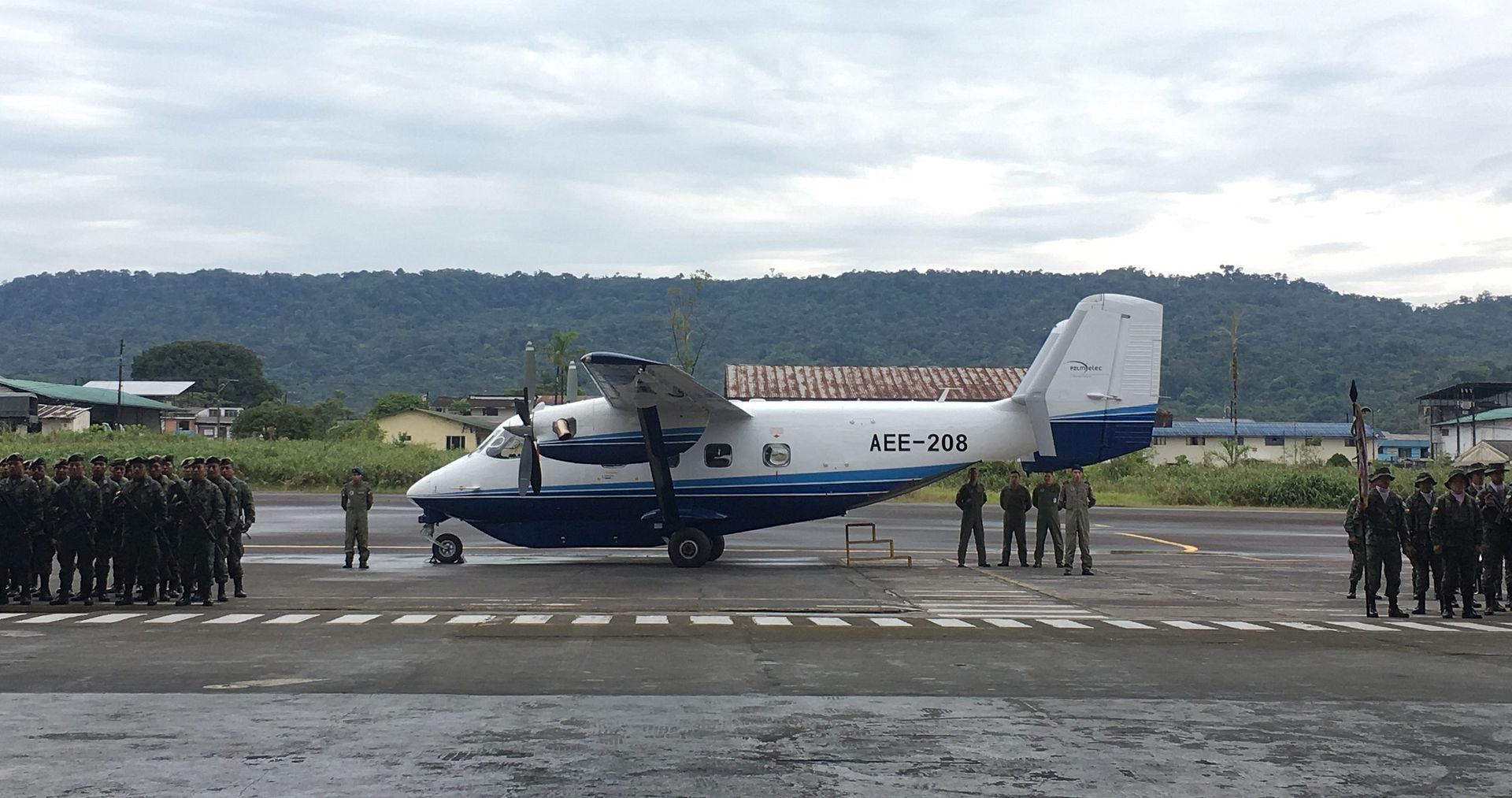
September 10, 2018 Toronto Commercial Aircraft, Press Release
Bombardier Commercial Aircraft announced today that Biman Bangladesh Airlines Ltd. has ordered three new Q400 turboprops by signing a purchase agreement with the Canadian Commercial Corporation (CCC).
Based on the list price of the Q400 aircraft, the firm order is valued at approximately US$106 million.
?We are very pleased that Biman is expanding its Q400 fleet with this order for three new aircraft,? said Fran?ois Cognard, VP, Sales, Asia Pacific. ?The Q400?s greater seating and cargo capacity really set it apart from the competition. Furthermore, the Q400?s mix of turboprop economics and jet like performance were the best match for Biman?s mix of short and long-range routes. Operators coming back for more Q400 aircraft really validates the benefits of the aircraft?s unique characteristics.?
?We are very excited about adding these Q400s to our fleet. We currently operate two Q400s and without hesitation, we can say that these aircraft are ideal for our domestic and regional operations,? said Mr. A M Mosaddique Ahmed, Managing Director and CEO, Biman Bangladesh Airlines. With its outstanding economics, comfort and operational flexibility, the Q400 will allow us to offer high frequency services within Bangladesh and neighboring countries.?
?We are extremely pleased to be supporting Bombardier in selling their Q400 aircraft to Biman Bangladesh Airlines Ltd.,? said Ian McLeod, Vice-President of Business Development and Sales for the Canadian Commercial Corporation. ?Canada and Bangladesh enjoy strong bi-lateral ties through trade and investment, development cooperation, and people-to-people links. Increasing the capacity of the national carrier supports these efforts and the economic growth of the country; improving their lives of Bangladeshis by increasing their access to domestic and international destinations.?
About Biman
Biman Bangladesh Airlines is the National Flag Carrier airline of Bangladesh. Its main hub is at Hazrat Shahjalal International Airport in Dhaka and it also operates flights from its secondary hubs at Shah Amanat International Airport in Chittagong and Osmani International Airport in Sylhet. The airline provides international passenger and cargo services to Asia and Europe, as well as all domestic routes inside Bangladesh. Biman currently flies to 15 international and seven domestic routes.
About the Canadian Commercial Corporation
The Canadian Commercial Corporation (CCC) is the Government of Canada?s international government-to-government contracting organization. A Canadian Crown corporation, CCC helps Canadian exporters sell goods and services to foreign governments around the world using a government-to-government contract mechanism. In 2017-18, the Canadian Commercial Corporation was active in 78 countries around the world, working with 182 Canadian companies, to sign export contracts worth over $1.3 billion.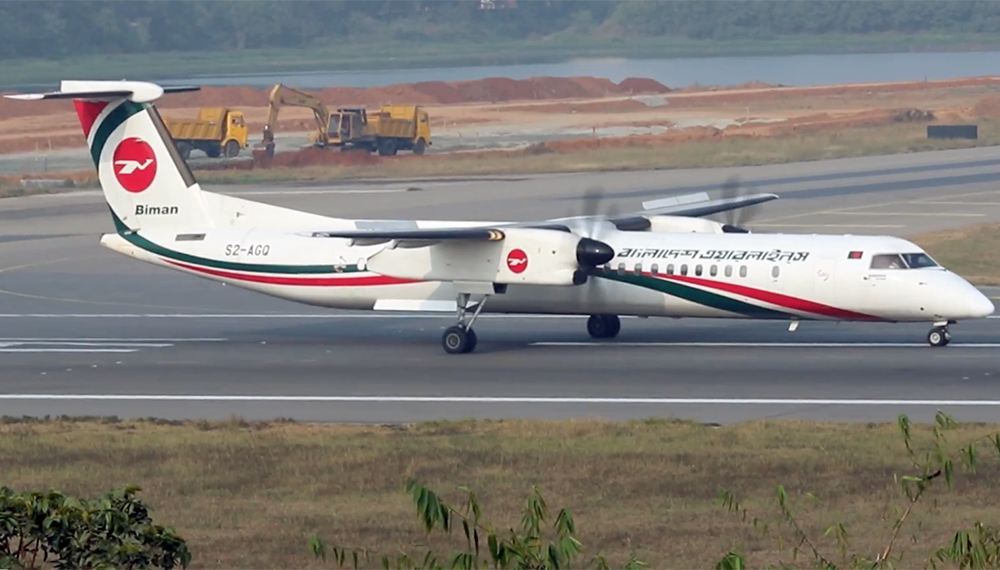
-
 Main AdminGreek F-16 fighter jets await final inspection at Cairo West Air Base, Egypt, September 10, 2018, before a simulated flying mission during Bright Star 2018. BS 2018 is an important symbol of the long-standing relationship between the U.S. military and the Egyptian Armed Forces. (U.S. Air Force photo by SrA Amanda Stanford)
Main AdminGreek F-16 fighter jets await final inspection at Cairo West Air Base, Egypt, September 10, 2018, before a simulated flying mission during Bright Star 2018. BS 2018 is an important symbol of the long-standing relationship between the U.S. military and the Egyptian Armed Forces. (U.S. Air Force photo by SrA Amanda Stanford)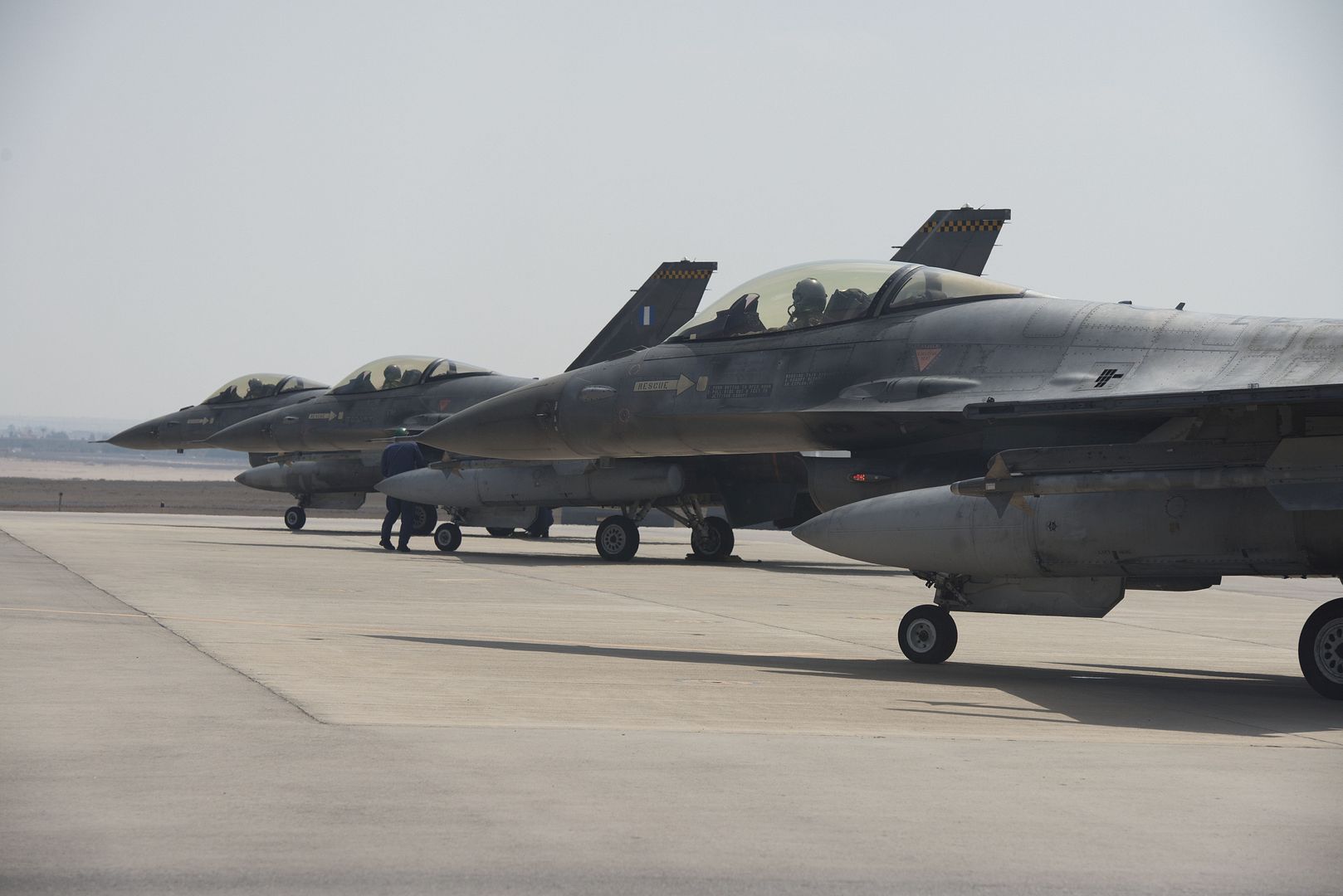
EVERETT, Wash., Sept. 10, 2018 ? The U.S. Air Force today awarded Boeing [NYSE: BA] a $2.9 billion contract for 18 KC-46A tanker aircraft, spares, support equipment, spare engines and wing air refueling pod kits. With this fourth production lot, Boeing now is on contract for 52 KC-46 tankers.
Boeing received its first two production lots, for 7 and 12 aircraft, in August 2016. The third lot, for 15 aircraft, was awarded in January 2017.
?We?re excited to partner with the Air Force on an aircraft that will provide its fleet unmatched capabilities and versatility,? said Mike Gibbons, Boeing KC-46A tanker vice president and program manager. ?This is another big milestone for the team and we look forward to delivering this next-generation, multi-role tanker for years to come.?
Boeing plans to build 179 of the 767-based refueling aircraft for the Air Force to replace its legacy tanker fleet. Tanker deliveries are expected to begin later this year.
Boeing received an initial contract in 2011 to design and develop the Air Force?s newest tanker aircraft. The KC-46A is a multirole tanker that can refuel all allied and coalition military aircraft compatible with international aerial refueling procedures and can carry passengers, cargo and patients.
Boeing is assembling KC-46 aircraft at its Everett, Wash., facility.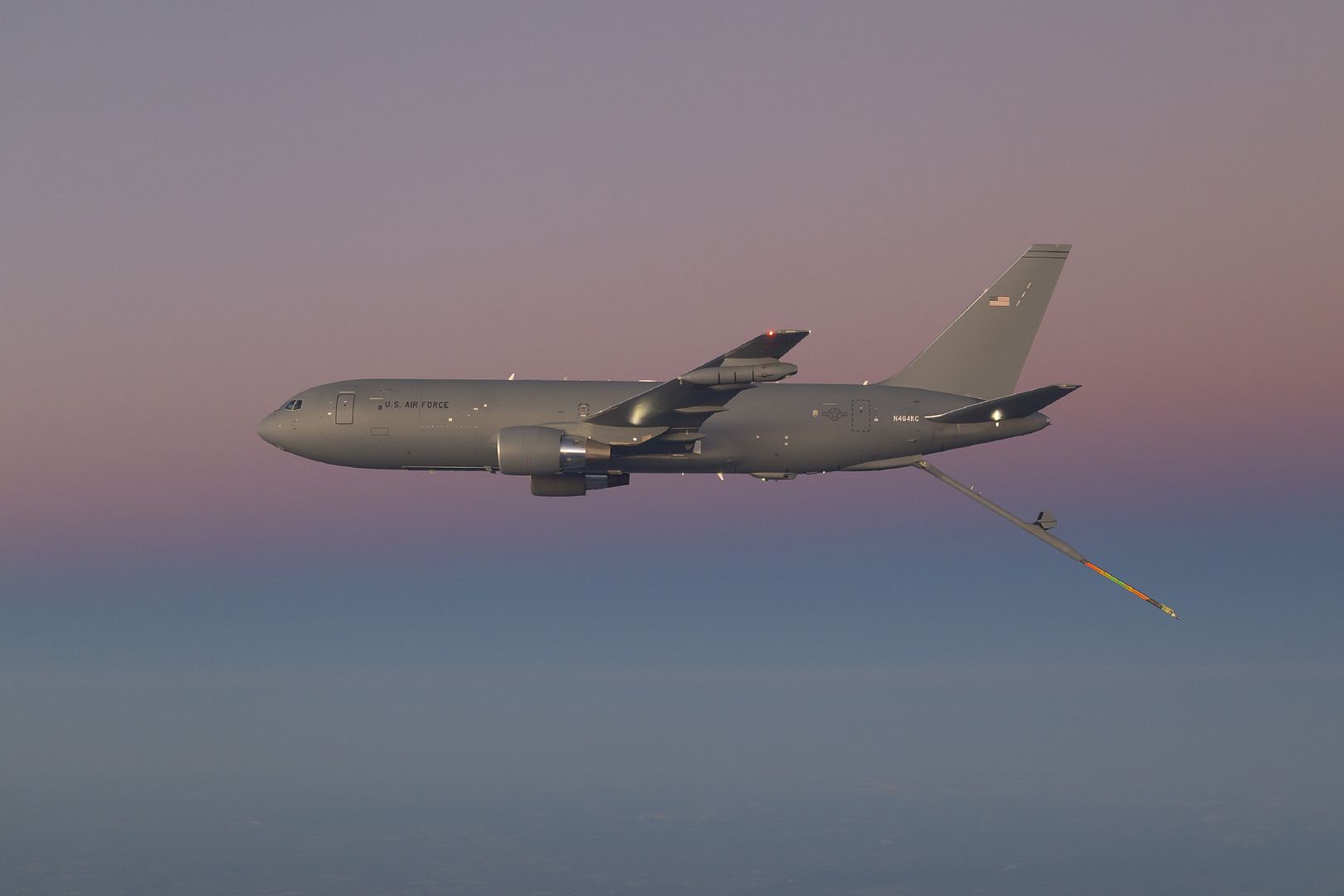
-
 Main AdminCoast Guardsmen at Air Station Elizabeth City, North Carolina, move air assets out of the area of potential impact of Hurricane Florence, Sept. 12, 2018. The Coast Guard is strategically moving assets to protect them from the storm?s impact, while ensuring they are in an optimal position for the response. (U.S. Coast Guard photo by Auxiliarist Trey Clifton)
Main AdminCoast Guardsmen at Air Station Elizabeth City, North Carolina, move air assets out of the area of potential impact of Hurricane Florence, Sept. 12, 2018. The Coast Guard is strategically moving assets to protect them from the storm?s impact, while ensuring they are in an optimal position for the response. (U.S. Coast Guard photo by Auxiliarist Trey Clifton)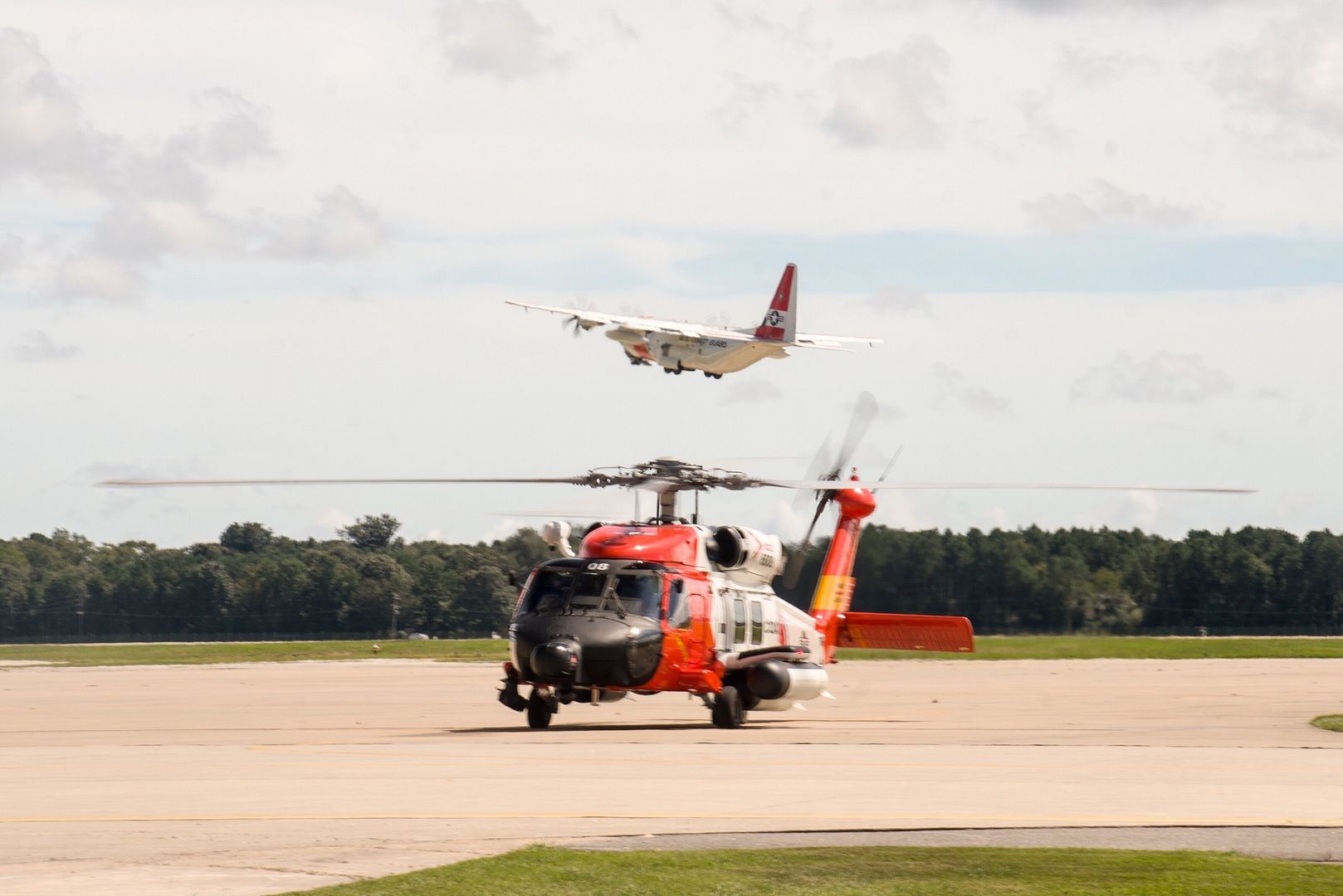
09.10.2018
A Jordanian Special Operations Forces soldier provides security after repelling from an Egyptian helicopter during Military Operations in Urban Terrain training, which was part of Exercise Bright Star. The exercise is held to promote and enhance regional security and cooperation between the seven participating nations, which include the Arab Republic of Egypt, the United States, Jordan, the Kingdom of Saudi Arabia, Greece, the United Kingdom, and France.
Photo by Sgt. 1st Class Whitney Hughes.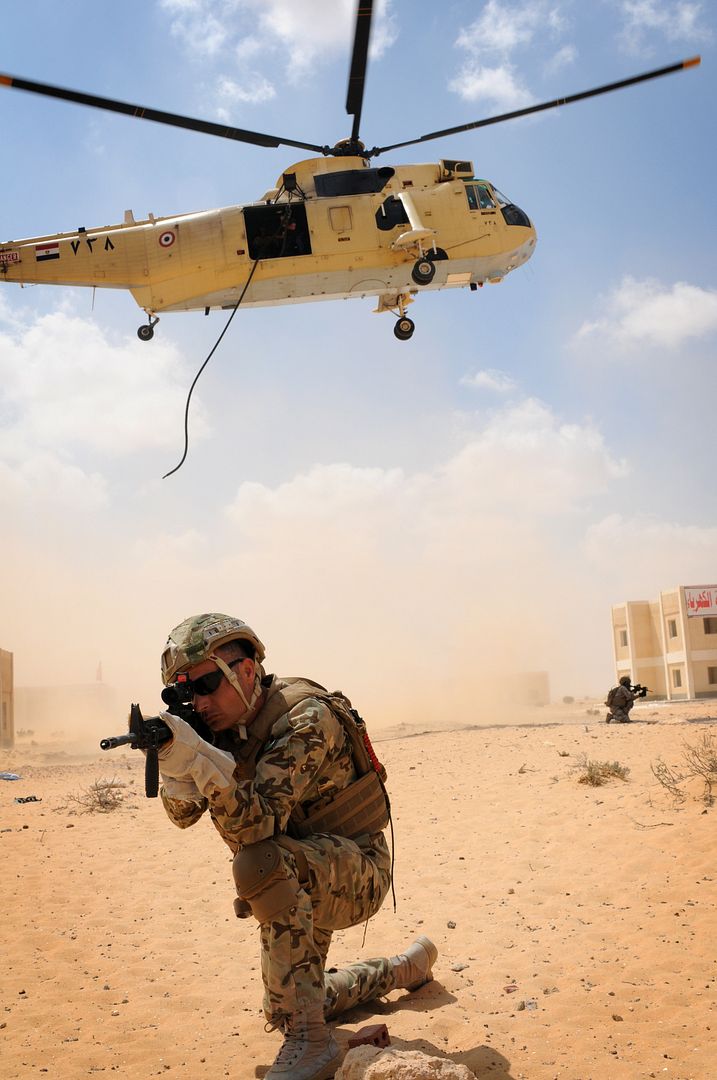
KEY WEST, FL, UNITED STATES. 09.12.2018
E-2 Hawkeyes and C-2 Greyhounds from Carrier Airborne Early Warning Squadron (VAW)120 "Greyhawks" are at Naval Air Station Key West Boca Chica Field!
Photo's by Petty Officer 3rd Class Arnesia R McIntyre.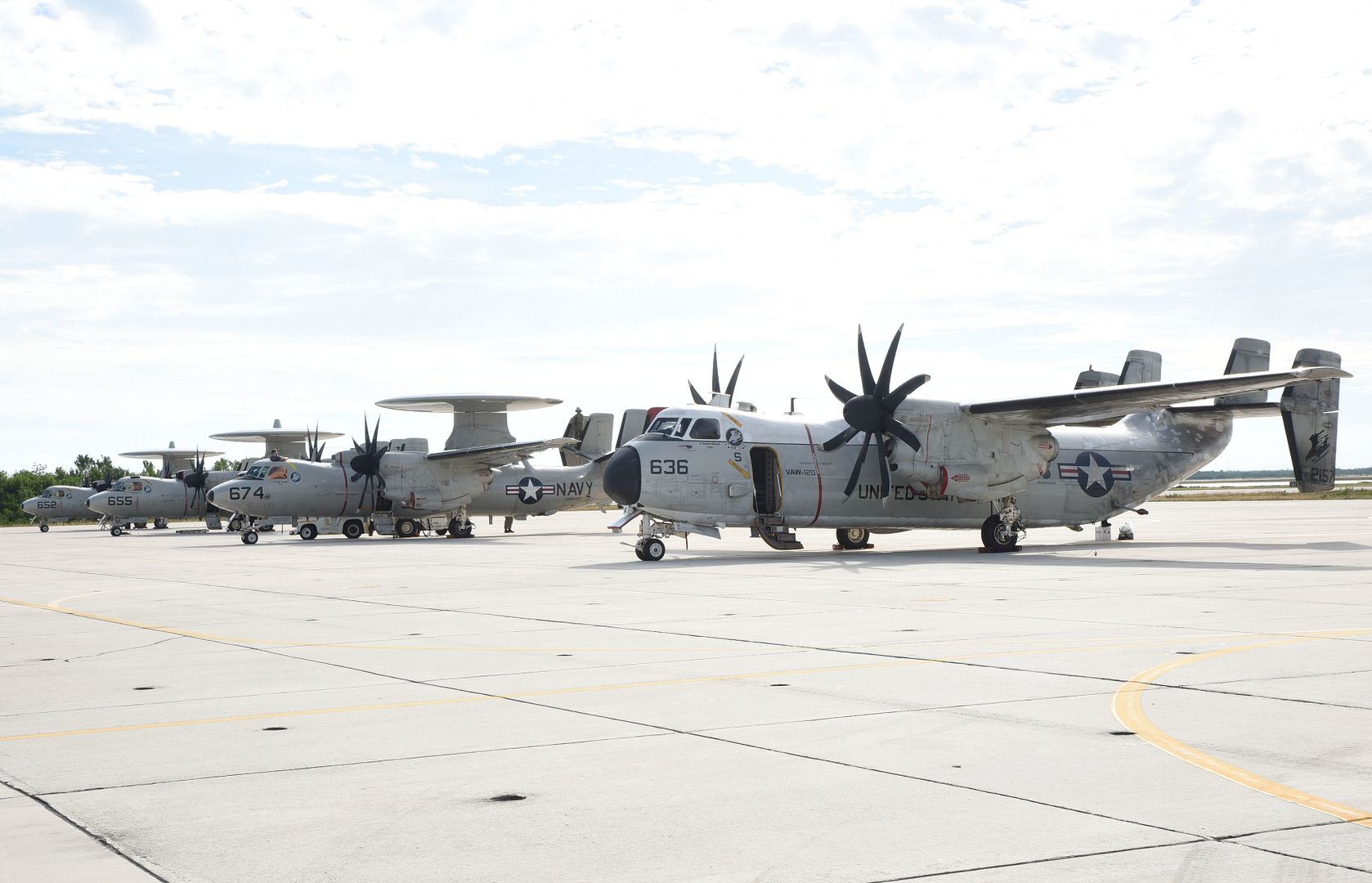
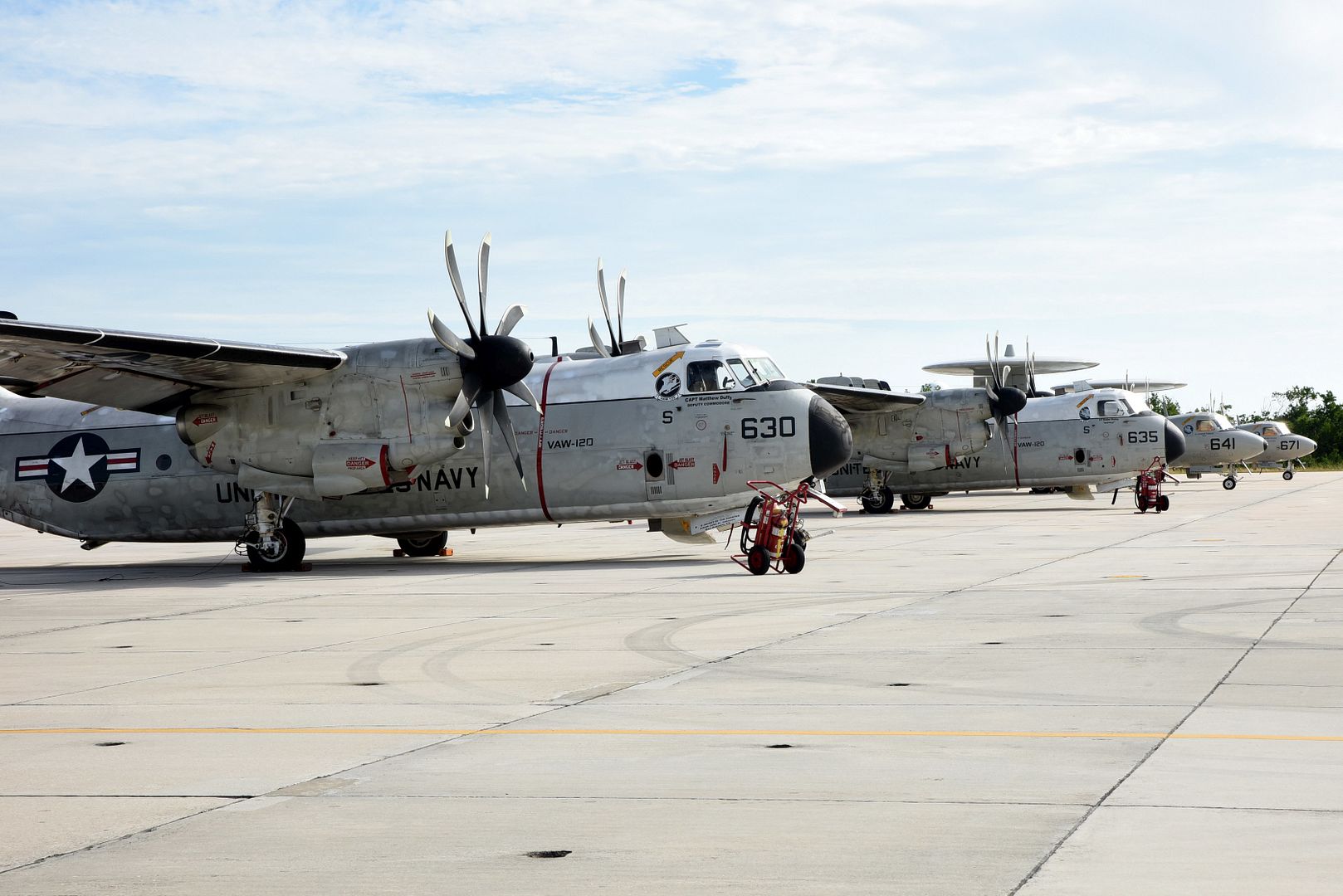
VIRGINIA BEACH, Va. (Sept. 12, 2017) In preparation of the arrival of Hurricane Florence, F/A-18E/F Super Hornets assigned to the "Gladiators" of Strike Fighter Squadron (VFA) 106, prepare to evacuate Naval Air Station Oceana to ensure personnel safety and prevent damage to Navy assets as a proactive measure. More than 100 Hampton Roads based aircraft assigned to Commander, Naval Air Force Atlantic have departed the area as a result of the incoming storm. The aircraft are being diverted to bases in six other states not threatened by the hurricane. Commander, U.S. Fleet Forces Command ordered all U.S. Navy ships in the Hampton Roads area to sortie on Sept. 10, ahead of Hurricane Florence. There are nearly 30 ships preparing to get underway from Naval Station Norfolk and Joint Expeditionary Base Little Creek as Hurricane Florence is forecasted to bring high winds and rain to the Mid-Atlantic coast. Ships will be directed to areas of the Atlantic where they will be best postured for storm avoidance. (U.S. Navy photo by Mass Communication Specialist 2nd Class Ruben Reed)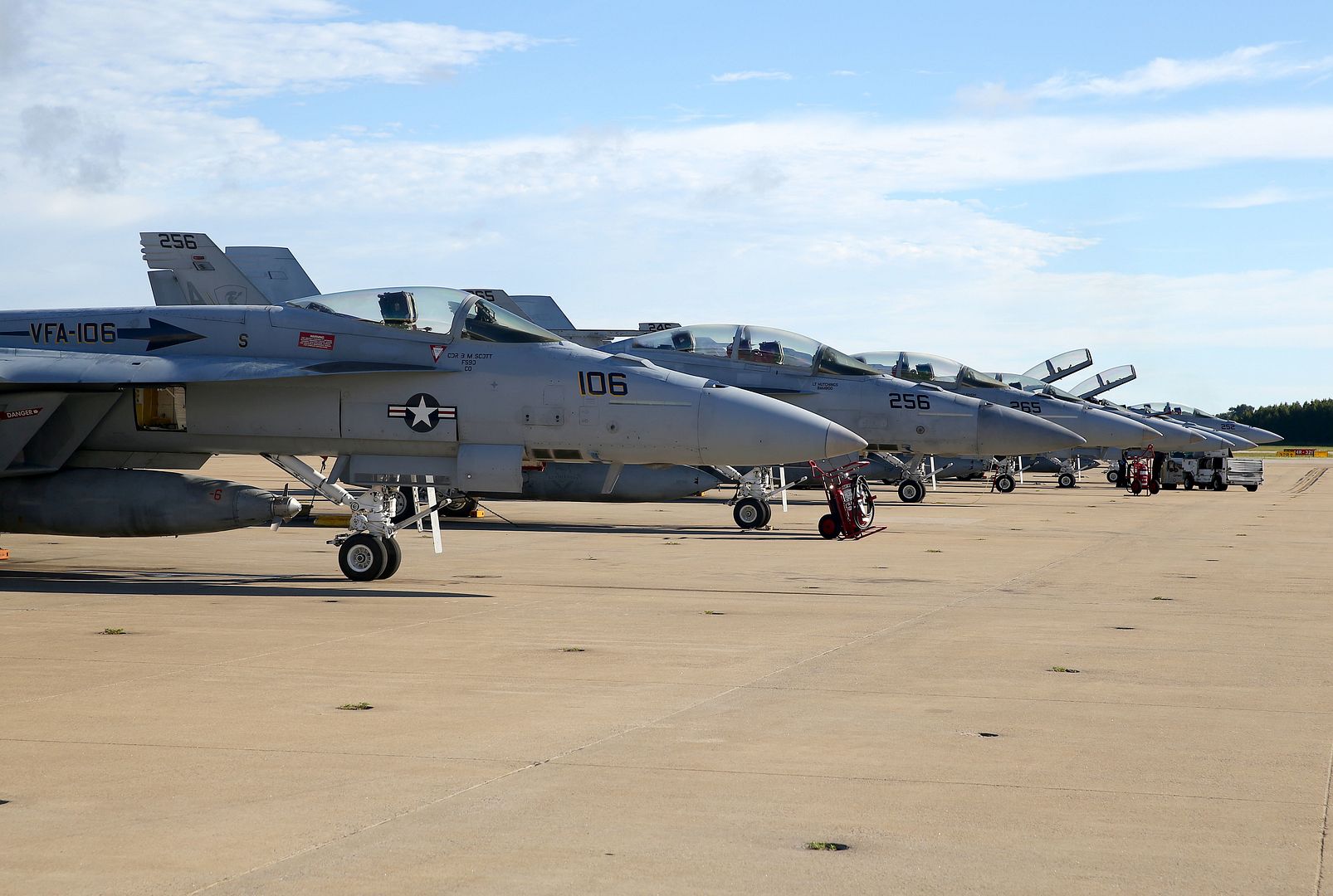
PENSACOLA, Florida. (Sept. 12, 2018) The U.S. Navy Flight Demonstration Squadron, the Blue Angels, Diamond pilots prepare for the Low Break Cross during a practice demonstration at Naval Air Station (NAS) Pensacola. The Blue Angels are scheduled to perform more than 60 demonstrations at more than 30 locations across the U.S. and Canada in 2018. (U.S. Navy photo by Mass Communication Specialist 2nd Class Timothy Schumaker/Released)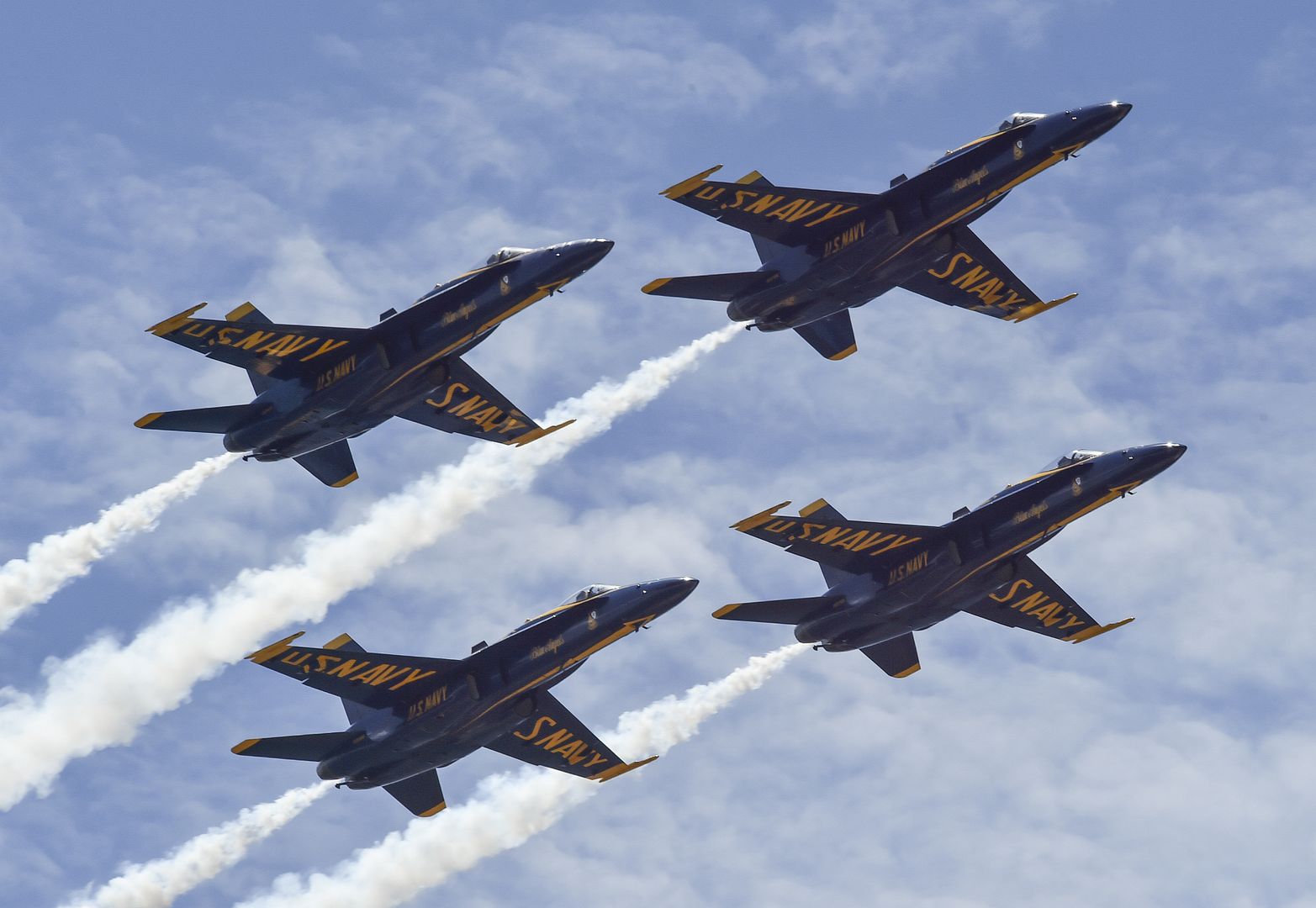
A C-17 Globemaster III from Joint Base Charleston lands at Scott AFB, Illinois, Sept. 11, 2018. Scott AFB and Mid-America Airport are expected to host a fleet of C-17?s assigned to the 437th Airlift Squadron that were evacuating Hurricane Florence, a Category 4 storm heading toward the East Coast. (U.S. Air Force photo by Airman 1st Class Tara Stetler)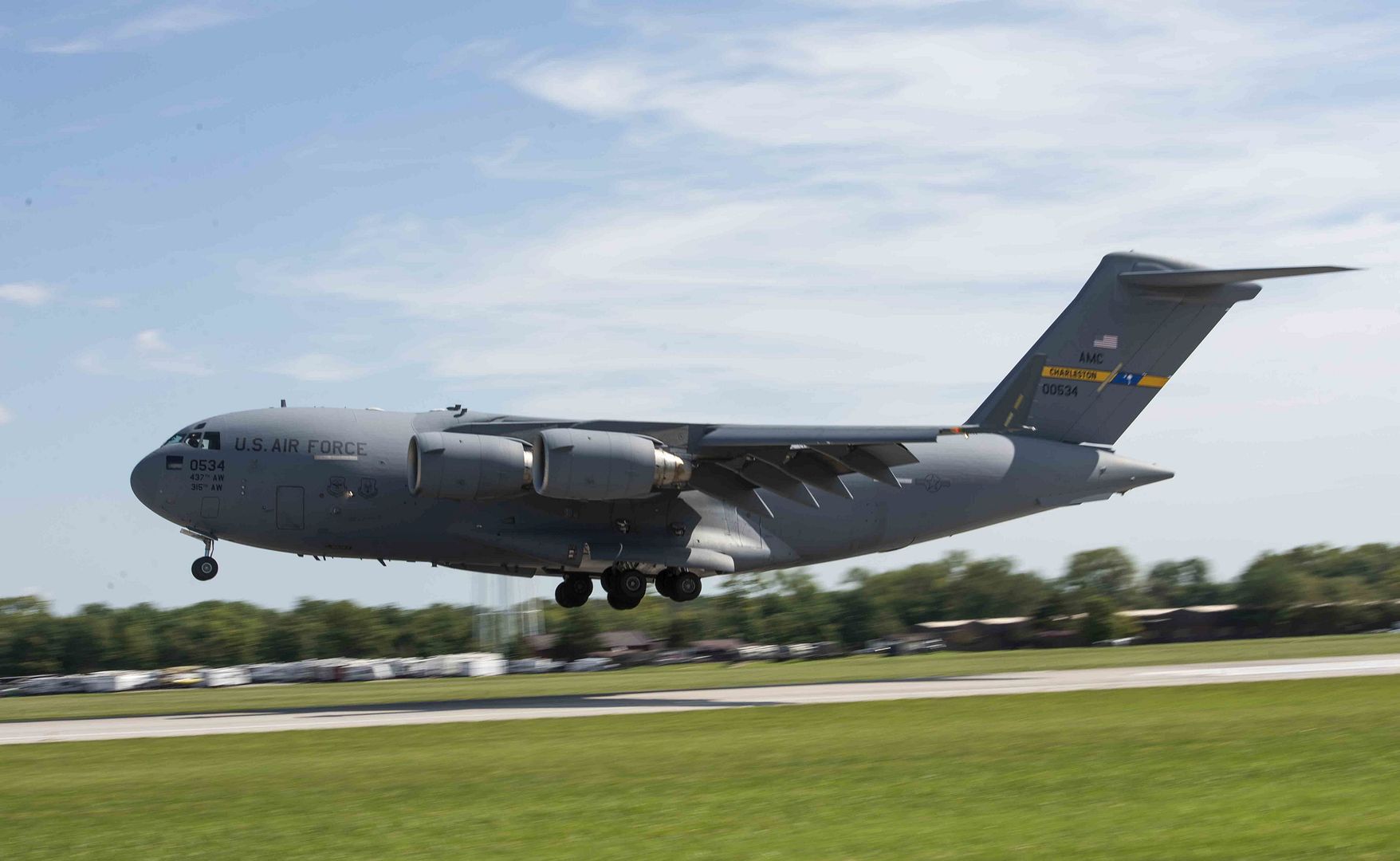
F-22 Raptors and T-38 Talons from Joint Base Langley-Eustis, Virginia arrive at Rickenbacker Air National Guard Base September 11, 2018 seeking shelter from hurricane Florence. The 121st Air Refueling Wing has agreements with several units to provide shelter from inclement weather. (U.S. Air National Guard photo's by Senior Master Sgt. Ralph Branson)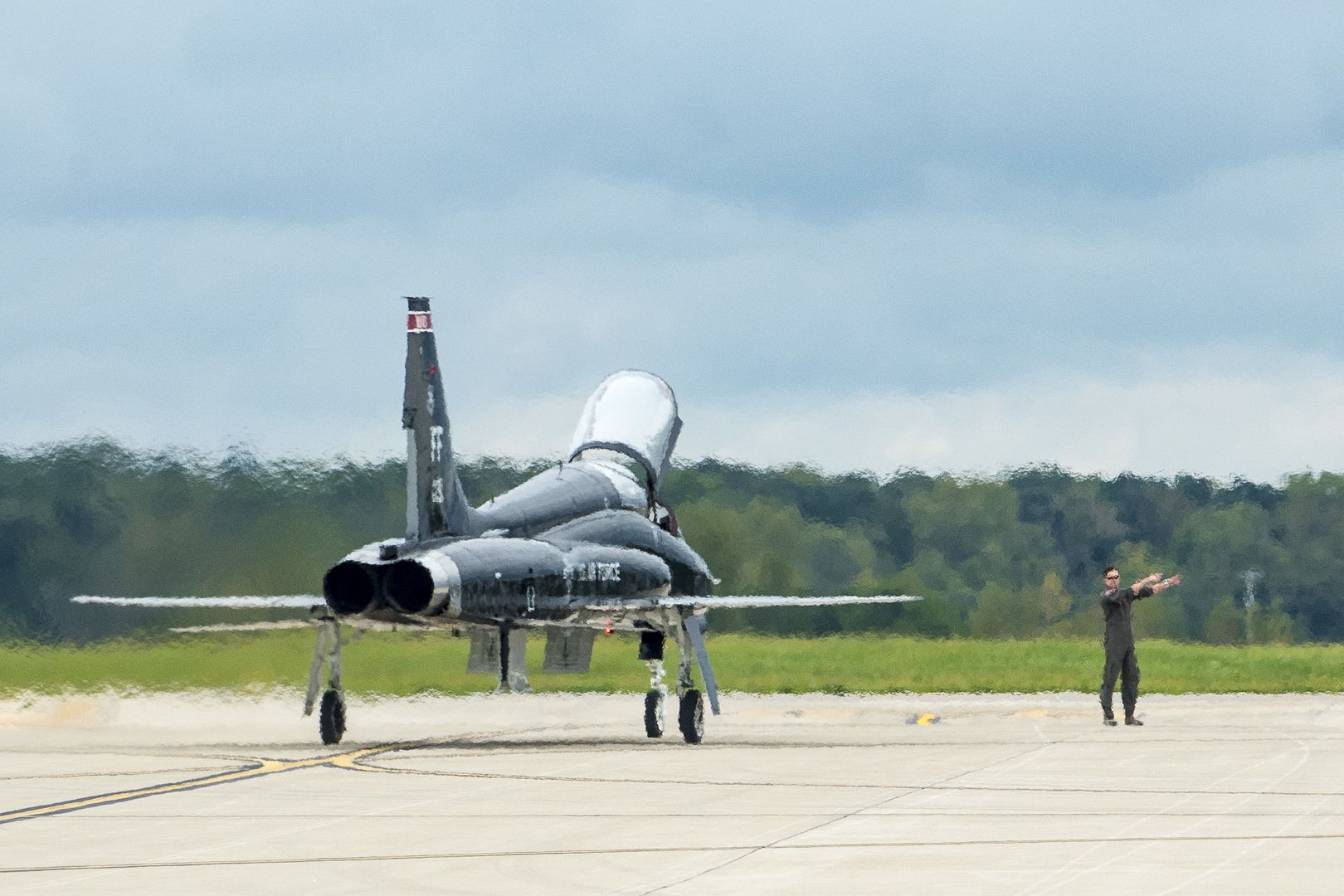
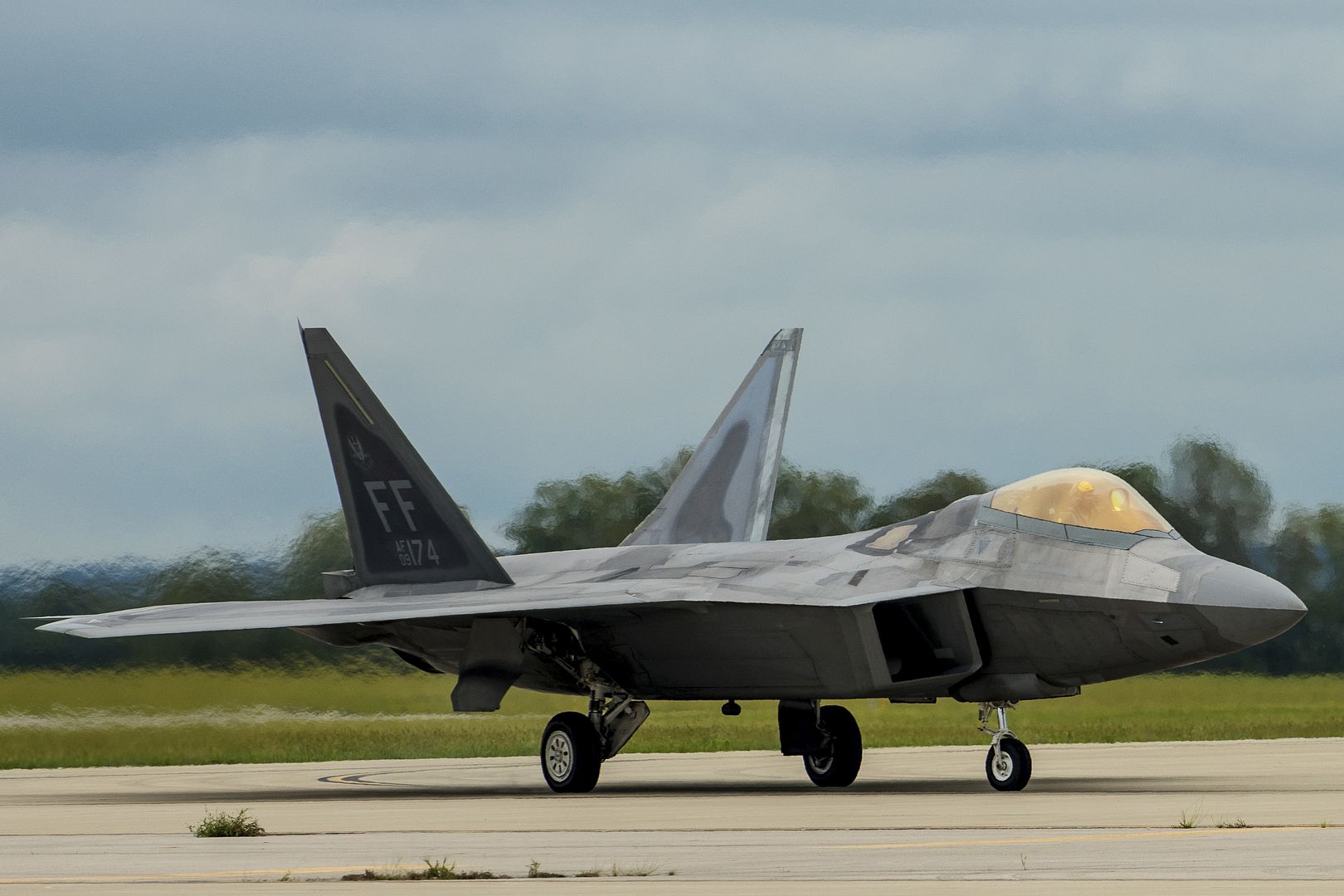

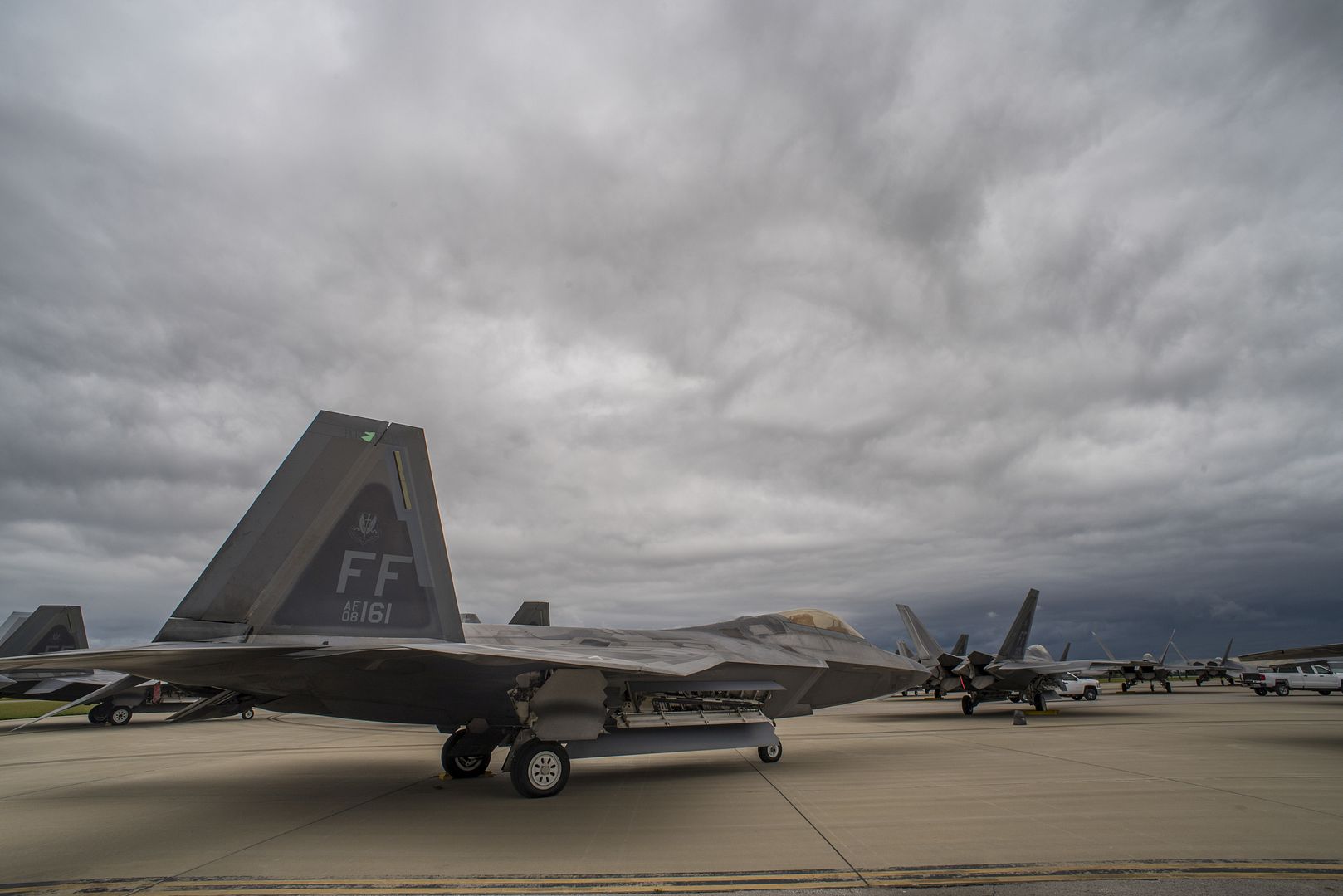
A C-12 Huron from Fort Rucker, Alabama, arrives at Barksdale Air Force Base, La., Sept. 12, 2018. The aircraft evacuated to Barksdale to avoid possible damage from Hurricane Florence. (U.S. Air Force photo by Senior Airman Stuart Bright)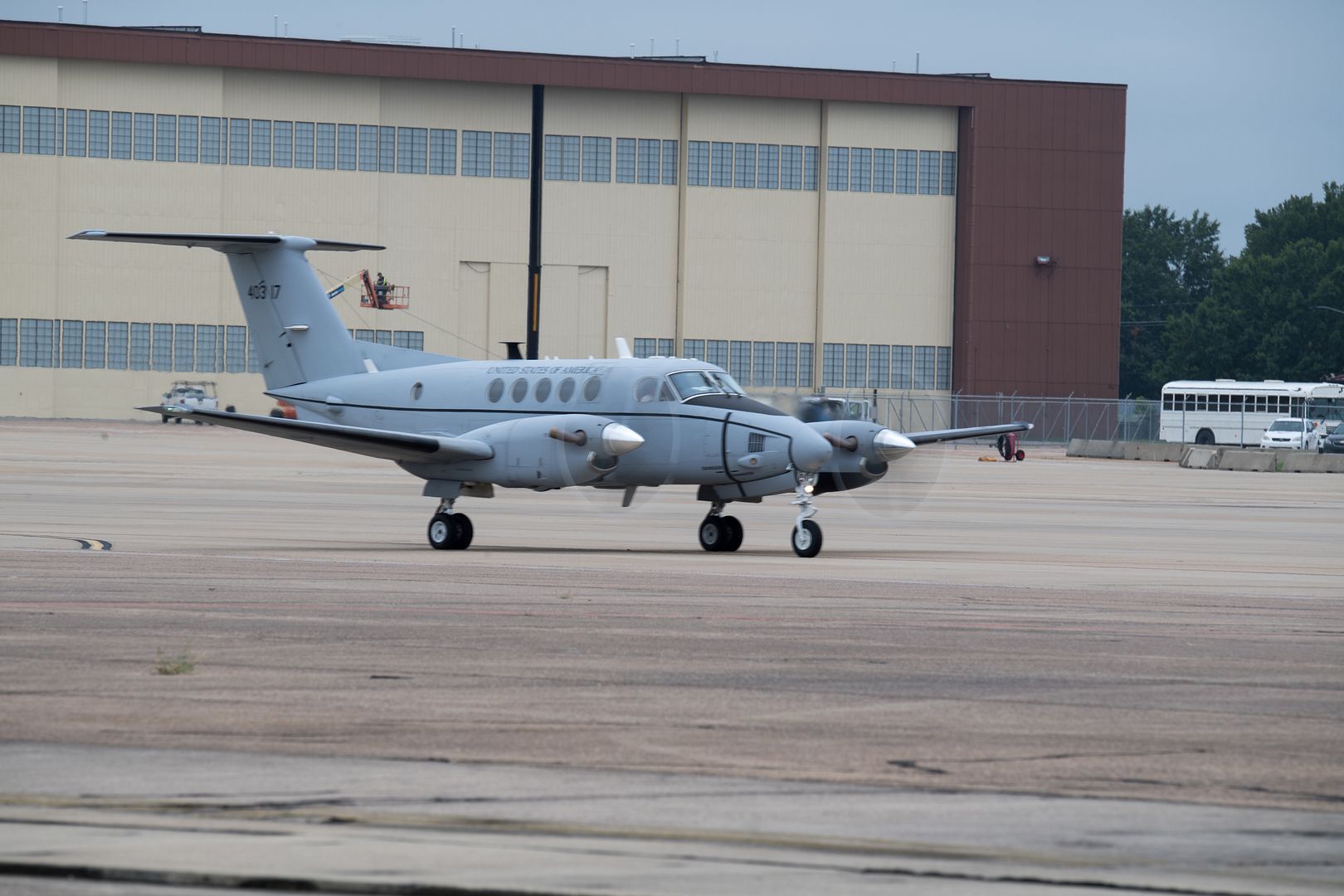
A KC-135 Stratotanker, from Seymour Johnson Air Force Base, North Carolina, arrives at Barksdale Air Force Base, La., Sept. 12, 2018. The aircraft evacuated to Barksdale to avoid possible damage from Hurricane Florence. (U.S. Air Force photo by Senior Airman Stuart Bright)
U.S. Airmen from the South Carolina Air National Guard's 169th Fighter Wing at McEntire Joint National Guard Base, evacuate F-16 Fighting Falcon fighter jets to Homestead Air Force Base, Florida, Sept. 12, 2018 in response to the severe weather threat from quickly approaching Hurricane Florence. More than 2,100 South Carolina National Guard Airmen and Soldiers have been mobilized to prepare, respond and participate in recovery efforts as forecasters project Hurricane Florence will increase in strength with potential to be a Category 4 storm and a projected path to make landfall in the Carolinas and along the mid-atlantic region. (U.S. Air National Guard photo's by Master Sgt. Caycee Watson)&(Senior Master Sgt. Edward Snyder)
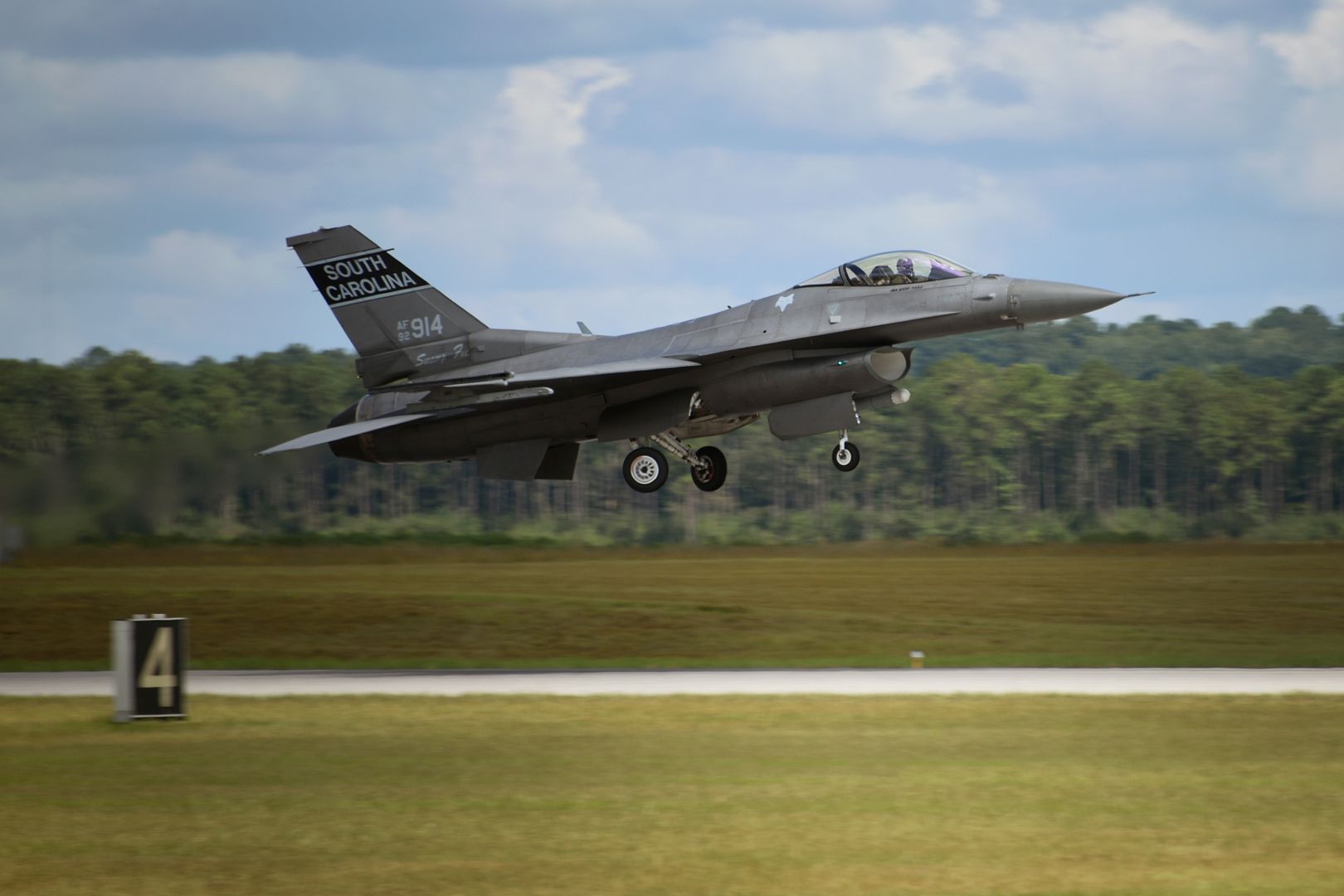
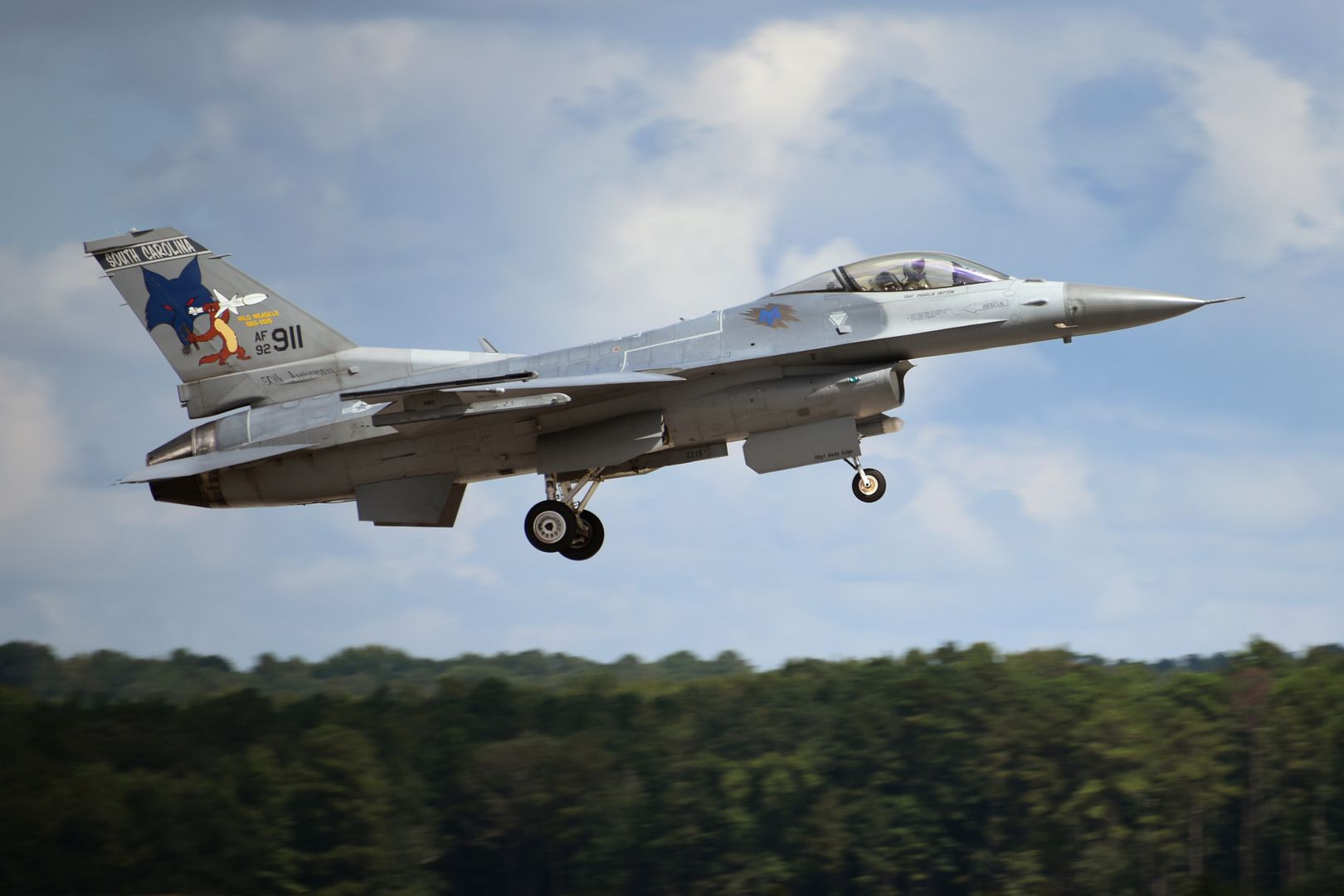
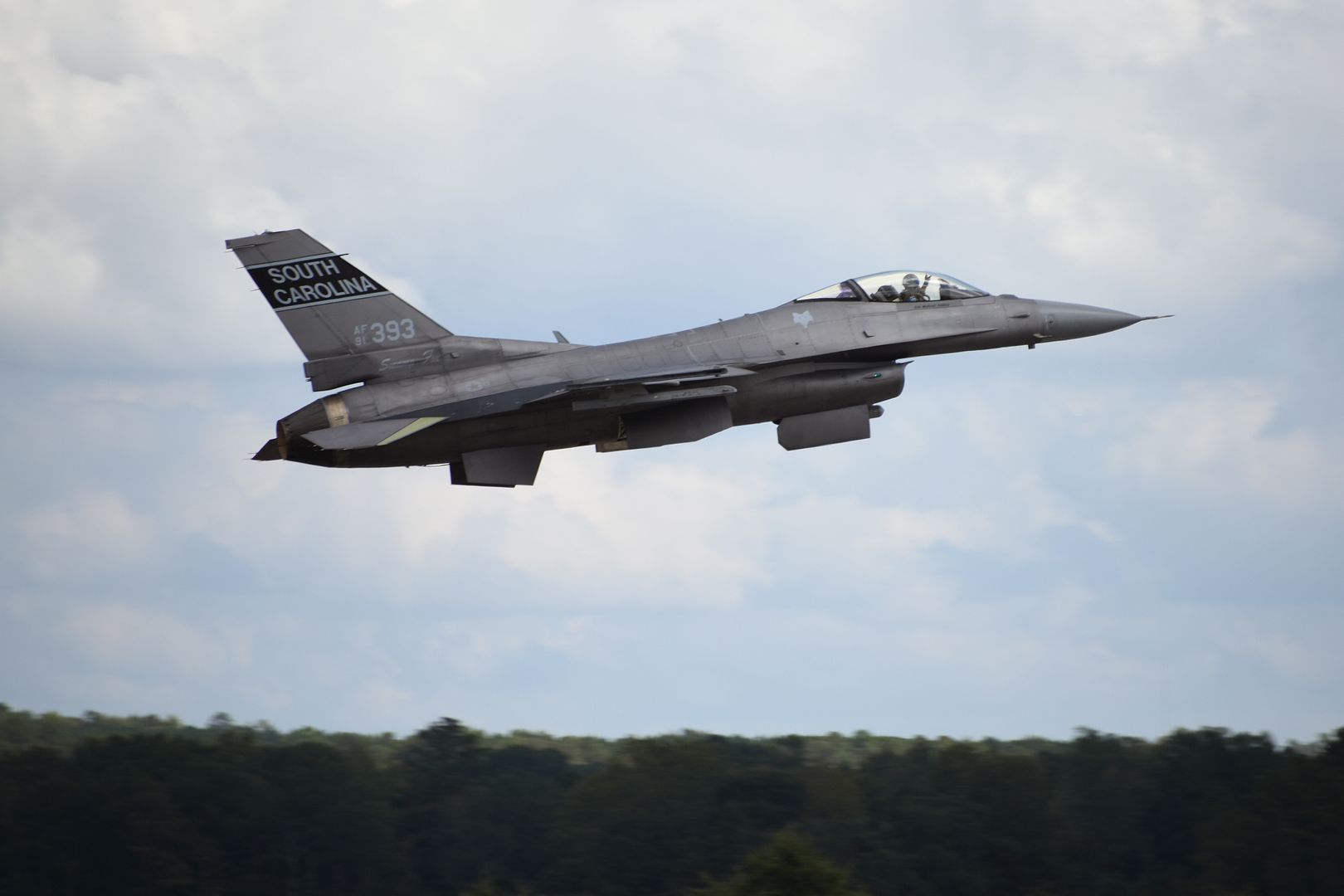
ATLANTIC OCEAN (Sept. 11, 2018)
An F/A-18F Super Hornet assigned to the Red Rippers of Strike Fighter Squadron (VFA) 11 launches from the flight deck aboard the Nimitz-class aircraft carrier USS Harry S. Truman (CVN 75). Harry S. Truman is conducting sustainment operations in the Atlantic. U.S. Navy photo by Mass Communication Specialist 2nd Class Anthony Flynn (Released)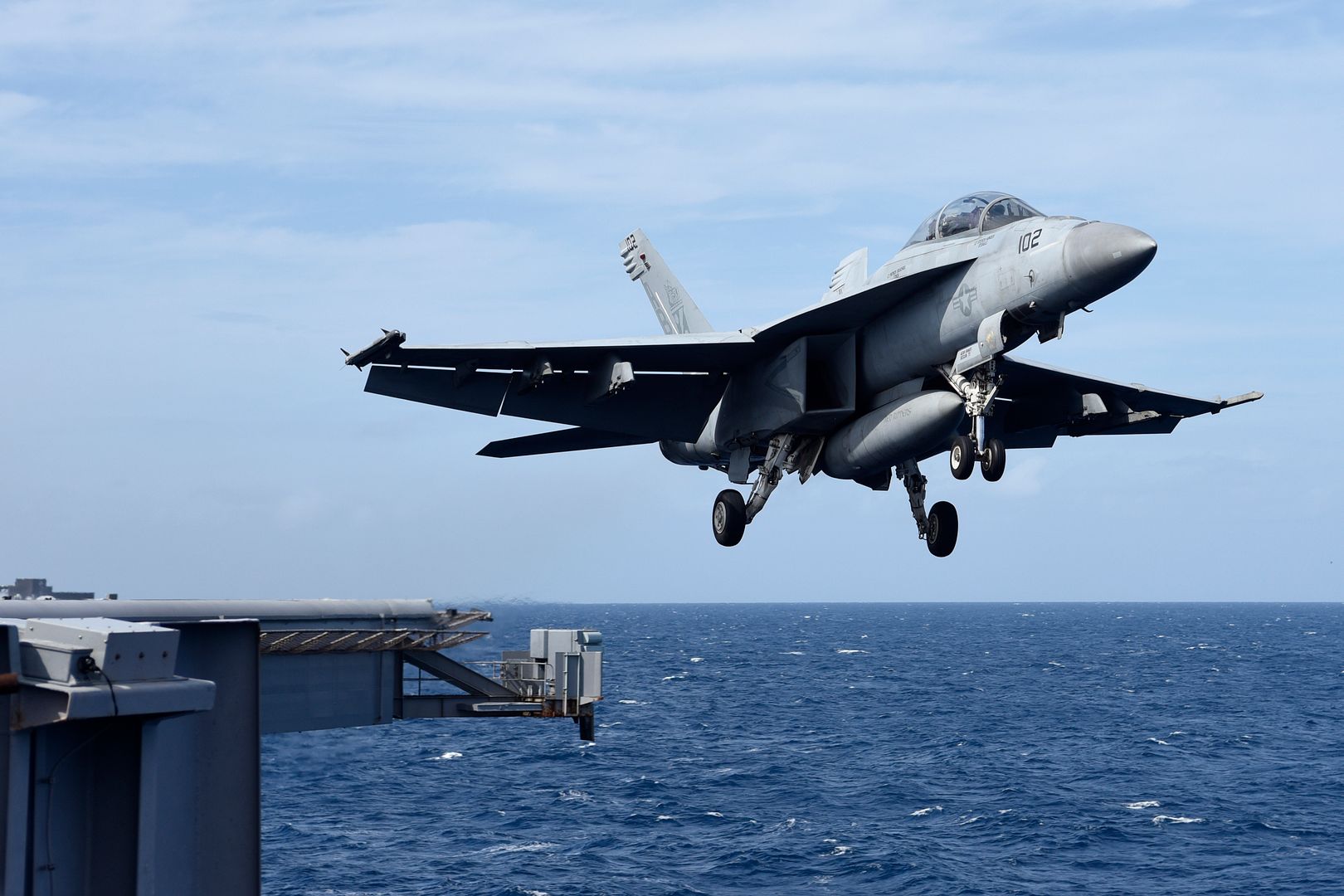
GULF OF ADEN (Sept. 8, 2018) An F-35B Lightning II assigned to the Avengers of Marine Fighter Attack Squadron (VMFA) 211 launches from the flight deck of the Wasp-class amphibious assault ship USS Essex (LHD 2) while participating in Theater Amphibious Combat Rehearsal (TACR) 18. Led by Naval Amphibious Force, Task Force 51/5th Marine Expeditionary Brigade, TACR integrates U.S. Navy and Marine Corps assets to practice and rehearse a range of critical combat-related capabilities available to U.S. Central Command, both afloat and ashore, to promote stability and security in the region. U.S. 5th Fleet and coalition assets are participating in numerous simultaneous exercises as part of the greater Theater Counter Mine and Maritime Security Exercise to ensure maritime stability and security in the U.S. Central Command area of responsibility, connecting the Mediterranean and the Pacific through the western Indian Ocean and three strategic choke points. (U.S Navy photo's by Mass Communication Specialist Seaman Sabyn L. Marrs/Released)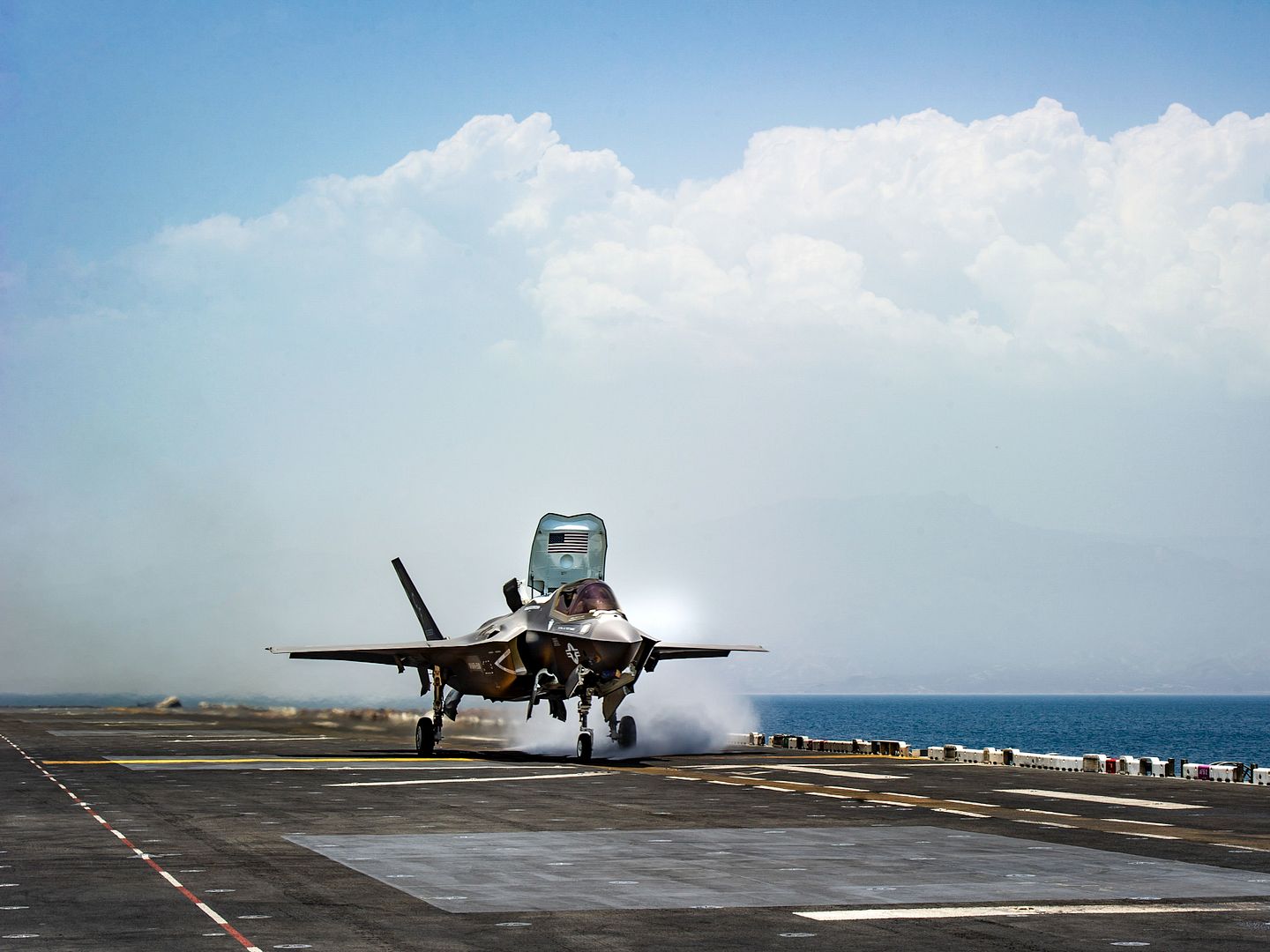
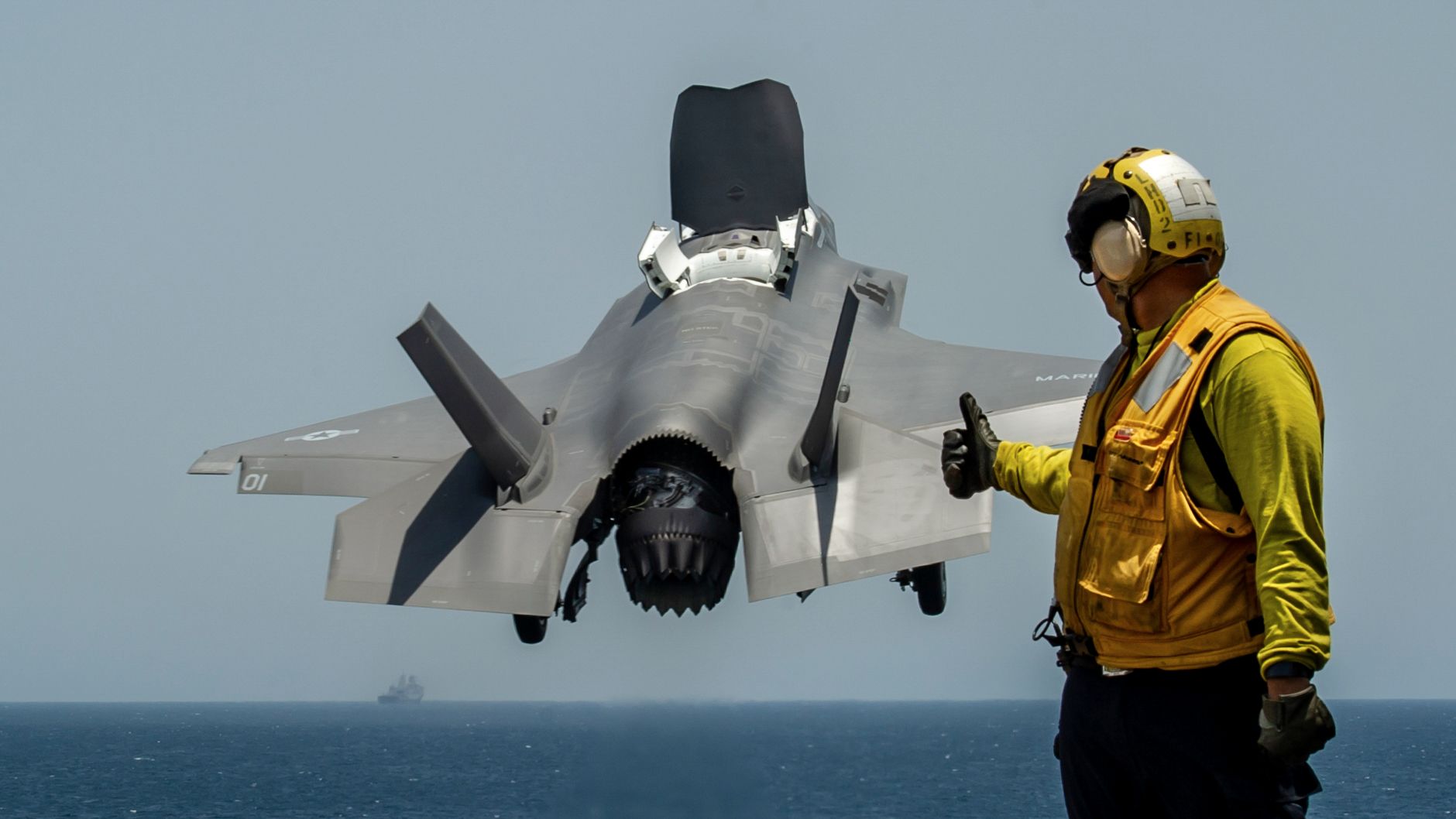
08-09-18
A Hawk T2 with the markings of the newly formed XXV(Fighter) Squadron took to the skies with two IV (AC) Squadron Hawks.
On the re-formation today of XXV(Fighter) Squadron at RAF Valley, RAF Photographer SAC Chris Thompson-Watts took to the skies to record the historic first flight of an XXV(Fighter) Squadron-marked aircraft.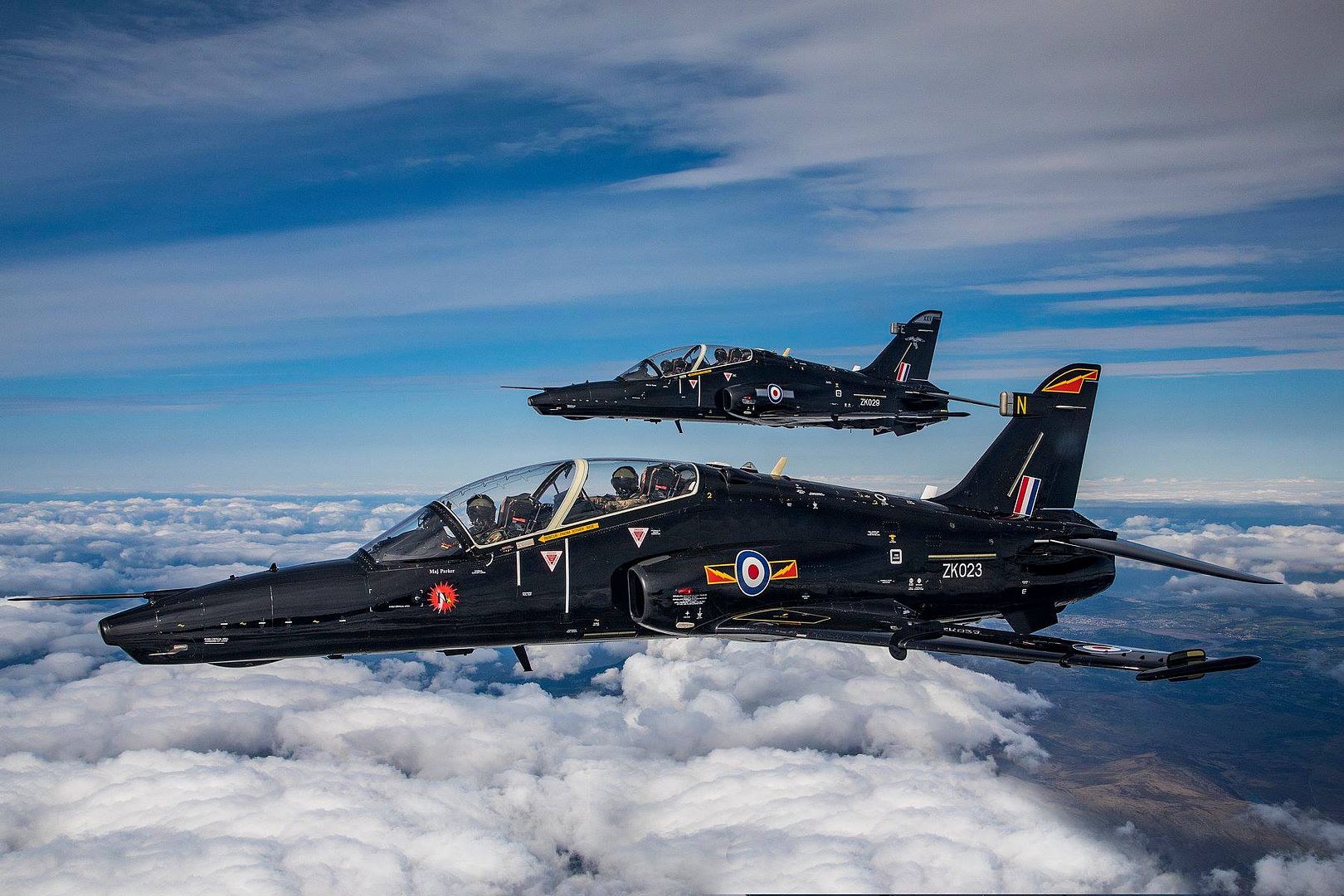
The sortie, to support the RAF100 Freedom of Bangor parade took place over Anglesey and North Wales, and featured both XXV(Fighter) and IV(Army Co-operation) Squadron aircraft.
Both Squadrons operate the Hawk T2, and their historic Squadron designators; Fighter in the case of XXV and Army Co-operation for IV Squadron were re-instated today by the Air Force Board to better reflect the long and distinguished wartime records and fighting ethos of both units.
-
 Main AdminCoast Guard crew members from Air Station Clearwater prepare an MH-60 Jayhawk helicopter for deployment to Savannah, Georgia, Wednesday, Sept. 12, 2018. Crews are surging assets to the Charleston area for the Hurricane Florence post-storm response. U.S. Coast Guard photo by Petty Officer 1st Class Michael De Nyse.
Main AdminCoast Guard crew members from Air Station Clearwater prepare an MH-60 Jayhawk helicopter for deployment to Savannah, Georgia, Wednesday, Sept. 12, 2018. Crews are surging assets to the Charleston area for the Hurricane Florence post-storm response. U.S. Coast Guard photo by Petty Officer 1st Class Michael De Nyse.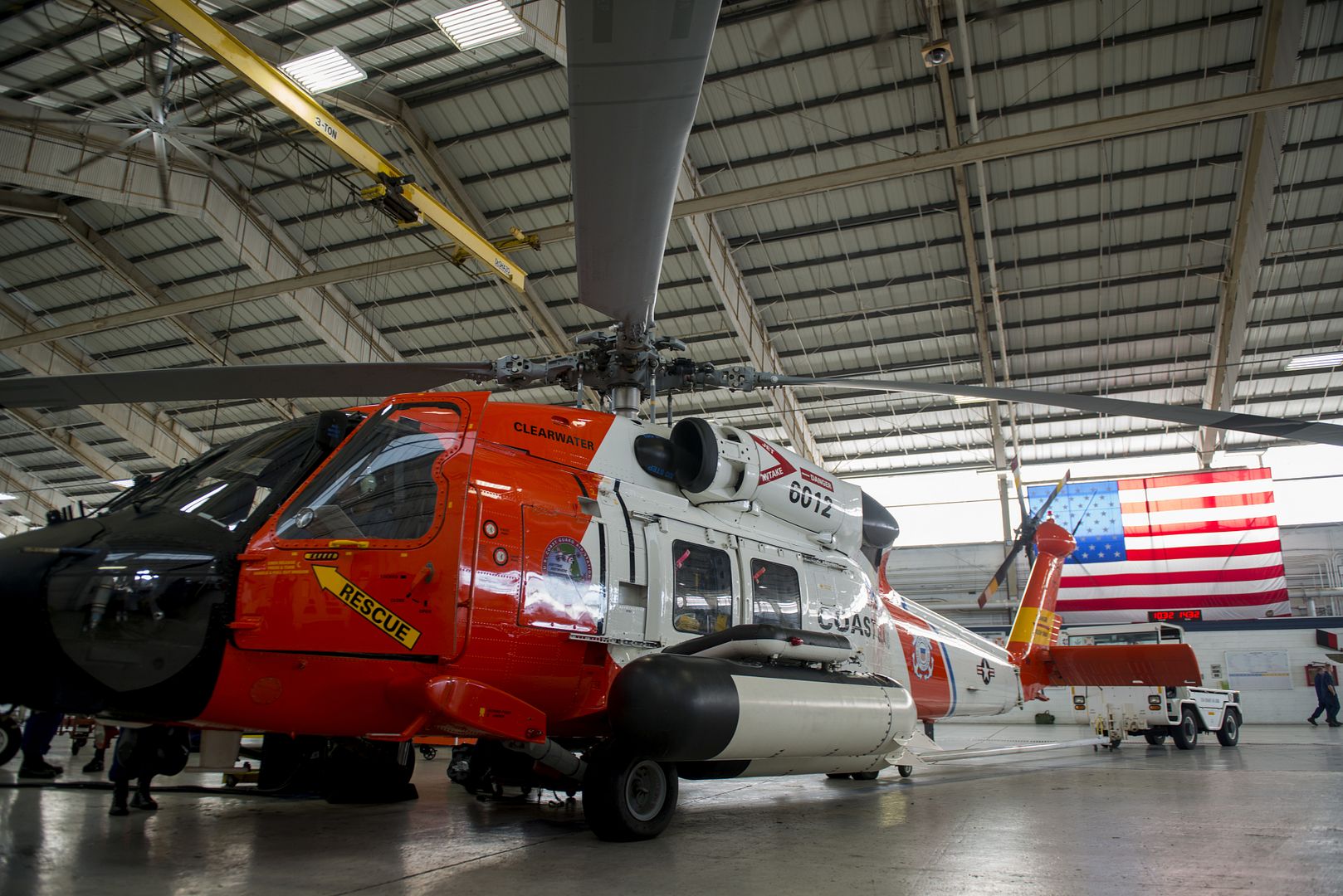
U.S. Air Force personnel from the Alaska and California Air National Guard unload vehicles, trailers and equipment from an AKANG 176th Wing C-17 Globemaster III airlift aircraft crewed by members of the 144th Airlift Squadron at Dover Air Force Base, Del., Sept. 13, 2018. Pararescue personnel from the AKANG?s 212th Rescue Squadron and CAANG?s 131st Rescue Squadron Wing are being staged in preparation for offering support to civil authorities as needed in response to hurricane relief operations. (U.S. Army National Guard photo by Staff Sgt. Balinda O?Neal Dresel)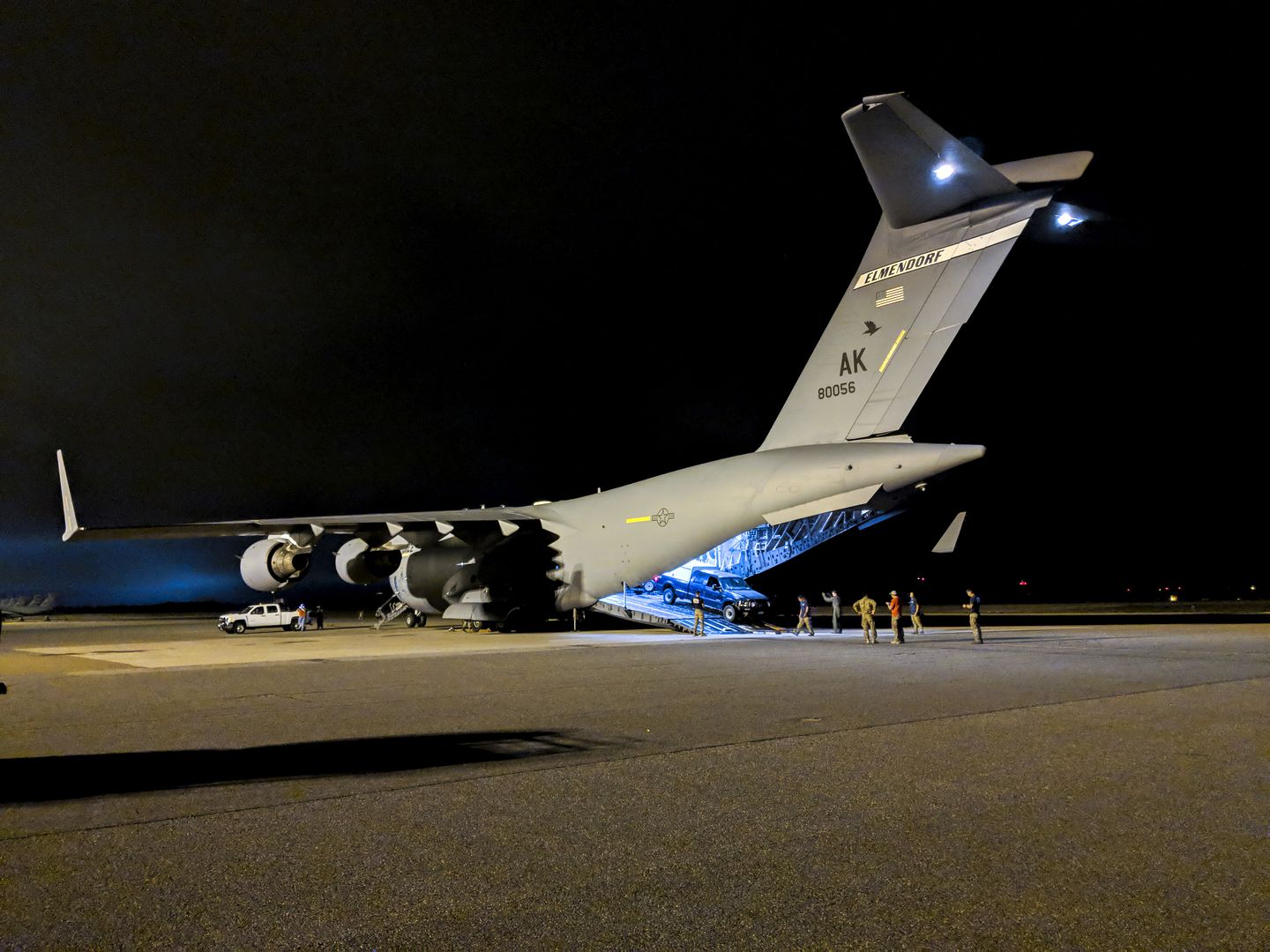
An F-15E Strike Eagle, from Seymour Johnson Air Force Base, North Carolina, arrives at Barksdale Air Force Base, La., Sept. 12, 2018. The aircraft evacuated to Barksdale to avoid possible damage from Hurricane Florence. (U.S. Air Force photo by Staff Sgt. Mozer O. Da Cunha)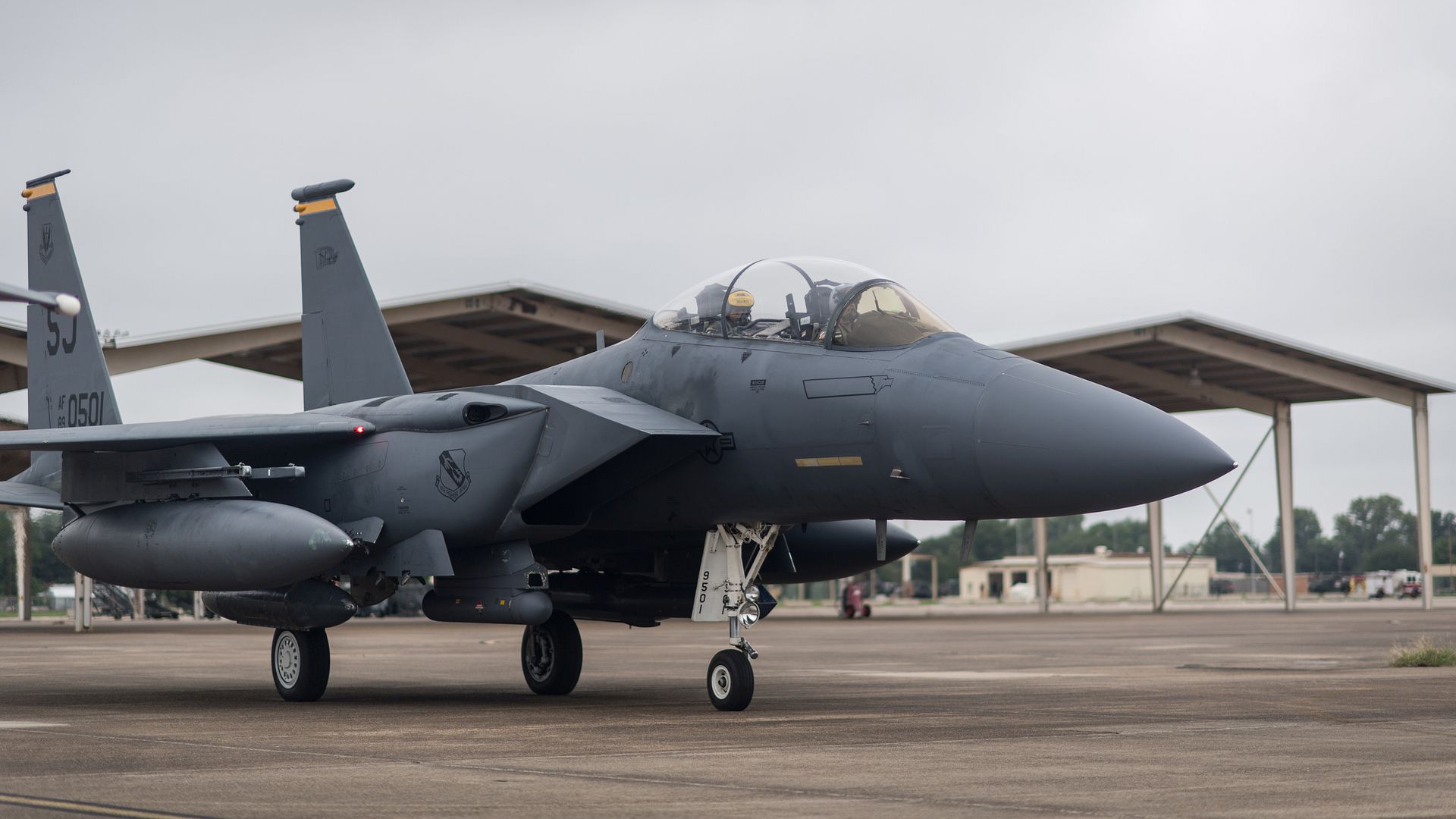
U.S. Air force Lieutenant Colonel Jerry Rutland (left) and Maj Eric Chapman fly into the early morning sunrise before flying into Florence, a hurricane about to hit the south east coast of the United States. They took off in a HC-130J Hercules from the Savanah Air National Guard Base, Savanah, GA Airport, September 12, 2018. The U.S. Air Force Reserve 53rd Weather Reconnaissance Squadron, or Hurricane Hunters, is conducting a storm tasking mission into Hurricane Florence, currently a category 4 storm. The tasking provides critical and timely weather data for the National Hurricane Center to assist in providing up-to-date and accurate information for storm forecasts. (U.S. Air Force Photo by Technical Sgt. Chris Hibben)
Two F-22 Raptors from the 94th Expeditionary Fighter Squadron, Al Dhafra Air Base, fly in formation after refueling from a 908th Expeditionary Air Refueling Squadron KC-10 Extender over Southwest Asia, Sept. 12, 2018. The F-22s completed combat operations and forward deployed to an undisclosed location in Southwest Asia, highlighting their combat agility. The U.S. is postured to defend U.S. forces in the region from any threat. (U.S. Air Force photo by Staff Sgt. Ross A. Whitley)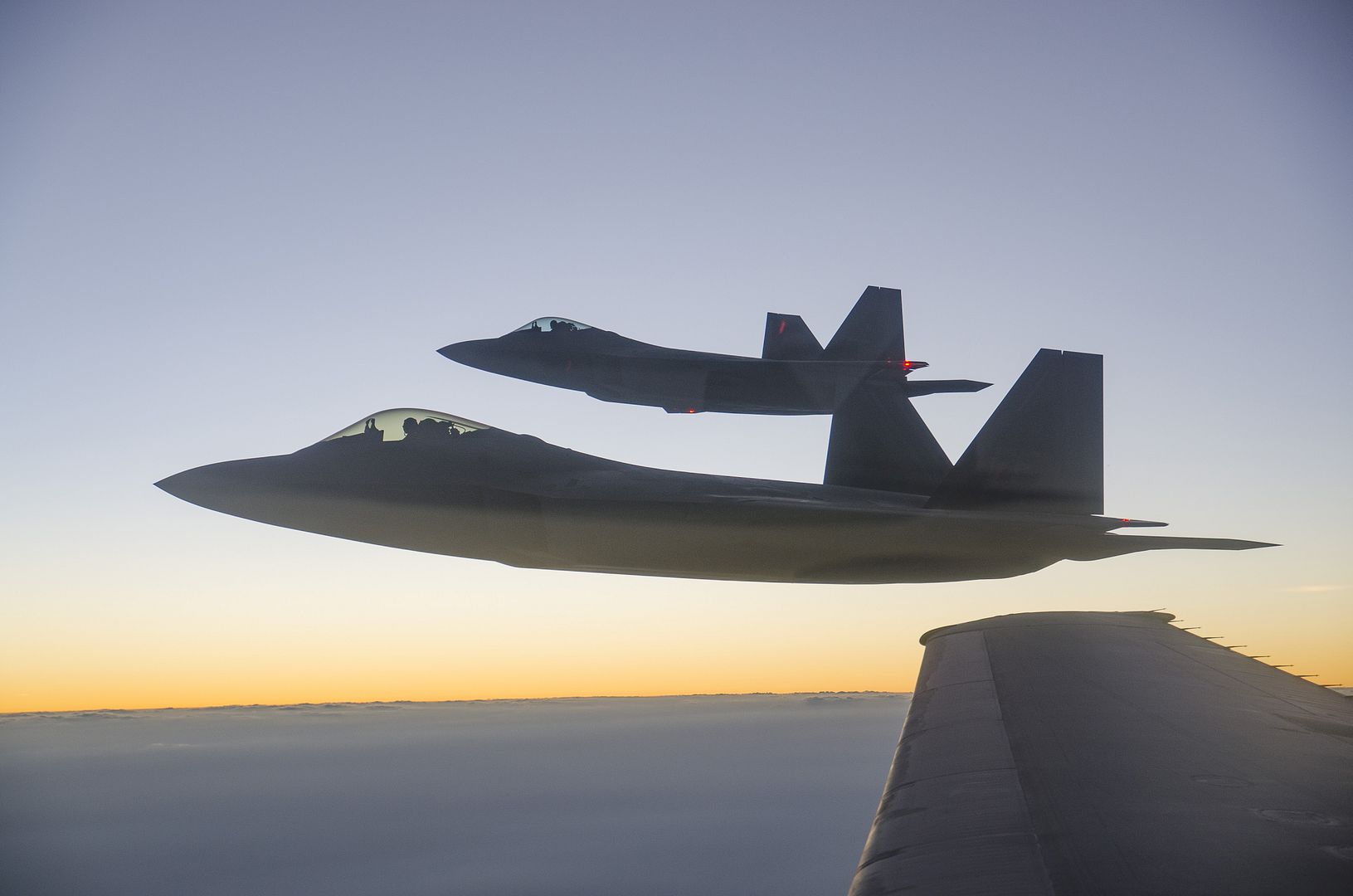
An F-22 Raptor from the 94th Expeditionary Fighter Squadron, Al Dhafra Air Base, flies behind a 908th Expeditionary Air Refueling Squadron KC-10 Extender over Southwest Asia, Sept. 12, 2018. The F-22 performs both air-to-air and air-to-ground missions and projects air dominance, rapidly and at great distances in order to defeat threats to the U.S. and our interests. The U.S. is postured to defend U.S. forces in the region from any threat. (U.S. Air Force photo by Staff Sgt. Ross A. Whitley)
LAGOS, Nigeria, Sept. 13, 2018 /PRNewswire/ -- Boeing [NYSE: BA] and Air Peace of Nigeria today announced a new order for ten 737 MAX 8 airplanes during a signing ceremony in Lagos.
Air Peace already operates Boeing 737s between major cities in Central and West Africa. The airline, which recently added Boeing 777s to its fleet, is looking to soon launch its international flight operations.
"We are excited to add the 737 MAX to our fleet as we expand our network to offer more destinations and serve more passengers," said Allen Onyema, Chairman and CEO, Air Peace Limited. "The fuel efficiency and superior operating economics of the 737 MAX will ensure that the aircraft will play a major role in growing our business in the years to come."
The 737 MAX 8 is part of a family of airplanes that offer 130 to 230 seats and the ability to fly up to 3,850 nautical miles (7,130 kilometers). With improvements such as the CFM International LEAP-1B engine and Advanced Technology winglets, the 737 MAX will help Air Peace save more than 20 percent on fuel costs compared to its current single-aisle airplanes.
The MAX 8, in particular, offers airlines 13 more seats than its closest competitor, seven percent lower costs for each of those seats, and 300 miles more range. The operating advantages, along with the popular Boeing Sky Interior, explain why carriers have been choosing to fly the MAX in Africa.
"Africa is a growing market for commercial airplanes and we are proud that airlines like Air Peace are selecting Boeing aircraft to be part of that growth," said Ihssane Mounir, senior vice president of Commercial Sales & Marketing for The Boeing Company. "This order reflects the strong demand that we are seeing for the 737 MAX as airlines choose the airplane's superior performance and reliability."
The 737 MAX is the fastest-selling airplane in Boeing history, accumulating more than 4,700 orders from 102 customers worldwide.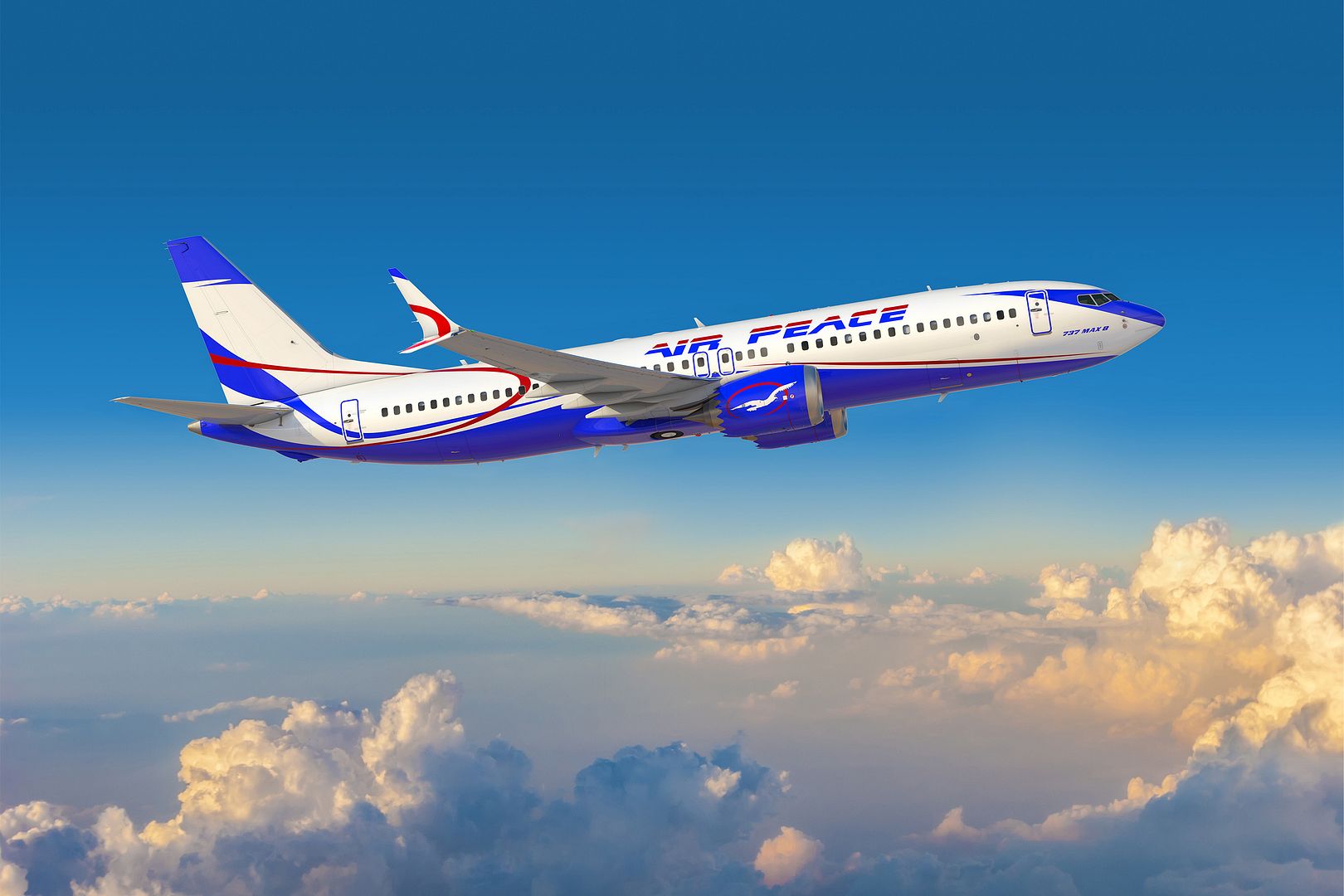
-
 Main AdminAn aircrew from Coast Guard Air Station Elizabeth City, North Carolina, taking off for a Search and rescue case in North Carolina, Sept. 14, 2018. The aircrew was responding to a search and rescue call during Hurricane Florence.
Main AdminAn aircrew from Coast Guard Air Station Elizabeth City, North Carolina, taking off for a Search and rescue case in North Carolina, Sept. 14, 2018. The aircrew was responding to a search and rescue call during Hurricane Florence.
(U.S. Coast Guard photo by Petty Officer 3rd Class Ronald Hodges)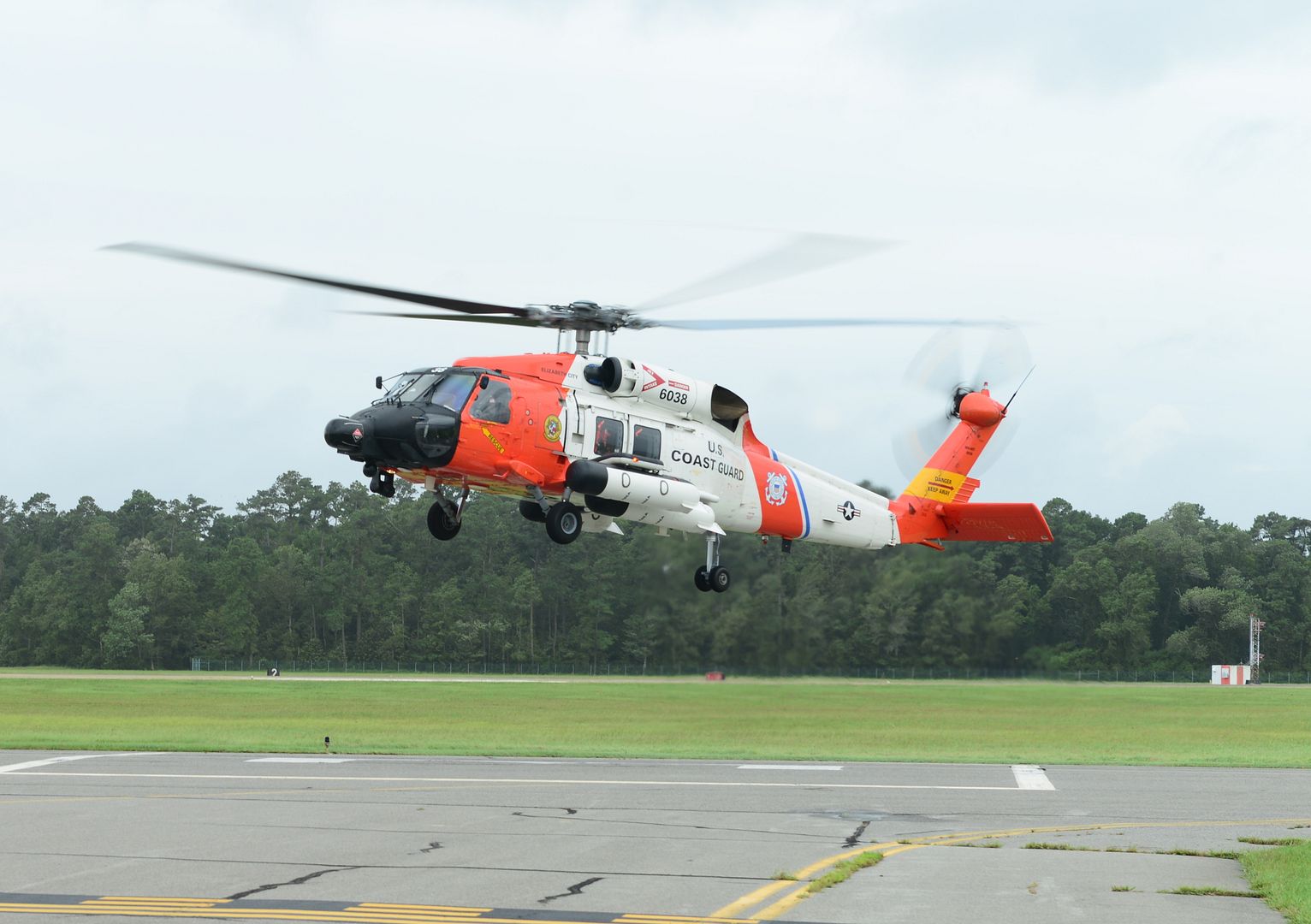
A U.S. Air Force F-15C Eagle from the 67th Fighter Squadron lands on Andersen Air Force Base, Guam, in preparation for Valient Shield 18, Sept. 14, 2018. Valiant Shield is a biennial, U.S. only, field training exercise with a focus on integration of joint training among U.S. forces. (U.S. Air Force photo by Senior Airmen Zachary Bumpus)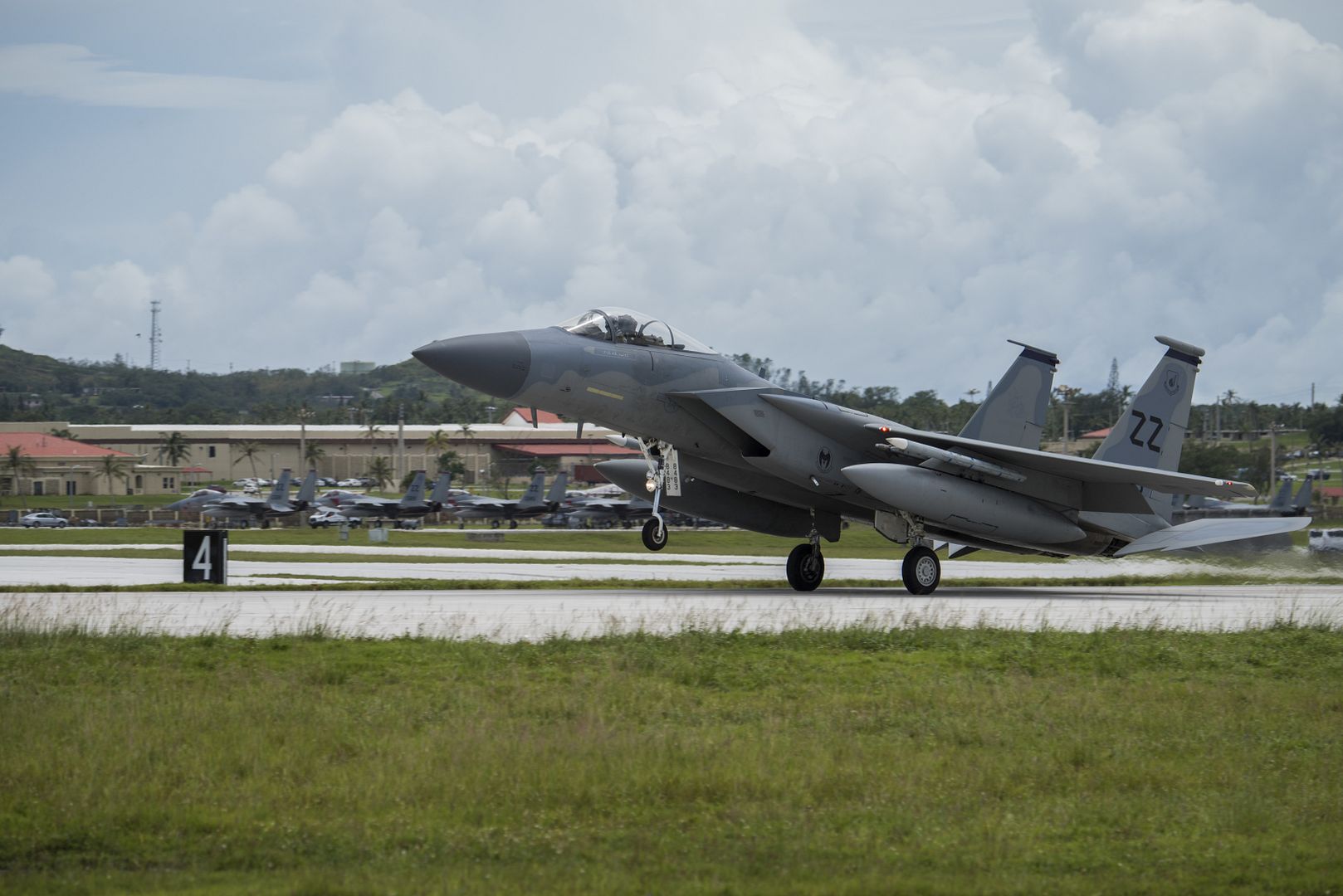
A U.S. Air Force B-52 Stratofortress approaches a KC-135 Stratotanker from the 100th Air Refueling Wing, RAF Mildenhall, England, before receiving fuel over Romania Sept. 13, 2018. Training with NATO allies such Romania improves interoperability and demonstrates the United States? commitment to regional security. (U.S. Air Force photo by Tech. Sgt. Emerson Nu?ez)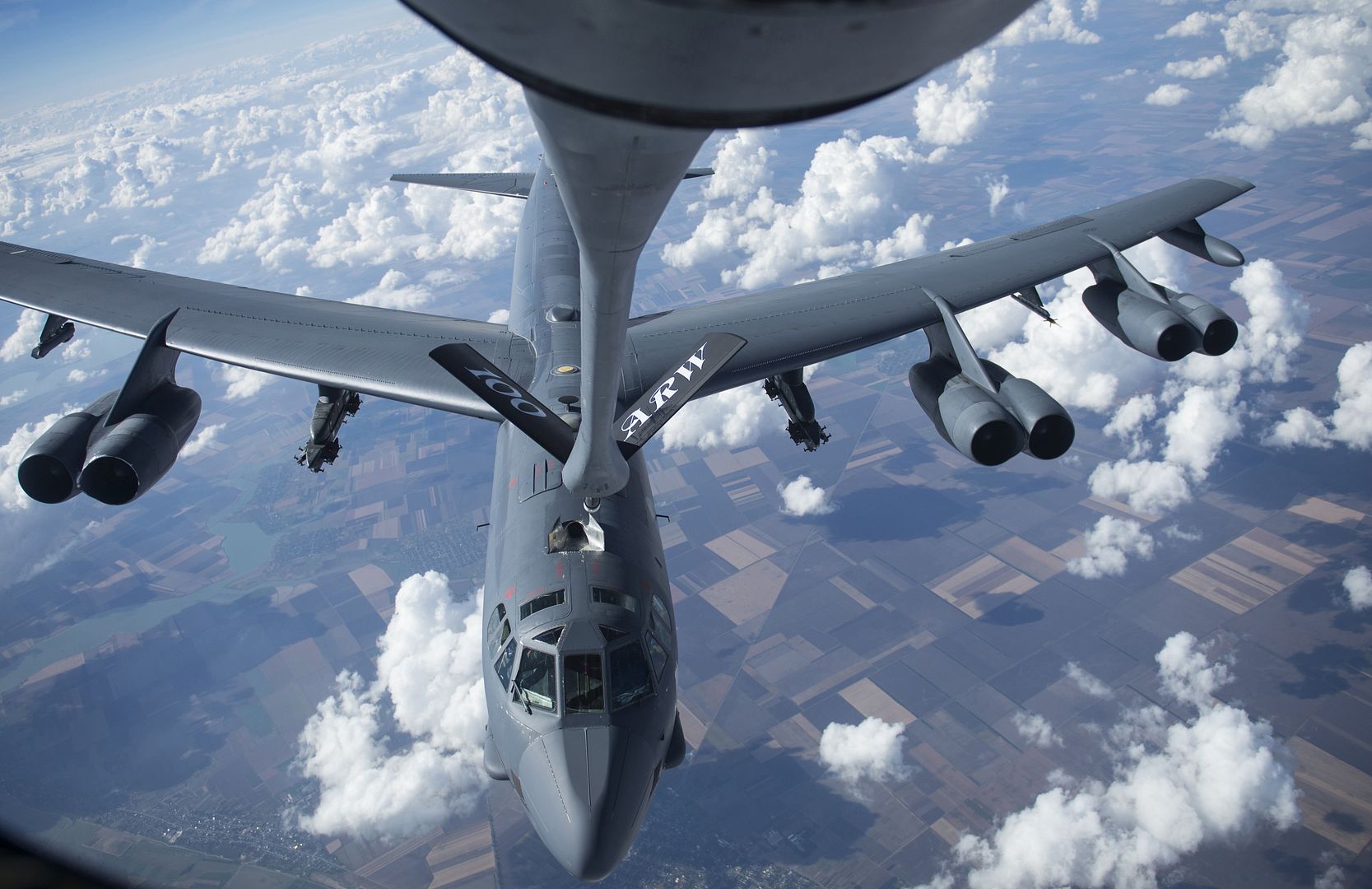
A U.S. Air Force B-52 Stratofortress recives fuel from a KC-135 Stratotanker from the 100th Air Refueling Wing, RAF Mildenhall, England, before receiving fuel over Romania Sept. 13, 2018. Training with NATO allies such Romania improves interoperability and demonstrates the United States? commitment to regional security. (U.S. Air Force photo by Tech. Sgt. Emerson Nu?ez)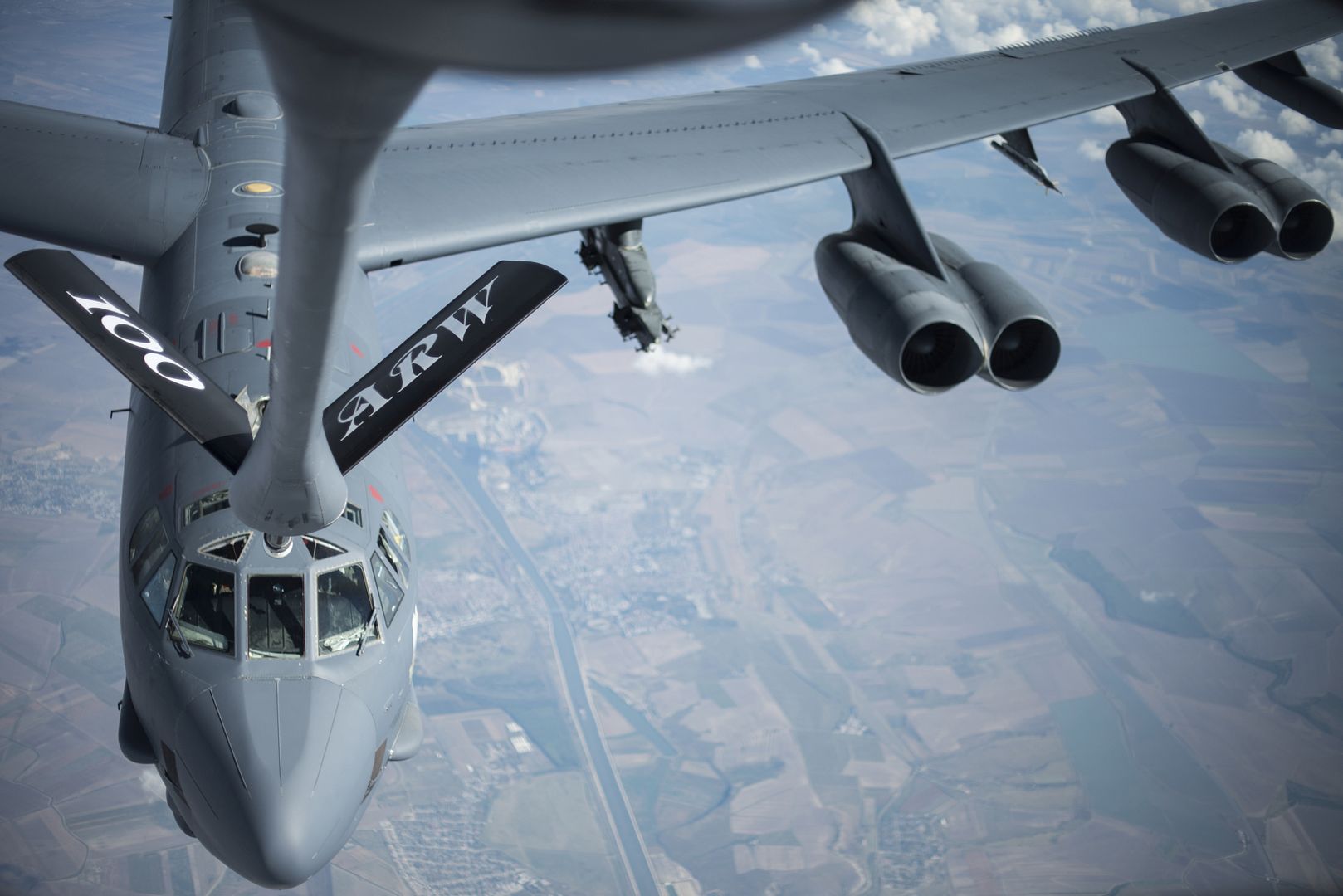
A Romanian Air Force F-16 waits to be fueled from a KC-135 Stratotanker from the 100th Air Refueling Wing, RAF Mildenhall, England, over Romania Sept. 13, 2018. Training with NATO allies such as Romania improves interoperability and demonstrates the United States? commitment to regional security. (U.S. Air Force photo by Tech. Sgt. Emerson Nu?ez)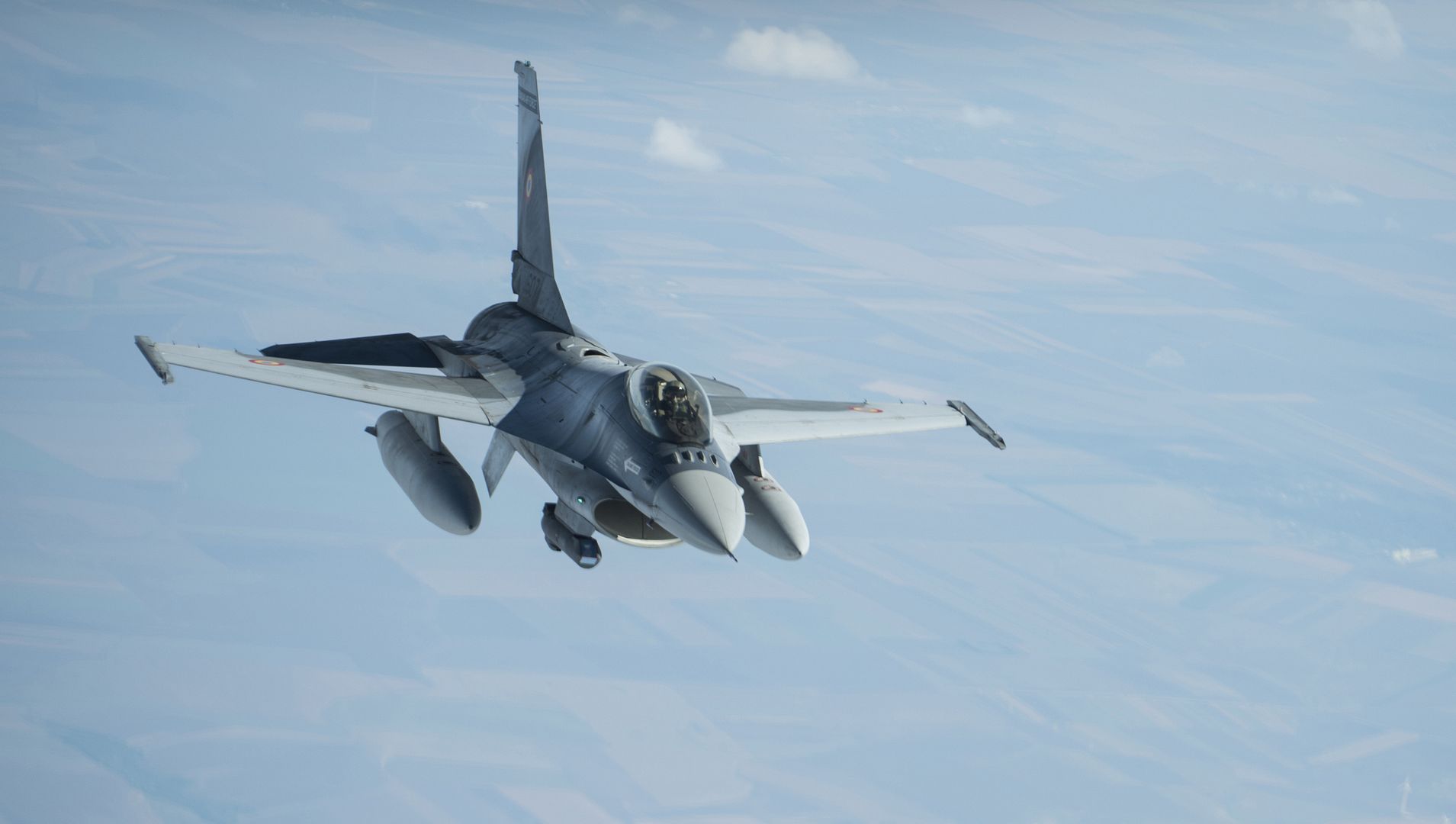
A Romanian Air Force F-16 prepares to receive fuel from a KC-135 Stratotanker from the 100th Air Refueling Wing, RAF Mildenhall, England, over Romania Sept. 13, 2018. Training with NATO allies such Romania improves interoperability and demonstrates the United States? commitment to regional security. (U.S. Air Force photo by Tech. Sgt. Emerson Nu?ez)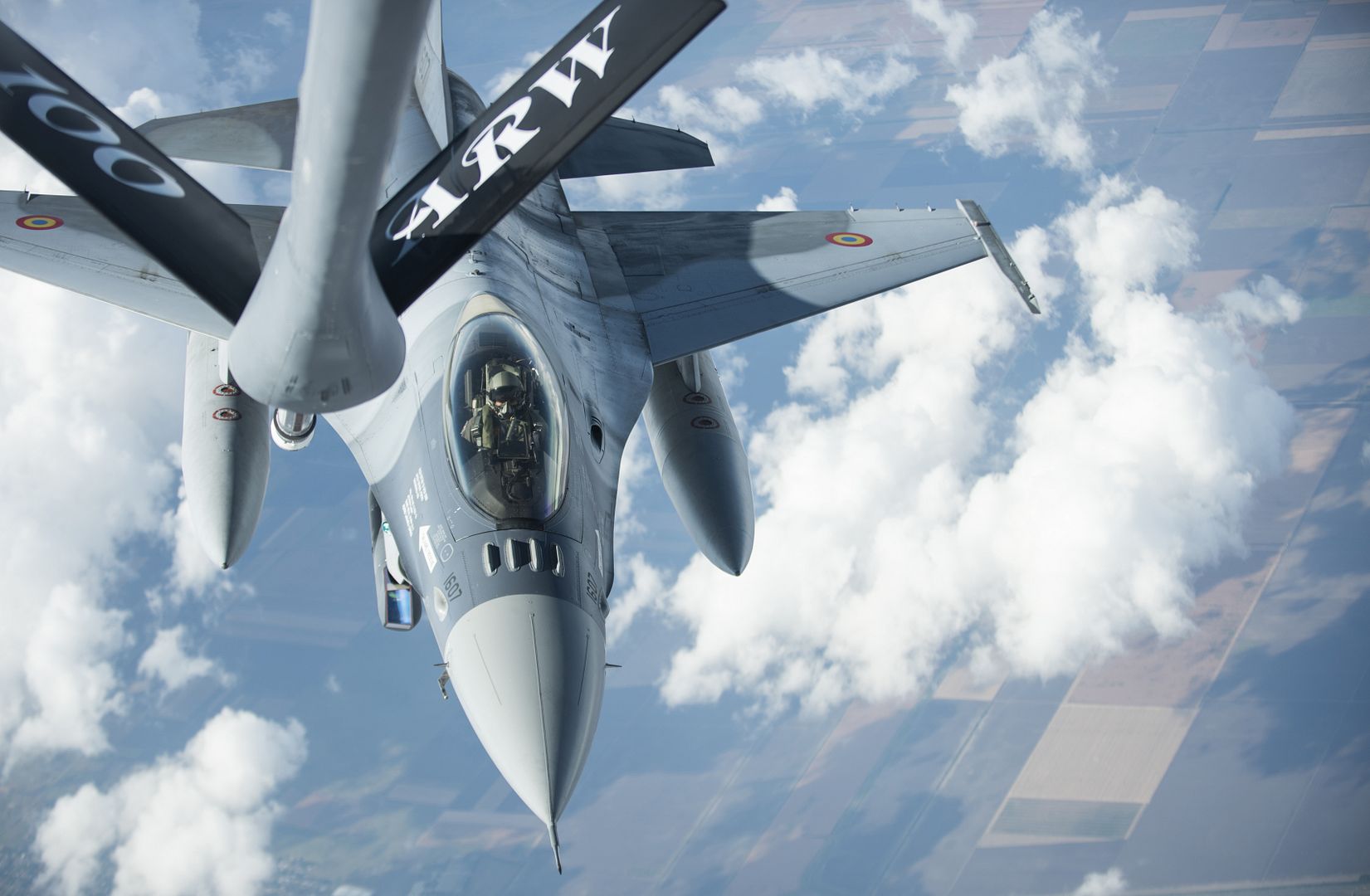
The sun is setting as the crew of the Hurricane Hunters catch a slight break in the storm. The Hurricane Hunters took off from Savanah Air National Guard Base, Savanah, GA Airport, September 13, 2018. The U.S. Air Force Reserve 53rd Weather Reconnaissance Squadron, or Hurricane Hunters, is conducting a storm tasking mission into Hurricane Florence using a WC-130J Hercules, currently a category 2 storm. The flight tasking provides critical and timely weather data for the National Hurricane Center to assist in providing up-to-date and accurate information for storm forecasts. (U.S. Air Force Photo by Technical Sgt. Chris Hibben)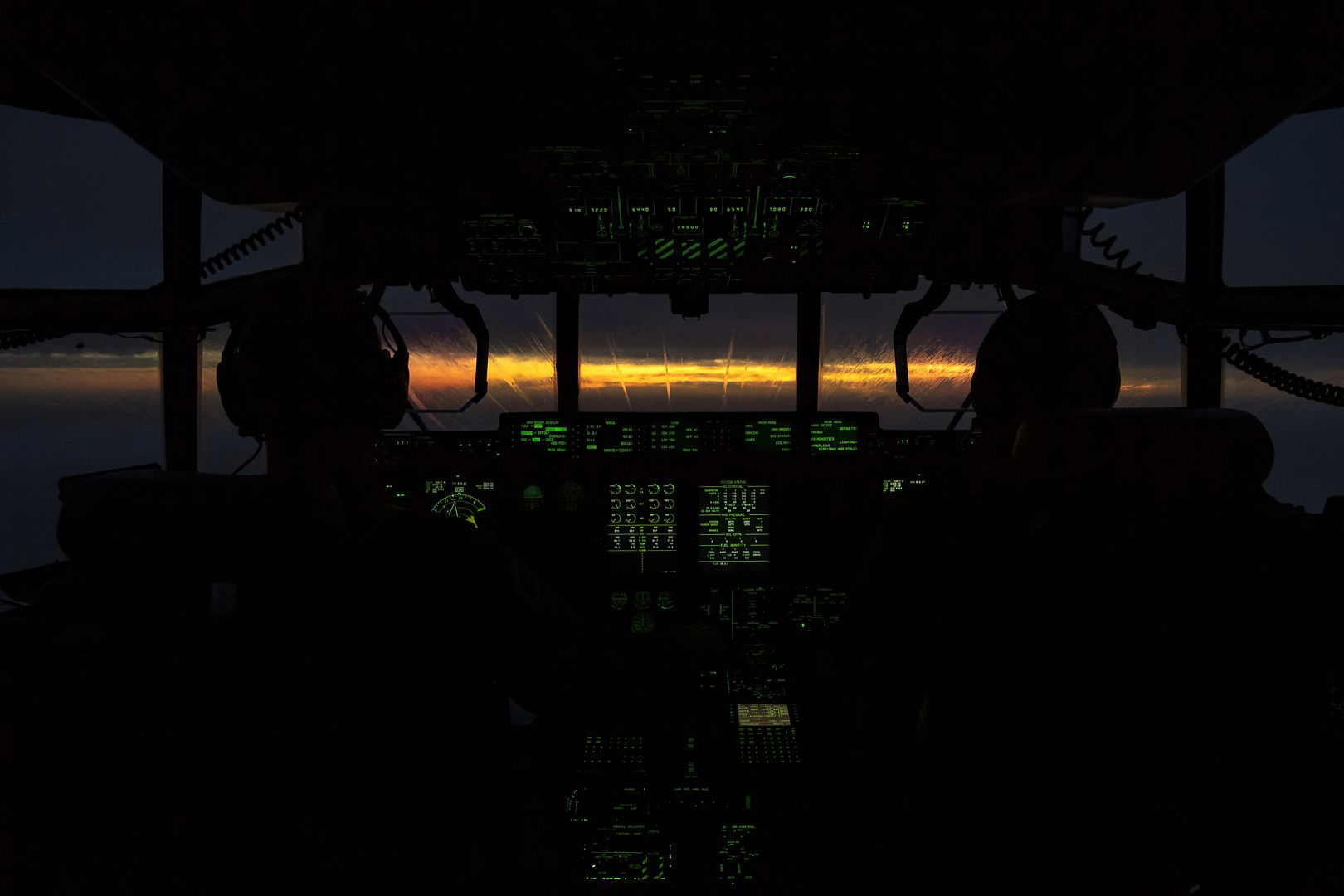
KNOXVILLE, TN, UNITED STATES
09.14.2018.
AV-8B Harrier jets from Marine Corps Air Station Cherry Point line the tarmac at McGhee Tyson Air National Guard Base and airport. The aircraft were evacuated from Marine Corps Air Station Cherry Point, North Carolina prior to the arrival of Hurricane Florence. (U.S. Air National Guard photo by Senior Master Sgt. Kendra M. Owenby, 134th ARW Public Affairs)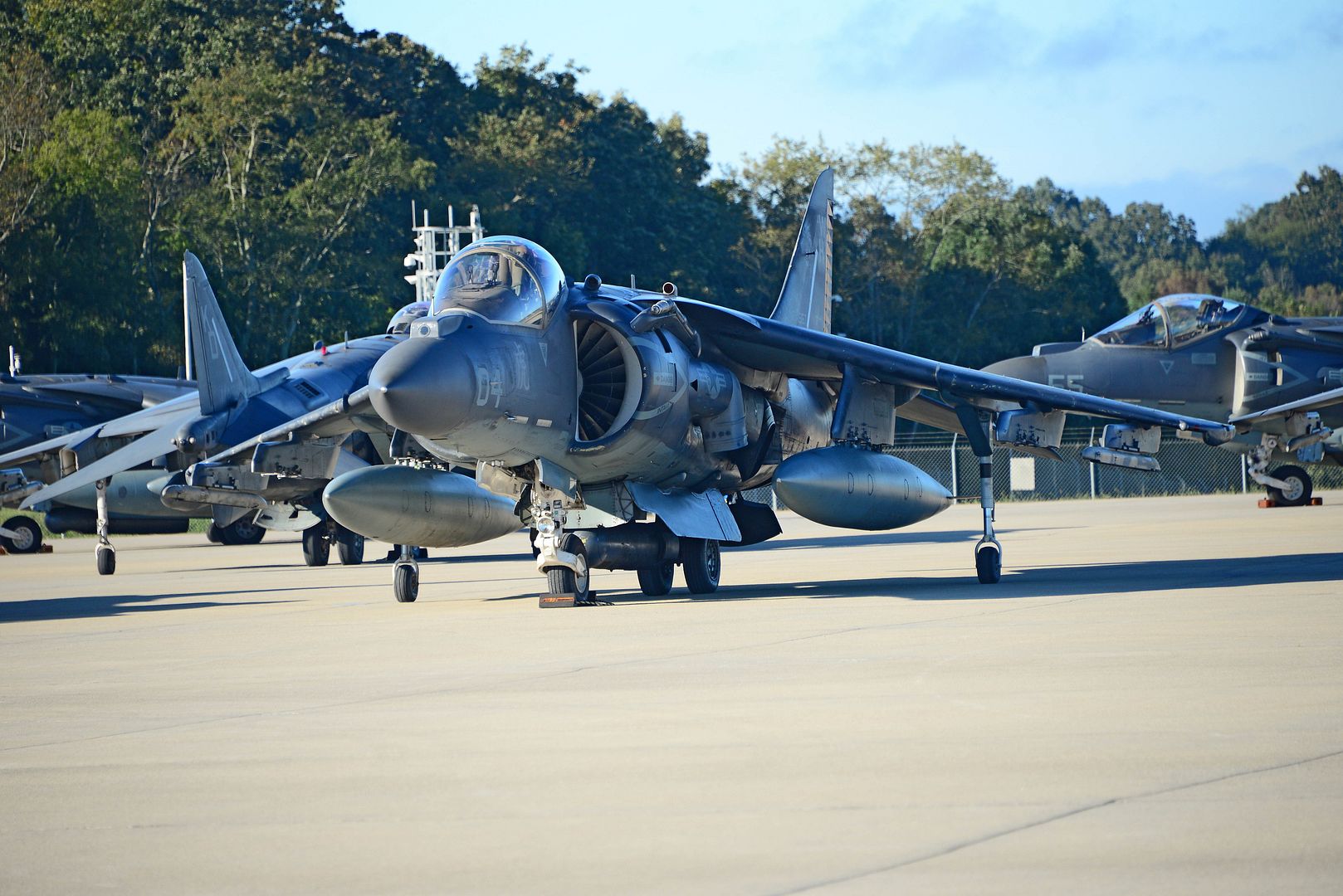
Maintainers from the 162nd Wing, Arizona Air National Guard, launch F-16C Fighting Falcons at Namest Air Base, Czech Republic. The 162nd Wing flew over 60 sorties during Ample Strike 2018. The Arizona Air Guardsmen help to provide critical support throughout the USAFE-AFAFRICA area of operations by deploying to and interacting with a variety of nations. (U.S. Air National Guard photo by Staff Sgt. George Keck)
Members of the 162nd Wing, Arizona Air National Guard, walk the flightline looking for debris that could cause damage if ingested by the engine of an F-16 at Namest Air Base, Czech Republic. FOD walks are accomplished each morning before the first sortie. The Arizona Air Guardsmen help to provide critical support throughout the USAFE-AFAFRICA area of operations by deploying to and interacting with a variety of nations. (U.S. Air National Guard photo by Staff Sgt. George Keck)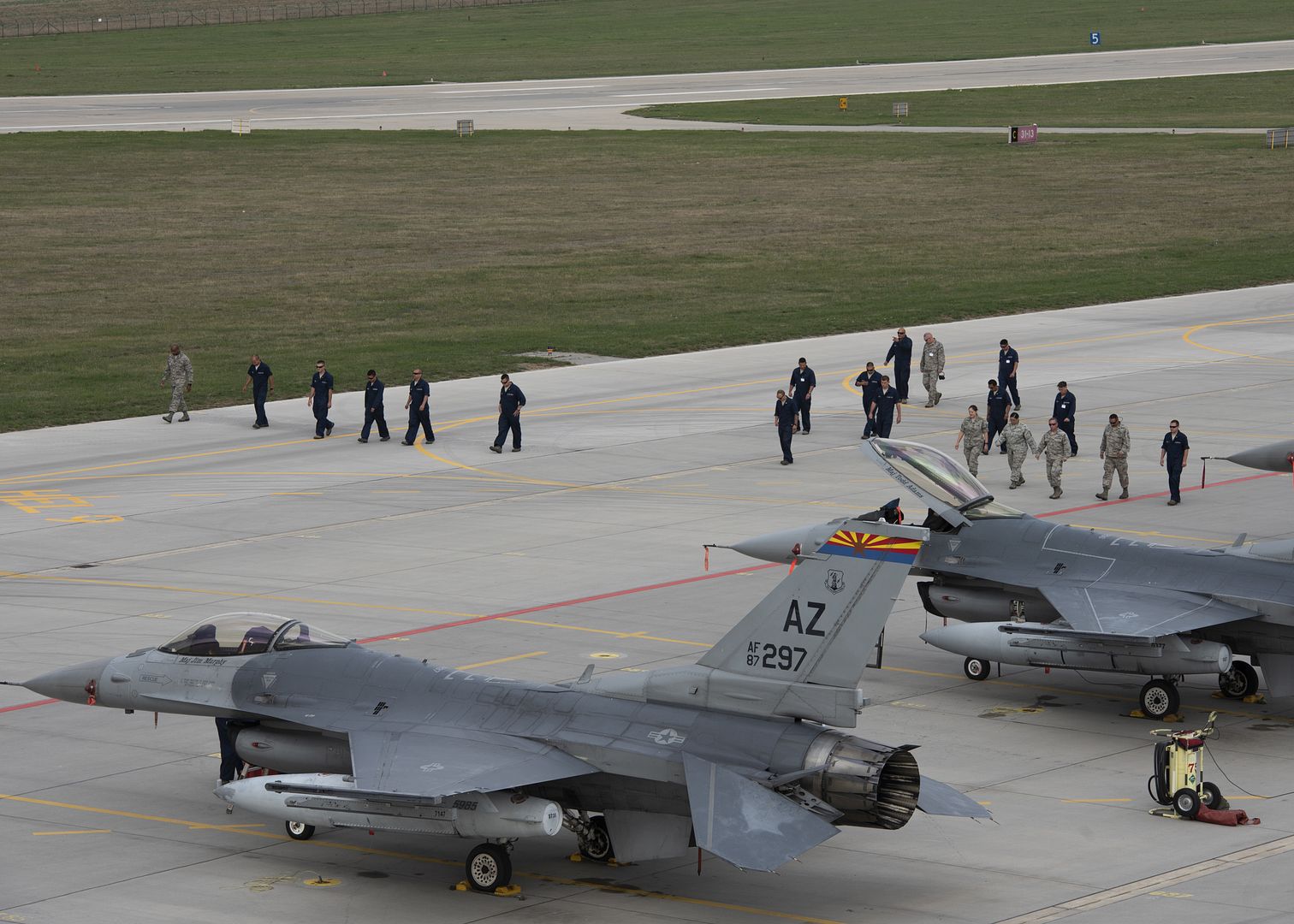
U.S. Air Force F-16 Fighting Falcons from the 20th Fighter Wing, Shaw Air Force Base, S.C., taxi on the flightline at Tyndall Air Force Base, Fla., Sept. 12, 2018. Shaw sent aircraft from both the 77th and the 79th Fighter Squadrons to Tyndall to escape the path of Hurricane Florence. (U.S. Air Force photo by Senior Airman Isaiah J. Soliz)
MOSS POINT, Miss. ? Sept. 14, 2018 ? Northrop Grumman Corporation (NYSE: NOC) recently began flight tests for MQ-8C Fire Scout aircraft produced in Moss Point at the Trent Lott International Airport, a major milestone for the company and the region?s aerospace economy.
Northrop Grumman?s Moss Point facility is key to producing and testing the MQ-8C Fire Scout, the U.S. Navy?s newest autonomous helicopter that is bringing increased speed, endurance and payload capacity to distributed maritime operations. The U.S. Navy recently completed initial operational test and evaluation aboard the USS Coronado (LCS 4) for the MQ-8C Fire Scout, which has over 1,500 program flight hours. The aircraft is a modified Bell 407 helicopter that is produced in Moss Point and supports quality manufacturing jobs in Mississippi.
?Building on Northrop Grumman?s recent announcement of new production capabilities in Moss Point and a 40 percent increase in employment at the site, the ability to now conduct MQ-8C Fire Scout flight tests where the production occurs will bring new efficiencies and effectiveness to our local operations and improve our ability to serve the U.S. Navy,? said Melissa Packwood, program director, Fire Scout, Northrop Grumman.
In June, elected officials joined local employees to cut the ribbon on the new machine shop section that delivers important capabilities at Northrop Grumman?s Moss Point manufacturing center. For more than a decade, Gulf Coast employees have manufactured rotary and fixed wing autonomous systems in Moss Point that support the U.S. and its global allies. Recent facility upgrades have allowed for new work on manned aircraft to come to the site, diversifying the portfolio of work and bringing new jobs to the region.
In April 2004, Northrop Grumman broke ground in Moss Point with site construction beginning in 2005. In April 2006, Northrop Grumman contributed to aerospace industry growth in southern Mississippi when the ribbon was cut on the 101,000 square-foot facility. The company celebrated its 10 year anniversary at the site in 2016 and recently extended its lease adjacent to Trent Lott International Airport through 2026.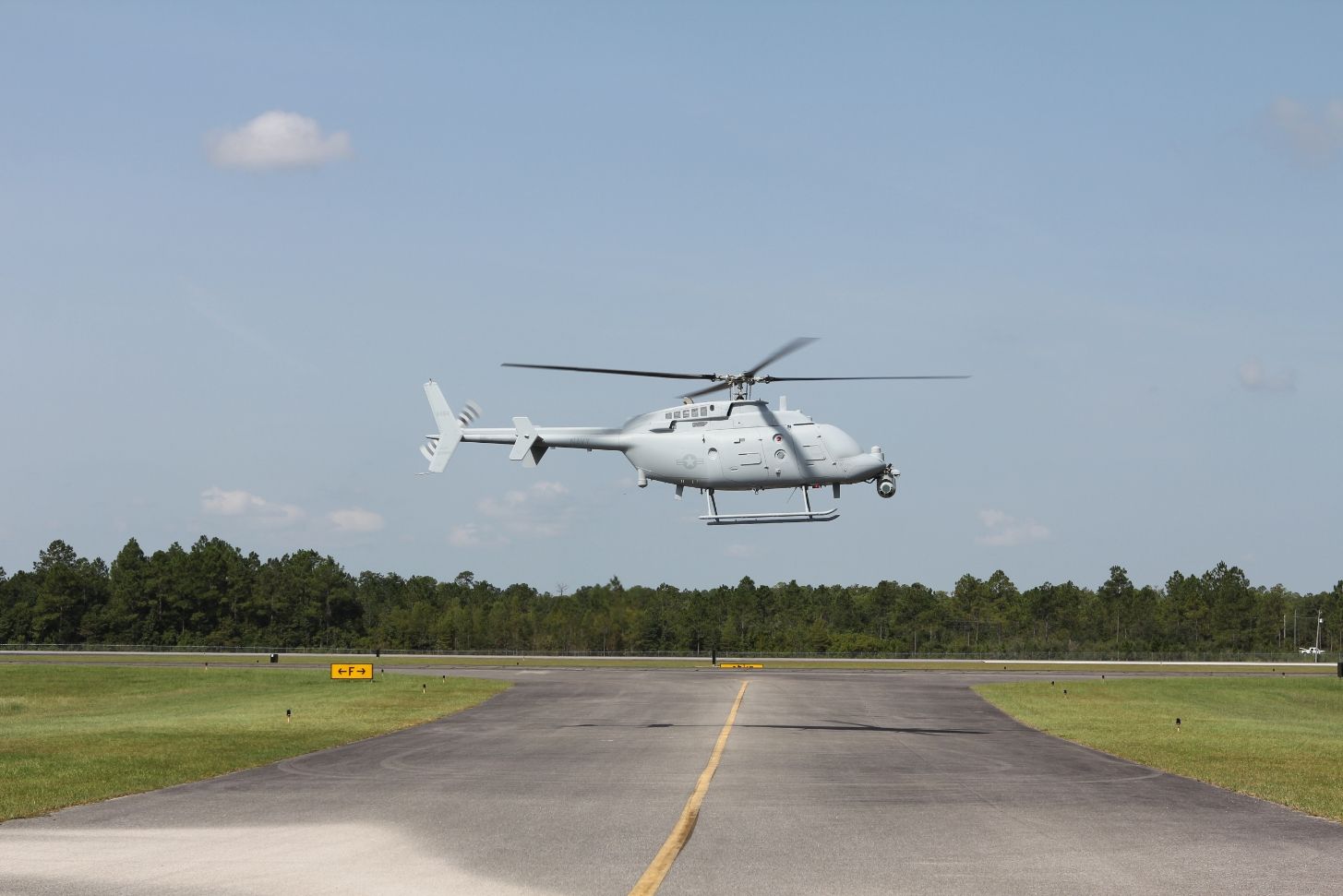
Delta Air Lines` first Airbus A220-100 was introduced this week after rolling out of the painting hangar at the A220 final assembly line in Mirabel, Qu?bec. Delta will be the first U.S. airline to take delivery of the A220, featuring a state-of-the art interior and delivering best-in-class fuel performance.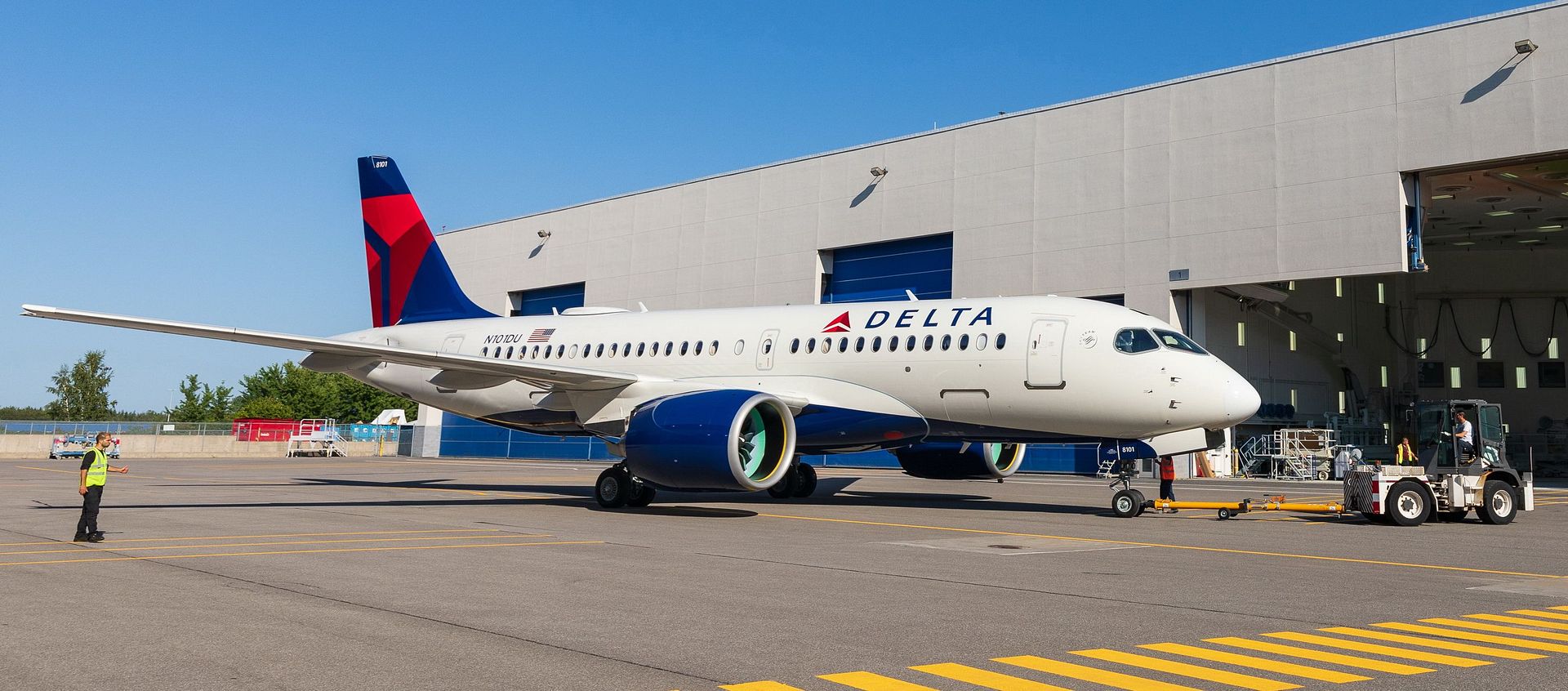
Now that the aircraft is decked out in Delta?s livery, it will move to pre flight activities in the A220 flight line hangar in Mirabel before taking off for its first flight later this fall.
Delta?s first A220 is scheduled to begin service in early 2019.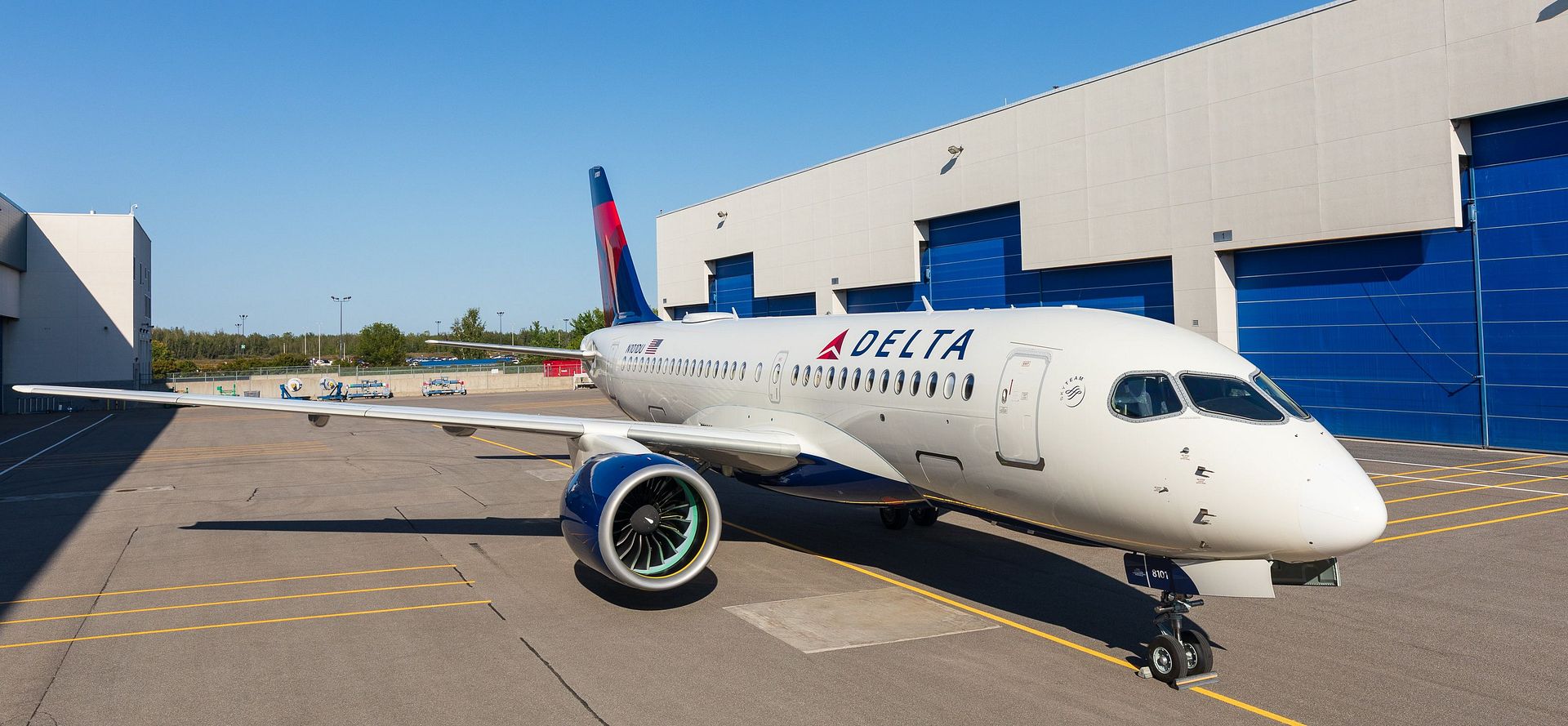
-
 Main Admin09.14.2018
Main Admin09.14.2018
A U.S. Customs and Border Protection, Air and Marine Operations (AMO) Black Hawk crew departs Manassas, VA to pre-position further south, closer to storm affected areas. AMO air and marine crews are responding to support emergency responders during Hurricane Florence relief efforts helping those in impacted areas."
Photo by Michael Pope.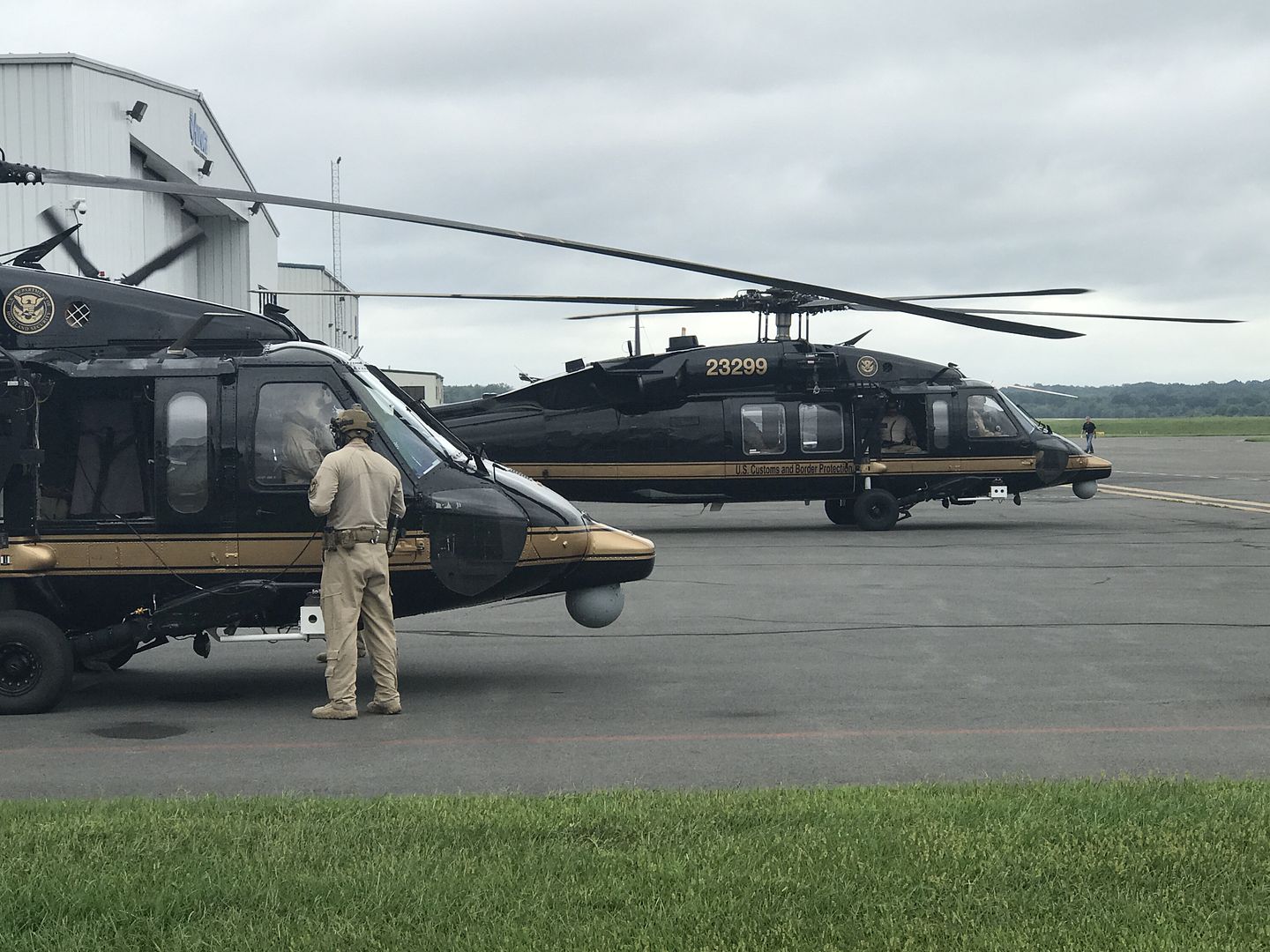
A KC-130J Hercules Aerial Refueling Tanker with Marine Aerial Refueler Transport Squadron (VMGR) 152 is staged on the flightline in preparation for Exercise Valiant Shield 18 at Andersen Air Force Base, Guam, Sep. 15, 2018. Valiant Shield is a biennial, U.S. only, field training exercise (FTX) with a focus on integration of joint training among U.S. forces in relation to current operational plans. This training enables real-world proficiency in sustaining joint forces through detecting, locating, tracking and engaging units at sea, in the air, on land, and in cyberspace in response to a range of mission areas. (U.S. Marine Corps photo by Lance Cpl. Seth Rosenberg)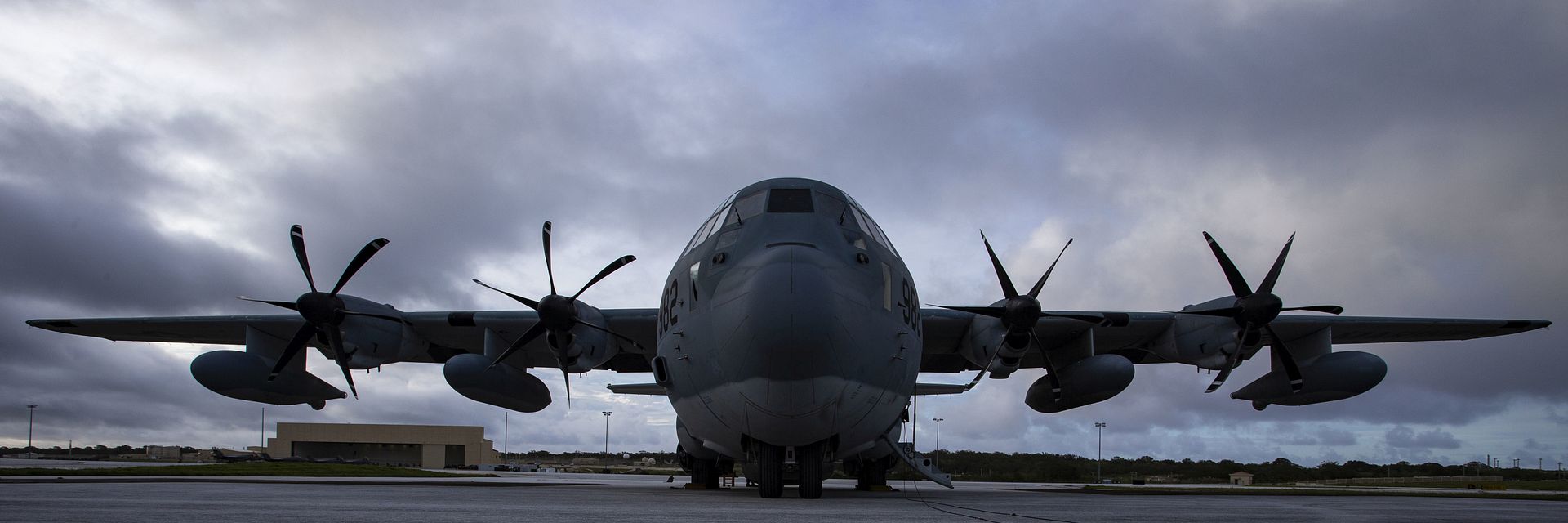
An E-3G Airborne Warning and Control System aircraft of the 552nd Air Control Wing, 960th Airborne Air Control Squadron, is prepared during the early morning hours of Sept. 15, 2018 for a response to Hurricane Florence mission at Tinker Air Force Base, Oklahoma. The AWACS will provide air control and de-confliction service along the East Coast of the United States as they monitor and control airspace as local, state and federal assets move in to the area to conduct rescue and recovery operations. (U.S. Air Force photo/Greg L. Davis)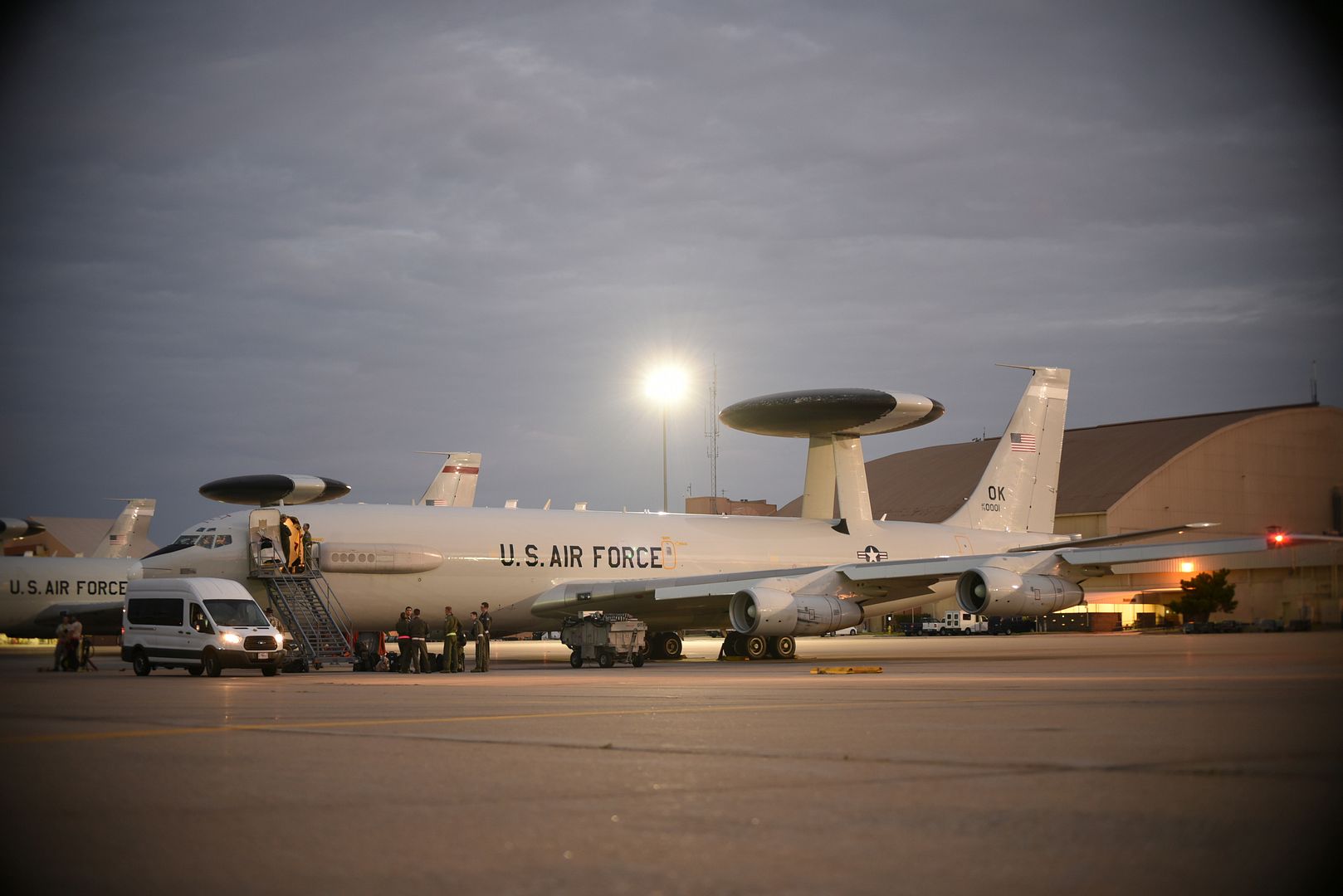
A U.S. Air Force B-1B Lancer, assigned to the 337th Test and Evaluation Squadron at Dyess Air Force Base, Texas, taxis past a B-52H Superfortress, assigned to the 96th Expeditionary Bomber Squadron, Sept. 15, 2018, on Andersen Air Force Base, Guam. The Lancer is set to participate in exercise Valiant Shield 2018. Valiant Shield is a biennial, U.S. only, field training exercise with a focus on integration of joint training among U.S. forces. (U.S. Air Force photo by Senior Airmen Gerald R. Willis)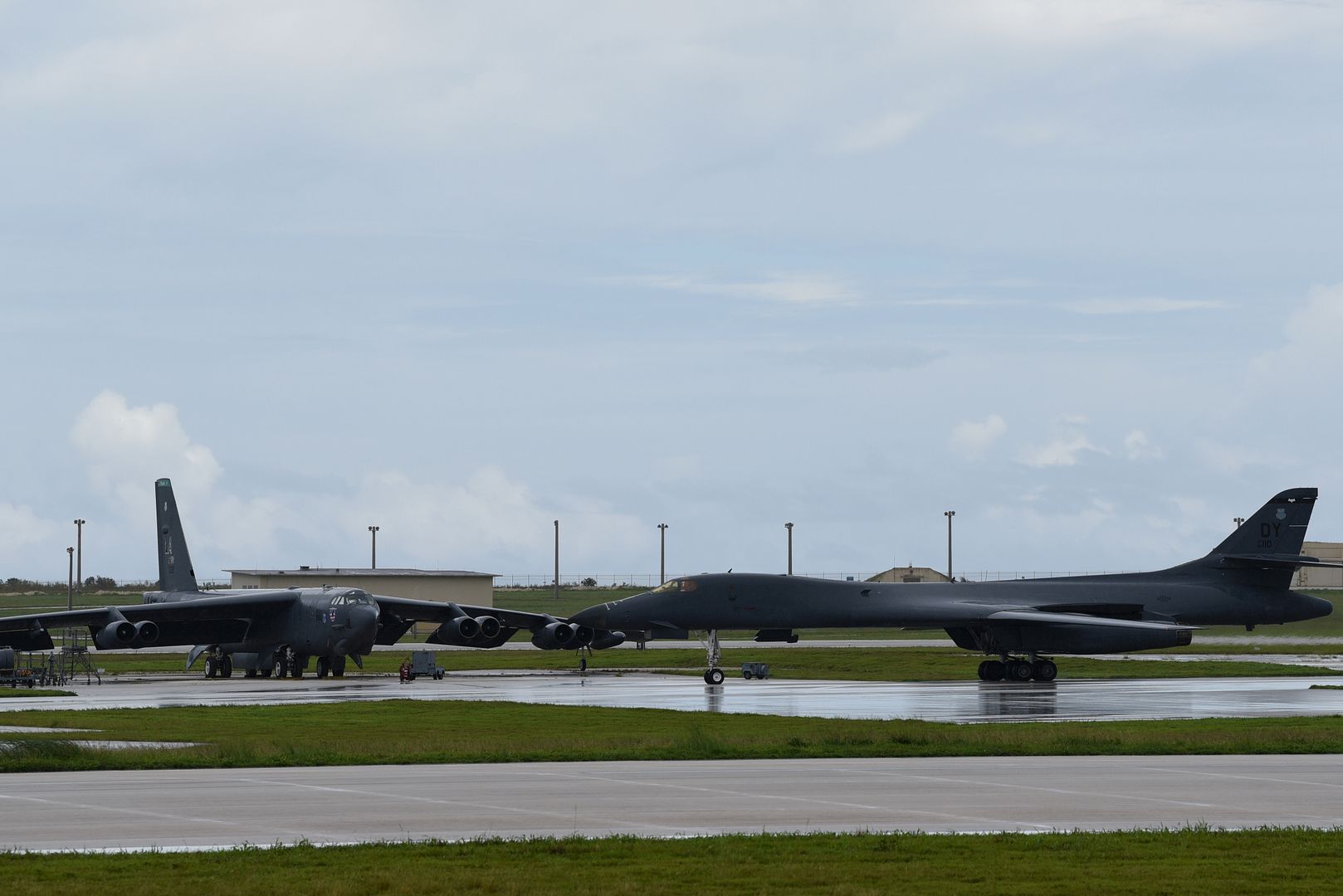
U.S. Navy F/A-18F/E Super Hornets arrive Sept. 15, 2018, at Andersen Air Force Base, Guam. The aircraft are set to participate in exercise Valiant Shield 2018. Valiant Shield is a biennial, U.S. only, field training exercise with a focus on integration of joint training among U.S. forces. (U.S. Air Force photo by Senior Airmen Gerald R. Willis)
A HC-130J Combat King II assigned to the 334th Air Expeditionary Group prepares to return to Moody Air Force Base, Ga., after dropping off personnel and equipment pre-positioned to provide relief in the wake of tropical storm Florence, Sept. 15, 2018, at Joint Base Charleston, S.C. The 334th AEG is an expeditionary search and rescue unit comprised of 23d Wing and 920th Rescue Wing personnel and assets ready to perform surface, fixed wing and rotary SAR operations when needed. (U.S. Air Force photo by Staff Sgt. Ryan Callaghan)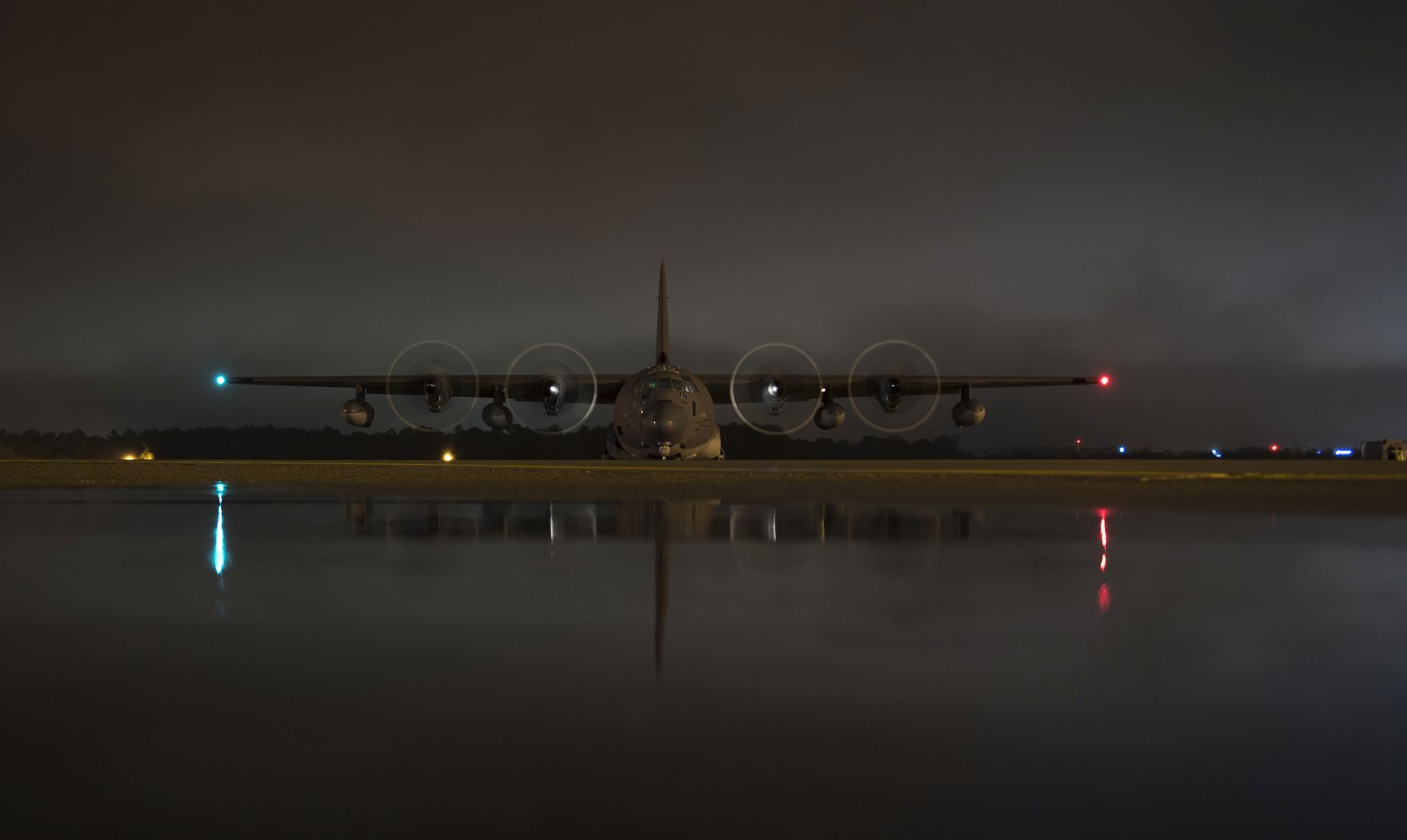
A U.S. Marine F-35B Lightning II with Marine Fighter Attack Squadron 121 sits on the flightline before a live-fire training exercise during Valiant Shield 2018 Sept. 16, 2018, at Andersen Air Force Base, Guam. Valiant Shield is a biennial, U.S. only, field training exercise with a focus on integration of joint training among U.S. forces. (U.S. Air Force photo's by Senior Airmen Gerald R. Willis)
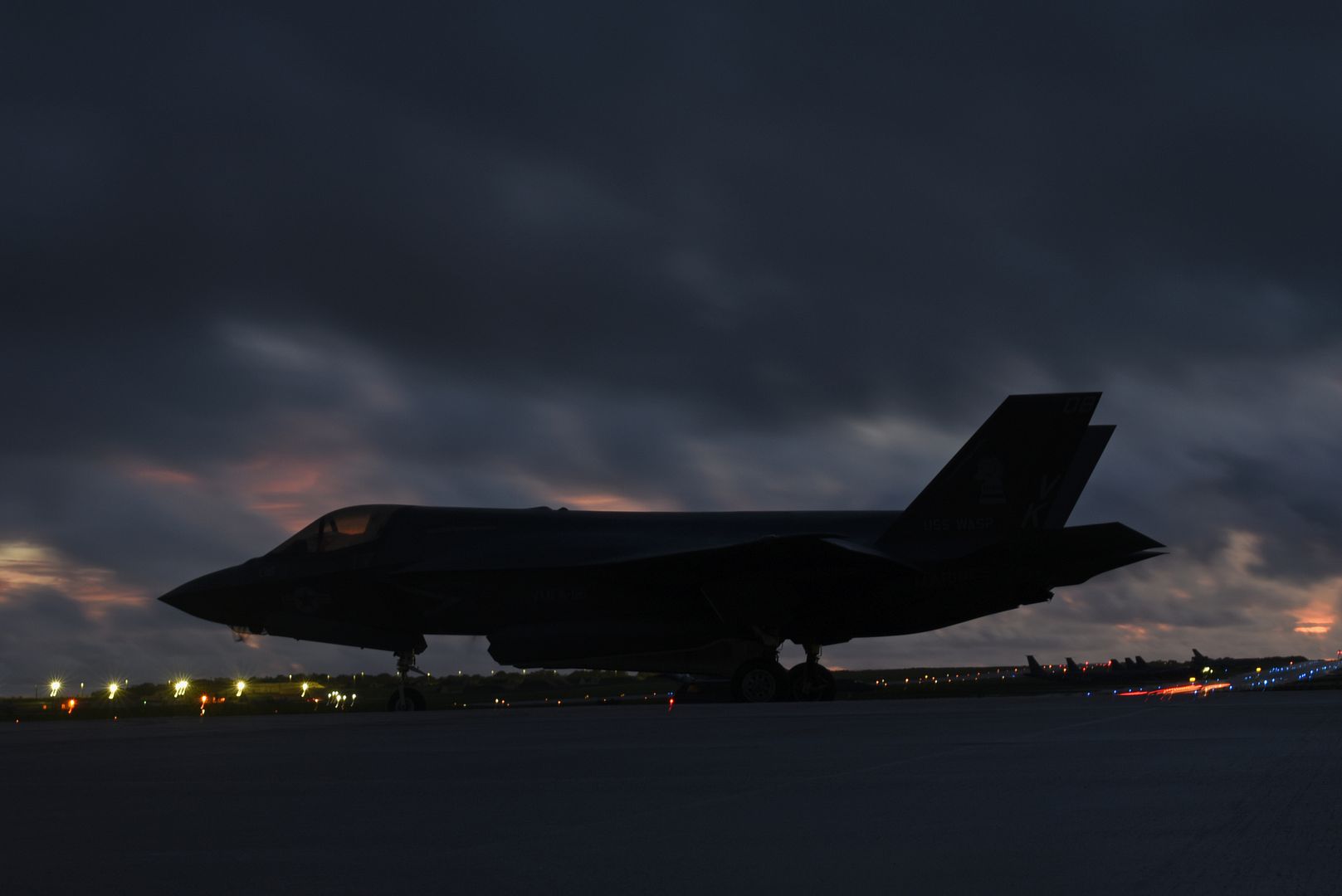
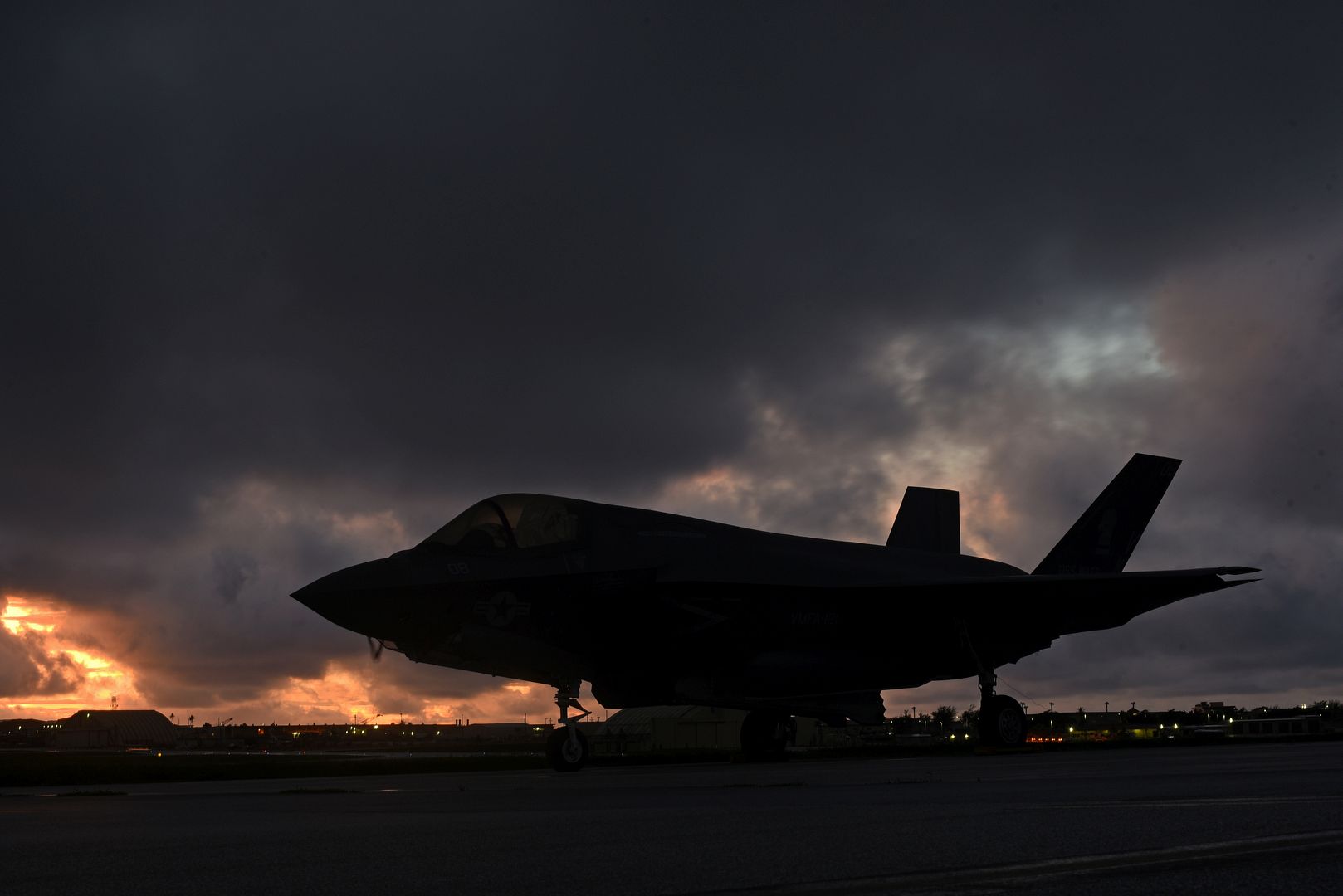
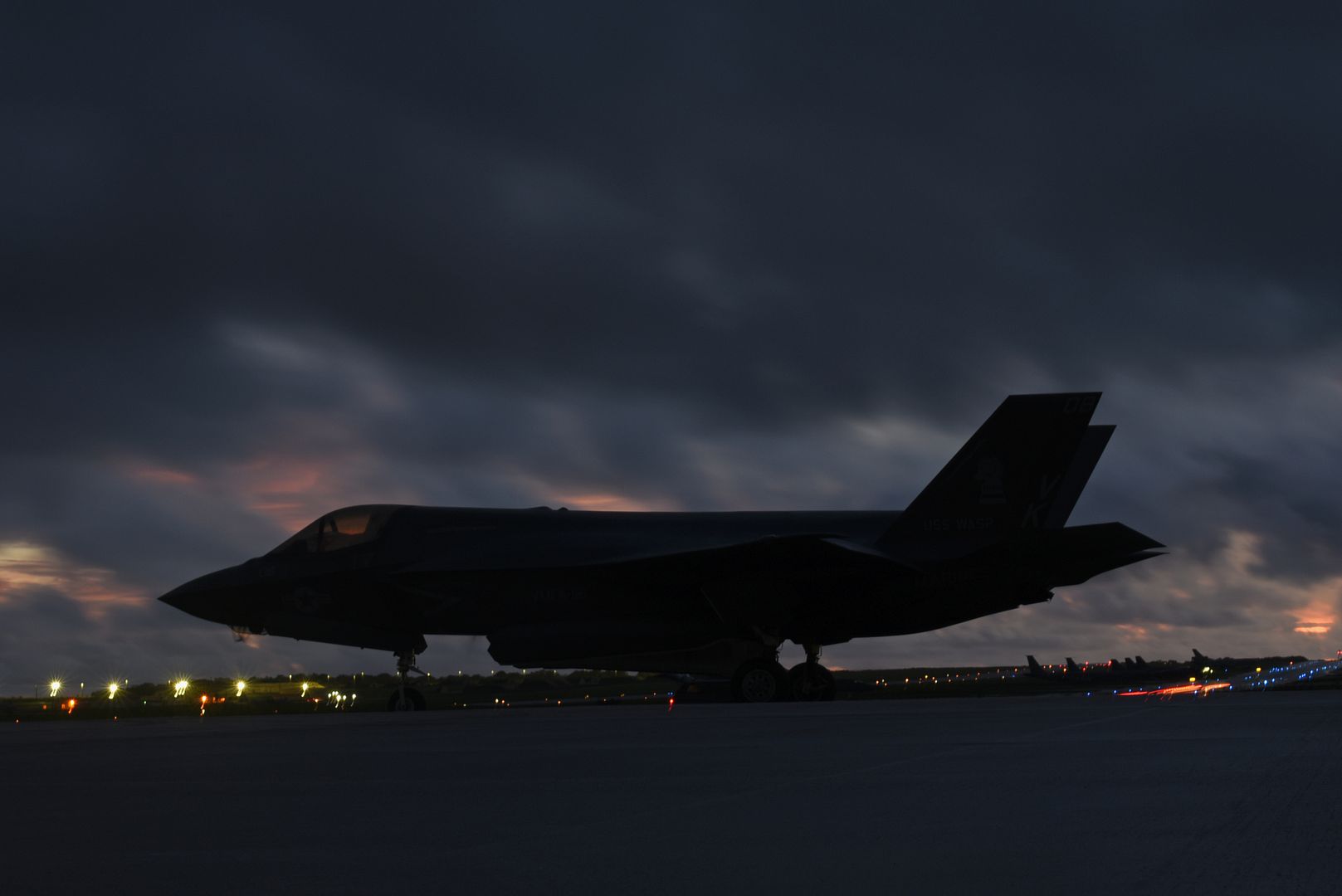
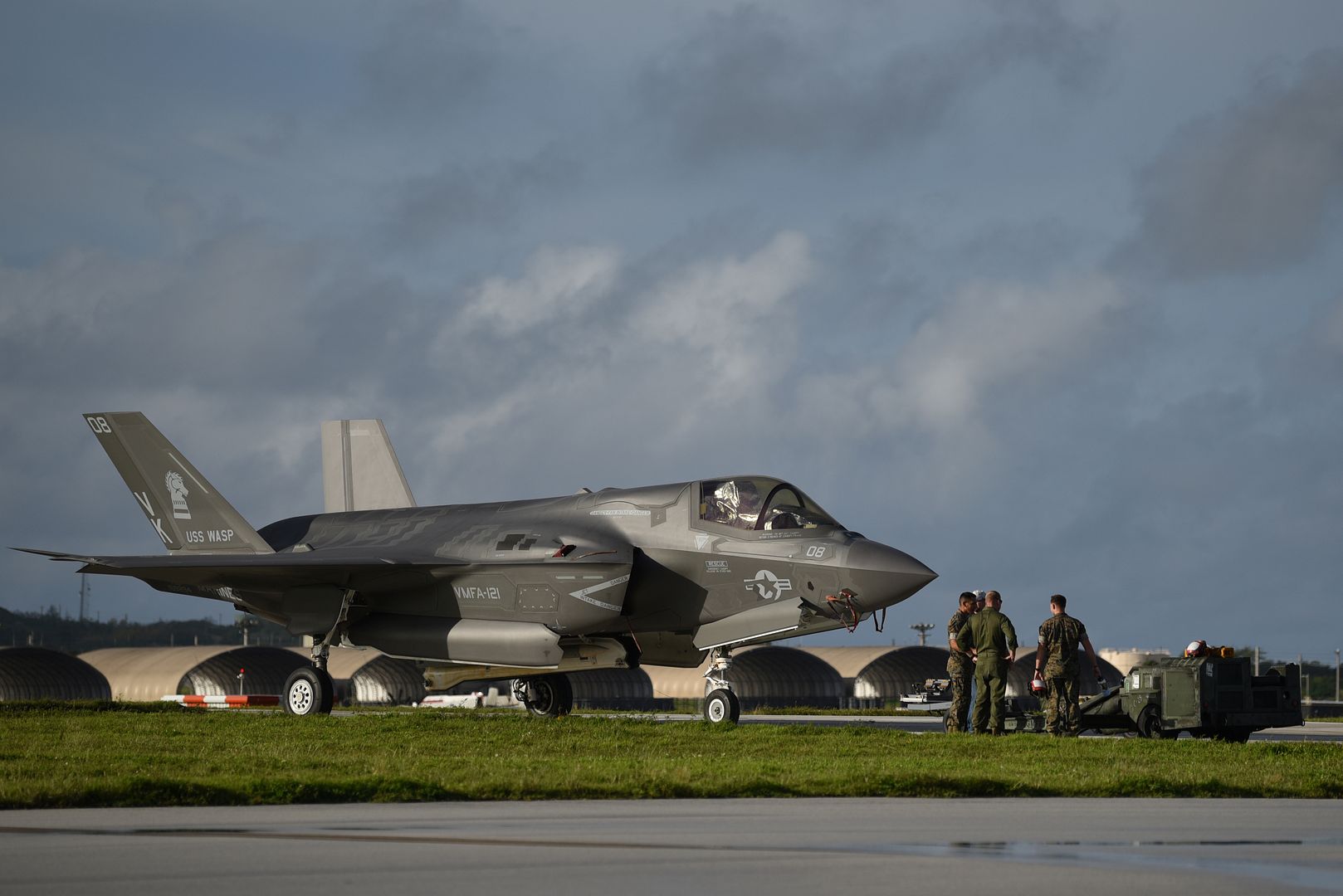
VIRGINIA BEACH, Va. (Sept. 15,2018) The Carrier Air Wing (CAG) F/A-18C Hornet from the Blue Blasters of Strike Fighter Squadron (VFA) 34 returns to Naval Air Station Oceana Sept. 15, following their sortie due to Hurricane Florence earlier this week. While most of the aircraft under the command of Commander, Naval Air Force Atlantic are returning, some assets will remain underway or stand-by in a ready status, prepared to provide defense support to civilian authority (DSCA) if requested through U.S. Northern Command. Commander, U.S. Fleet Forces Command ordered all U.S. Navy ships in the Hampton Roads area to sortie on Sept. 10, ahead of Hurricane Florence. Nearly 30 ships got underway from Naval Station Norfolk and Joint Expeditionary Base Little Creek-Fort Story as Hurricane Florence is forecasted to bring high winds and rain to the Mid-Atlantic coast. Ships were directed to areas of the Atlantic where they are best postured for storm avoidance. (U.S. Navy photo's by K.R. Jackson-Smith/Released)

Post a reply
- Go to Next topic
- Go to Welcome
- Go to Introduce Yourself
- Go to General Discussion
- Go to Screenshots, Images and Videos
- Go to Off topic
- Go to Works in Progress
- Go to Skinning Tips / Tutorials
- Go to Skin Requests
- Go to IJAAF Library
- Go to Luftwaffe Library
- Go to RAF Library
- Go to USAAF / USN Library
- Go to Misc Library
- Go to The Ops Room
- Go to Made in Germany
- Go to Campaigns and Missions
- Go to Works in Progress
- Go to Juri's Air-Raid Shelter
- Go to Campaigns and Missions
- Go to Works in Progress
- Go to Skinpacks
- Go to External Projects Discussion
- Go to Books & Resources
